From the small but lively city of Coca Ecuador, we board a longboat canoe that will take us to our awaiting ship for the Amazon river cruise. The cruise ship can only come so far up the river before the waters are not navigable.
The part of the Amazon we are traveling to has no roads, so travel must be by boat. After the last person boards, we push away from shore. Soon the longboat canoe is gliding along the Napo River (an Amazon tributary) at almost 40 miles per hour zigzagging left and right to avoid sandbars as the jungle view passed by us.
After one and a half hours, the canoe begins to slow, and we see the three-story river cruise ship that will become our home for the next seven nights.
It is late afternoon, and although there are no creatures in sight, we hear the loud hiss of insects.
Exploring the Amazon on an Amazon River Cruise
What were the adventurous passengers and ourselves looking forward to on our Amazon River Cruise? Going deep into the jungle to explore and discover the wonders of the Amazon. To be fascinated by the diversity of wildlife in its entire splendor. Of course, we had friends and family that warned us to be careful of the monstrous insects, flesh-eating piranha, snakes large enough to eat a man and barbaric tribes ready to spear intruders. We saw piranha, a 22-foot snake and indigenous that still used spears, however, it was only the mosquitos that ever worried us.
The Most Ferocious Predator of the Amazon
Speaking of mosquitos, our first defense against these bugs was to try to wear long pants and long sleeves. Most commercial insect repellants contain DEET. DEET is not environmentally friendly. It can be toxic to birds, fish, and aquatic invertebrates especially in the pristine jungle of the Amazon. Our guides actually asked us never to spay even the natural insect repellant while we were in the jungle. So before we would head into the jungle, we would all cover our exposed skin with a plant-based insect repellent. We like EcoRaider Mosquito Repellent. Some people think you need a product containing DEET to keep away the bugs, but EcoRaider worked very well. No bites the entire trip.
Luxury in One of the Most Remote Places on Earth
The Anakonda Amazon River Cruise visits remote areas of the jungle that few have had the opportunity to experience while enjoying the comforts, and services of a boutique hotel. Each day the ship issued an itinerary including the first night.
The Creatures of the Night
After a scrumptious dinner, we boarded one of the motorized canoes and were off into the dark of night. We made our way to land for a nighttime forest walk to observe the forest’s nocturnal activity and experience the thrill of the vivid noises and aromas that only exist after dark. We all donned headlamps, and soon our eyes adjust to the dim light A new world opens up to us. At this time many animals were asleep, but others emerge, making the Amazon their own. Most of the creatures of the night we saw were giant insects and frogs.
Our jungle night walk gave us a chance to see the nocturnal beings of the Amazon Rainforest. In deep darkness, surrounded by loud jungle sounds and with the help of powerful headlamps, we entered a world populated by the unique, diverse and shy creatures of the night.
Up Close with Flesh Eating Fish and Adorable Pink Dolphins
On another day we visited blackwater areas filled with piranha. We saw cute pink dolphins playfully come out of the water. Pink dolphins are toothed, freshwater dolphins that feed on catfish, tetras, and piranhas. The dolphin can be grey, pinkish grey or pink. But when the dolphins get excited, they can flush bright pink, similar to humans blushing. Despite living in small groups, they are curious and outgoing animals, and often interact with humans. The same waters we found the dolphins in is filled with Piranhas. We didn’t know this until we put our underwater camera in to try and capture the dolphin moment. When we previewed the footage of our underwater camera, we were shocked to see hundreds of piranha in the frame.
The locals used to heavily hunt the pink dolphins until they realized they might cause the dolphins extinction. Amazonian people understand the importance of biodiversity. Now instead of eating the dolphins the local tribe of the area provides dolphin education. We even visited an area where we could feed the pink dolphins. The locals have trained the dolphins to come for food when they hear this tapping sound on a pipe submerged in the water.
The chief of the local people enjoyed talking to our group. He and his people love the Amazon. They are the people who used to hunt the dolphins. Now they educate people who travel through this part of the Ecuadorian Amazon. He told us his people treasure the close family relationships they have.
Animals in the Wild
What is unique about this Amazon river cruise is that you witness the wildlife in their natural surroundings, not a sanctuary or zoo. Sometimes that meant we waited. Our guides, all of who are Amazonian and grew up in this area of the Amazon could spot the wildlife with ease. We visited an area to see pigmy monkeys, it took a little time, but eventually, we were all in awe of these tiny monkeys, on average 5 inches tall, using their insect-like claws to make their way from tree to tree. Pigmy monkeys do not have opposable thumbs. Pigmy monkeys are the smallest monkey and one of the smallest primates in the world. They favor the river-edge forests of the Amazon. These energetic monkeys move behind tree trunks and branches, freezing then fleeing, much like squirrels. It also has brown fur and a long tail similar to a squirrel.
Adorable Friends
Speaking of monkeys, I made a monkey friend on one of our day trips to the jungle. There was this male monkey who many of us were photographing when it was time to start a hike in search of unusual Amazonian plants. I liked the monkey, and I wanted to stay and talk to him. As I talked to the monkey, I edged closer and closer to him. As time went on, he was just as curious of me as I was of him. Similar to approaching an unknown dog I let him smell my hand. In time I was giving him hand massages and back scratches.
By Day Some Creatures Sleep
One morning we set out in the longboat to investigate some tributaries of the Napo River. As we quietly glided along the water, we saw a down tree crossing part of the river. As we approached the tree, we saw that the fallen tree contained tiny sleeping bats. There are numerous species of bats in the Amazon jungle. Of course, at night you can see them fly all over the sky. But in the daytime, some species sleep hanging from low branches or in our case a down tree trunk above the river water. They blended in with the bark of the tree. If our guides didn’t point them out, I’m sure we would have missed seeing them entirely. We did not disturb these resting creatures.
Visit the Parrot Clay Licks
On another day we ventured out before dawn. We set out again in the longboats to observe one of the most incredible sights in Amazon – the Parrot Clay Licks. Parrots, parakeets, and macaws visit the clay licks at dawn and stay about an hour, so it is necessary to get to the area early. Located in the Yasuni National Park in Ecuador, on the Napo River, is one of the biggest parrot clay licks. It’s a natural formation caused by erosion where parrots, parakeets, and even macaws come to daily. This unique place is rich in minerals. Parrots eat a variety of toxic berries and fruits and the minerals the clay contains counteracts the toxicity. The day we visited we saw five different parrot species.
A View Above of the Amazon Canopy
We also visited multiple Amazon communities where we learned about their ancestral culture, traditions, and cuisine. At one such place, we visited a canopy tower, built against a giant Kapok tree. This canopy tower is in the Napo Wildlife Center which is one of the greatest ecolodges of Ecuador’s Amazon Rainforest — carefully designed by the local community, the Kichwa, to provide visitors with great style and comfort.
The view at the top of this observation tower is truly magnificent, looming above the lush treetops it provides a vision of the vastness of the Amazon Basin. Halfway up on an observation platform, our Amazon river cruise hosts provided a champagne toast to the beauty of the Amazon region.
Staple Food of the Amazon
At another Amazon community, we learned how the tribes make flatbread from cassava. Cassava is a shrub native to the Amazon. In other parts of the world, they call it yuca and arrowroot. We also get tapioca from the extract of the cassava plant. Cassava is used in many Amazonian dishes and is the main ingredient in flatbread. When cooked, the texture of the bread can be similar to a tortilla or crepe. From what we learned, cassava flatbread is a staple in many Amazonian homes. It is also a common street food in larger towns and villages.
The community demonstrated how they first peel the cassava root and then grate it. We each took turns grating some of the cassava. Once the cassava is grated, all that is needed is some salt, and the mixture shaped into flatbread. The bread which is cooked on a grate over an open flame is simple yet satisfying.
At one of the villages, we got to have a typical meal which included a grub. I wouldn’t eat it but Keith did. And he said it didn’t taste like chicken. He thought it tasted good as long as you didn’t think about what you were actually eating.
Many Animals and Even an Anaconda
We visited the Yasuni National Park, a pristine and undisturbed region of the Ecuadorian Amazon. While we there we saw vultures eyeing our lunch pavilion hoping for dinner when we left.
In another blackwater lake, we saw giant otters. Giant otters are the longest member of the weasel family and prefer freshwater rivers and streams as their homes. The otters swim by propelling themselves with their powerful tails and flexing their bodies. They also have webbed feet and water-repellent fur to keep them dry and warm. Their nostrils and ears close when they are underwater.
And although we saw numerous birds and probably six different monkeys the biggest sighting of this trip was an anaconda.
Contrary to what movie producers will have you think, very few people have ever seen an anaconda in the wild. The one we saw was 22 feet in length. It had eaten recently and was sunning himself in the marsh. So it didn’t feel like slithering away when we approached. They eat big game only twice a year. Ecuadorian anacondas are land and water snakes. Anacondas have nostrils and eyes on the tops of their heads; this allows them to see above the water while remaining almost submerged.
More Amazonian Creatures
Keith and I were impressed by the number of wild creatures we saw on this trip. On every hike we took into the jungle we saw more and more. Sometimes we saw monkeys, but most of the creatures were insects, and some of them were huge. Also, I think on every canoe trip we took down the smaller rivers, we saw new and interesting birds.
Unusual Yet Beautiful Flora
We saw many animals, but we also saw lots of unique plants and fungi. Many fungi of the Amazon help other fungi or plants to live, so they are co-dependent on one another. The mushrooms and fungi found in the Amazon of Ecuador are essential components of the Amazonian ecosystem as decomposers, and they represent one of the most biodiverse groups of organisms on earth. I think some of them are beautiful.
Being from Ecuador, we see achiote or annatto in our foods regularly. Annatto is an orange-red condiment and food coloring derived from the seeds of the achiote tree. When used in small amounts achiote is a food colorant and has no discernable flavor. When used in larger amounts achiote adds a peppery flavor. Even though achiote is in every meal here in Ecuador, we have never seen the achiote tree. While having lunch in the Yasni National Park, we saw young achiote trees and others with mature, ripe achiote. I could never have imagined a tree with these unusual, heart-shaped vivid red flowers with stiff spines on them.
Trees that bleed
We also saw medicinal plants that are used regularly by the people of the Amazon. Probably the most amazing is a tree that is called Dragon’s Blood. The Dragon Blood tree is a tall tree. The one we saw bore diagonal slashes. Our guide explained that locals had previously cut into the tree with a machete’ to yield the healing resinous sap for which the tree is justifiably famous. All skin injuries including cuts, bites, burns, stings, rashes, abrasions, sores, and wounds benefit from the applying of the healing red sap of this tree. Our guide made a fresh cut in the tree and it bled, or at least that is what it looked like to us. The sap of this tree is red and aids in the healing of all skin issues.
Life on the Boat
The guides on this Amazon river cruise could not be more knowledgable, and they had a knack for spotting wildlife. Maybe this was because they grew up in this rainforest. But, the experience would never have been as great if we did not have a wonderful place to come back to each day. The rooms onboard the ship are spacious, have nice decor and the air conditioning works well! The ship has a bar and both indoor and outdoor, well-appointed common areas.
Best of all they have an amazing chef and kitchen staff. They are ready to accommodate any special diet request while serving gourmet meals to all. I eat a whole food plant-based diet, and they made sure there was always something great for me to eat. Everyone eats breakfast, lunch, and dinner together. They have water, coffee, and snacks available 24 hours a day.
All of the passengers would gather in a room each night. The guides make a presentation of what to expect the next day as well as a map to show the passengers where they are on this Amazon river cruise.
Amazonian Handicrafts
One afternoon when we returned to the ship for the day, we learned to make what Amazonians use daily. Handicrafts are important, functional items that the Amazonian people create to make their everyday life easier. One of our guides showed us how he would make a sachel to wear on his shoulder to carry things he had gathered from the jungle to his home.
A Once in a Lifetime Trip
There is nothing like gliding along the river through the Amazon. Venturing on shore is thrilling and wild. The Amazon jungle is massive. The Amazon rainforest accounts for more than half of the world’s remaining forests and produces twenty percent of the world’s oxygen. You need to take a walk for yourself into the Amazon to understand the great plant biodiversity. If you are quiet, the remoteness of the area allows you a chance to see animals as they live in the wild.
There are some eco lodges in the Amazon, but you can see so much more and reside in luxury on an Anakonda Amazon River Cruise. An Anakonda Amazon River Cruise is the best way to experience this diverse part of the world.
Here’s a last look at the sun setting on the Napo River.
QUICK ANSWERS
There are only two ways to get to the many areas that don’t have roads in the Amazon, either by hiking or boat.
Be sure and read the other adventure we had in the Amazon jungle. Or while in Ecuador, do another cruise in the Galapagos Islands.
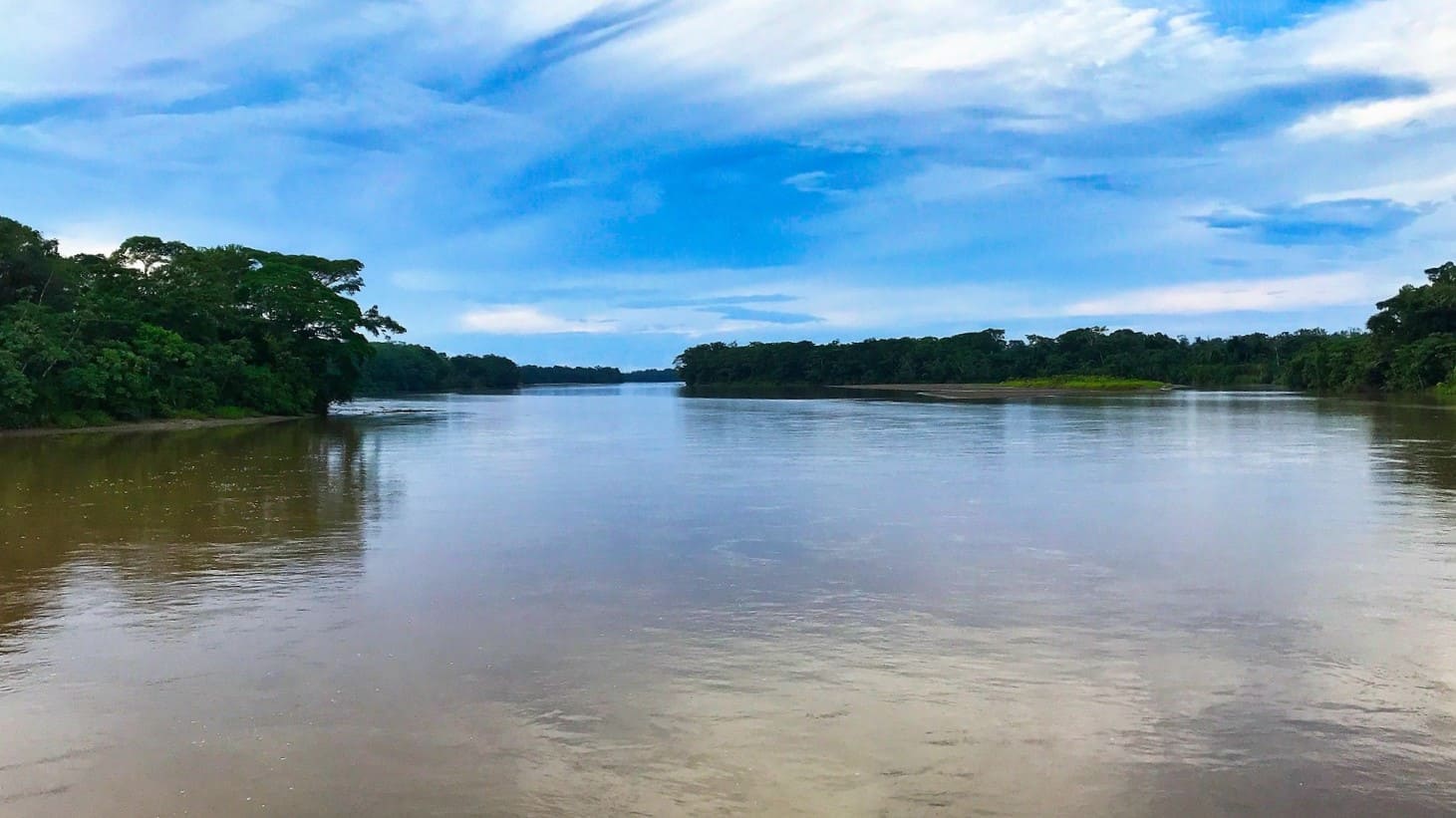
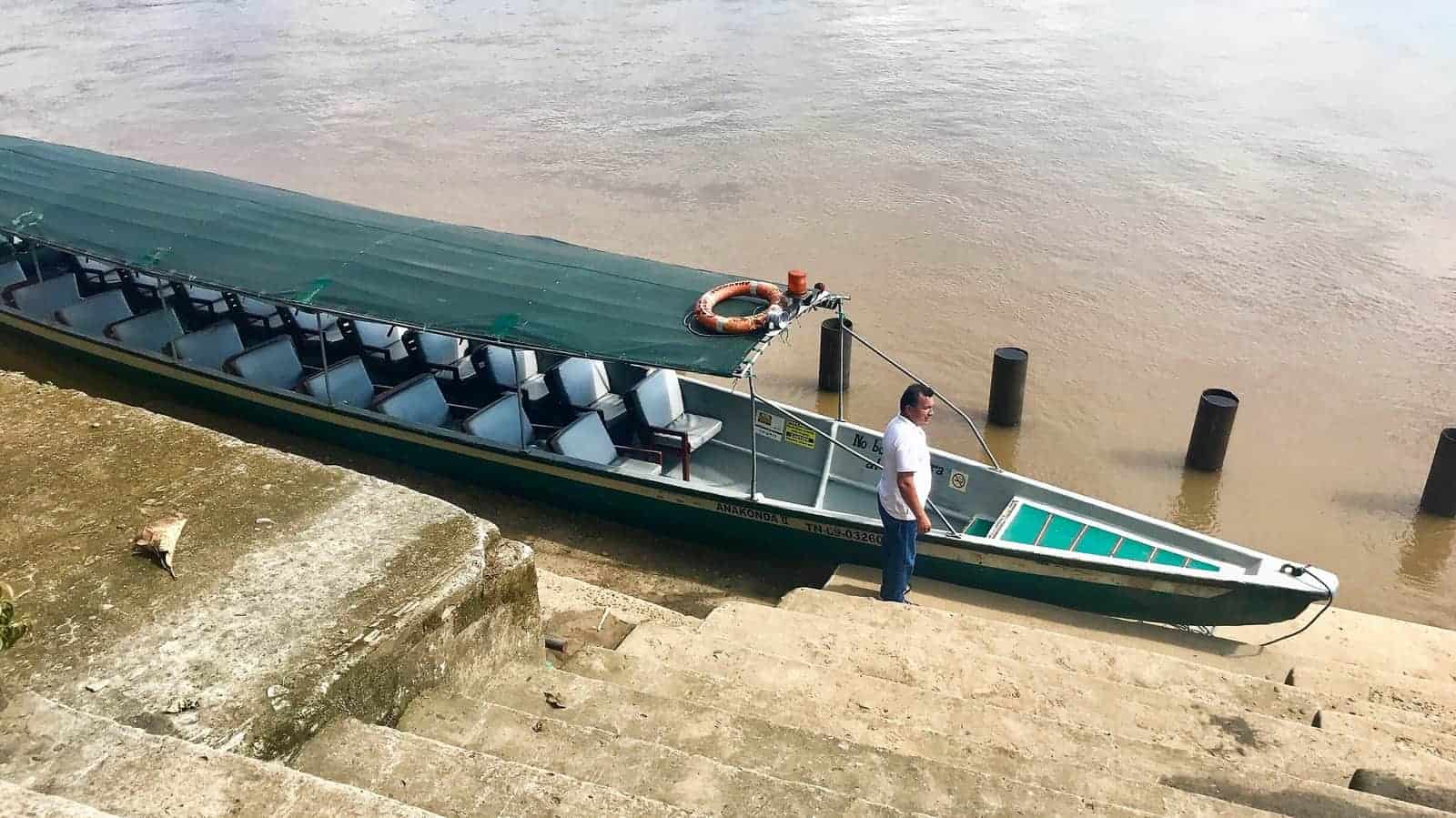
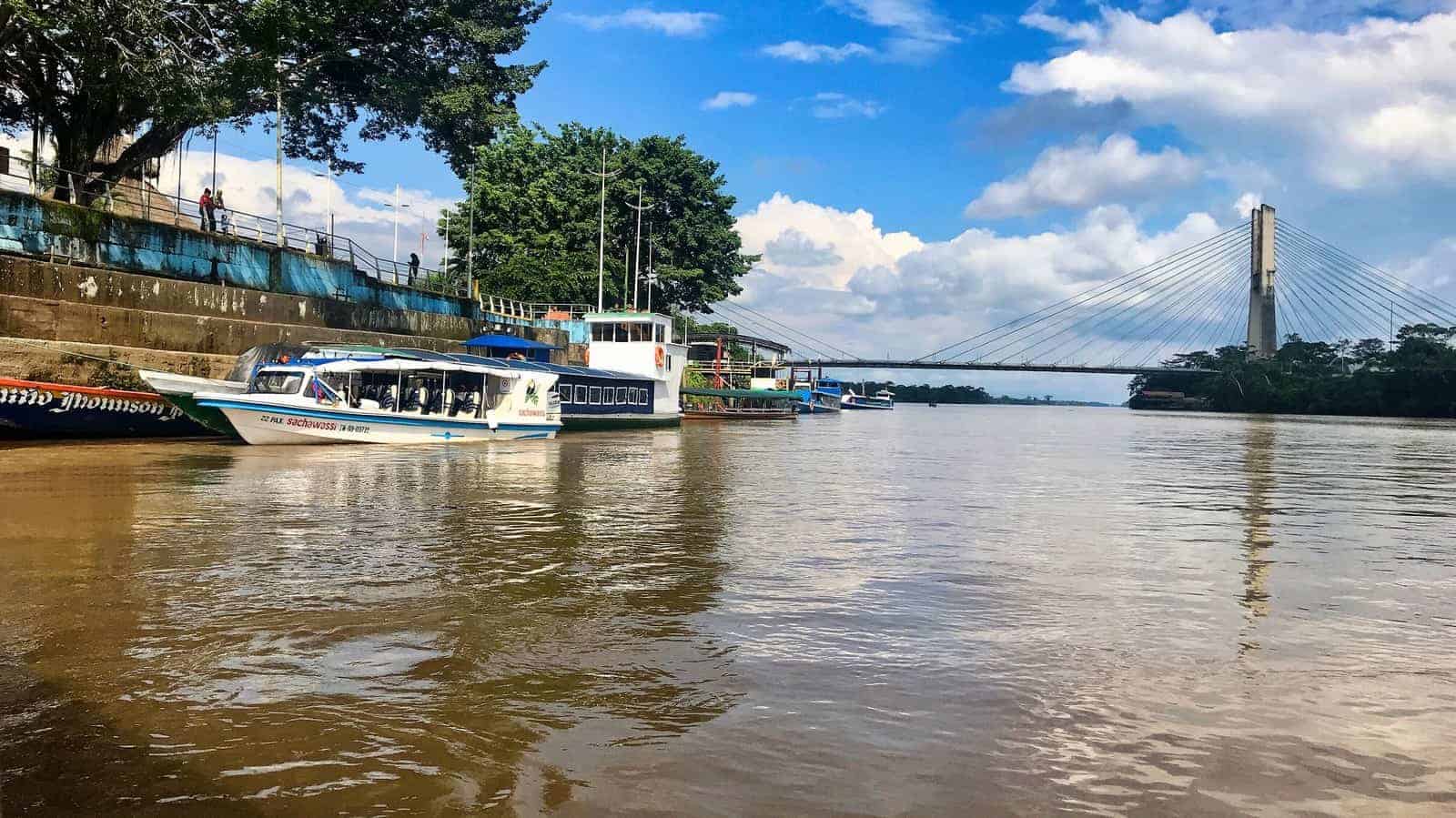
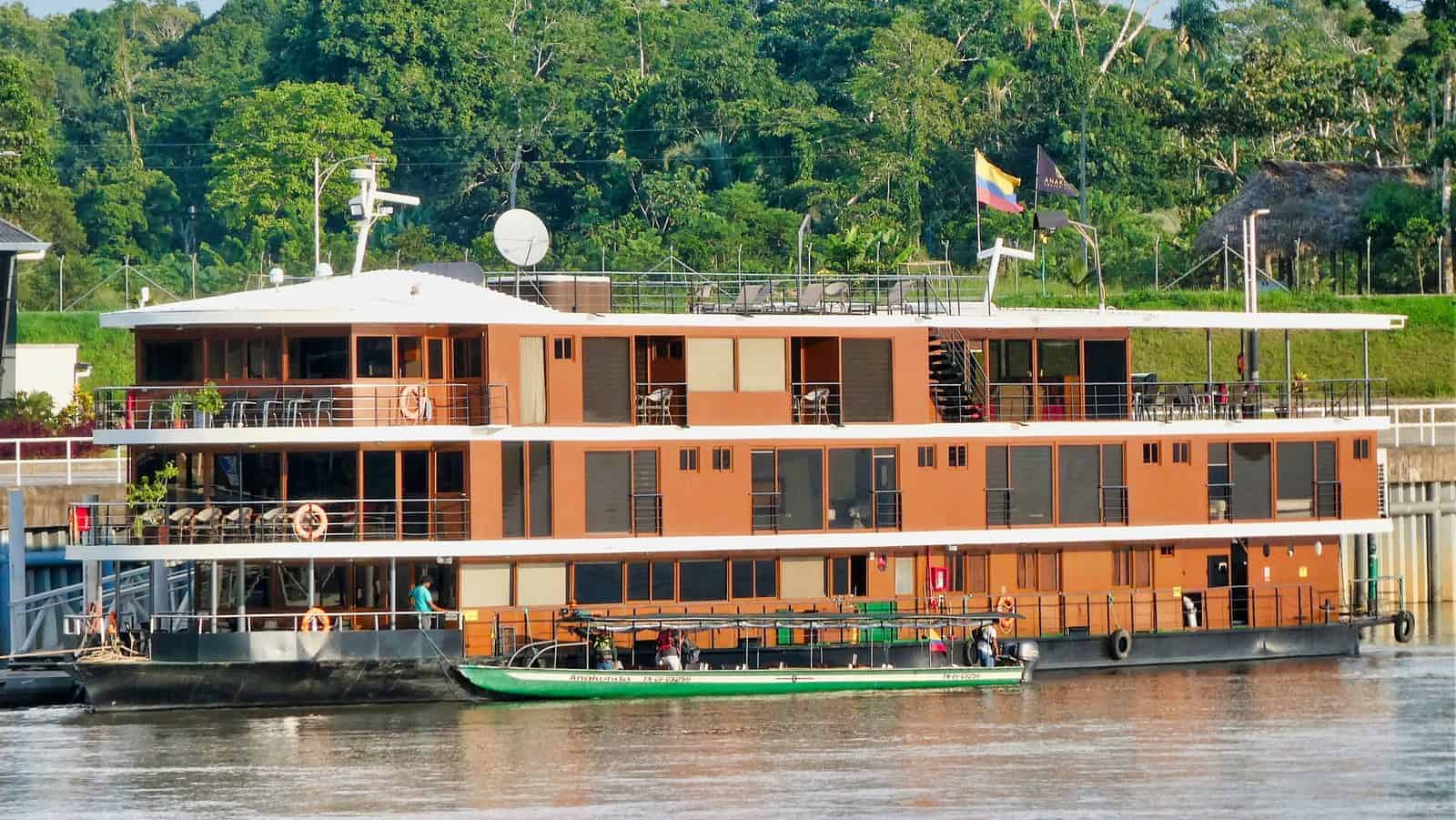
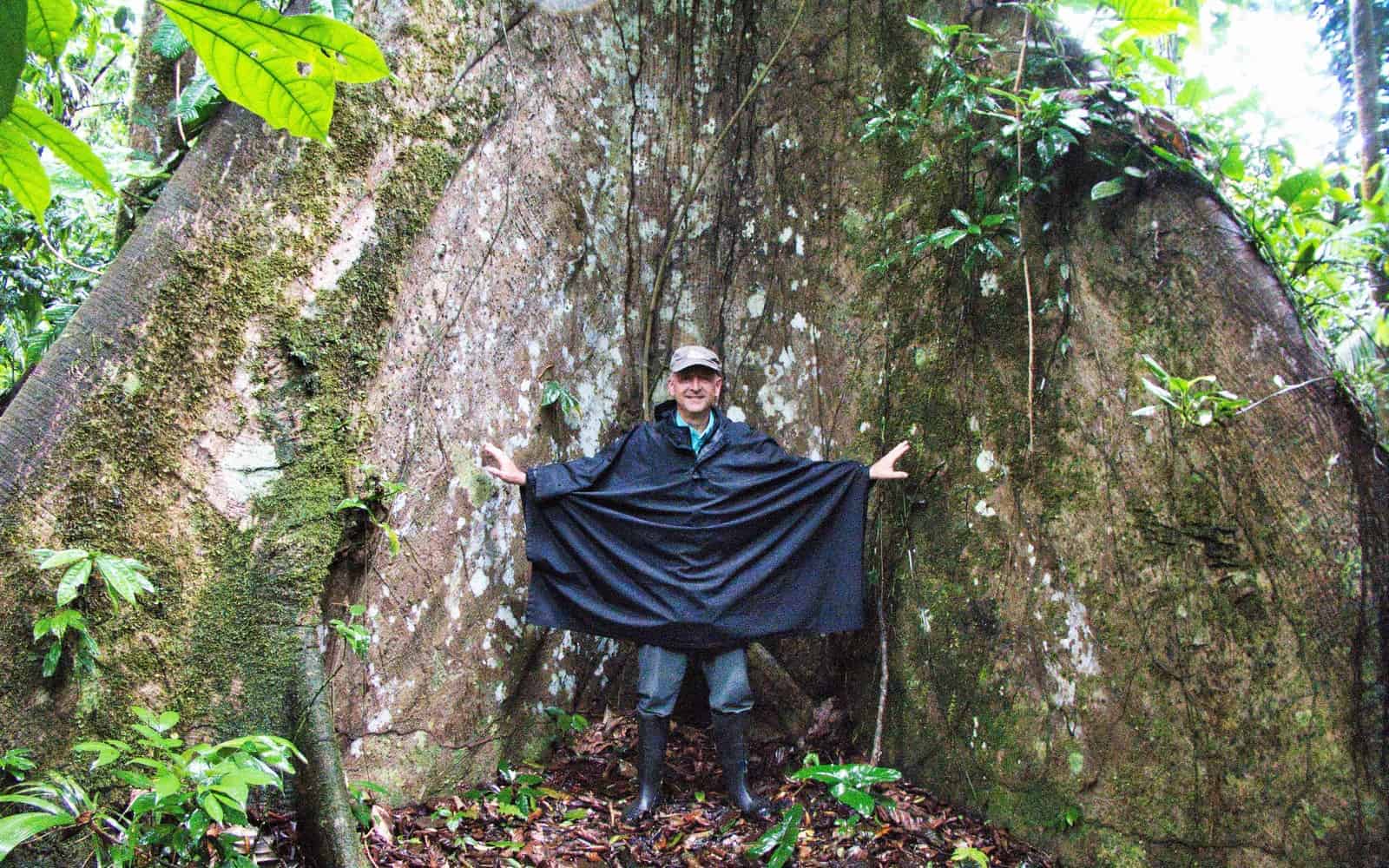
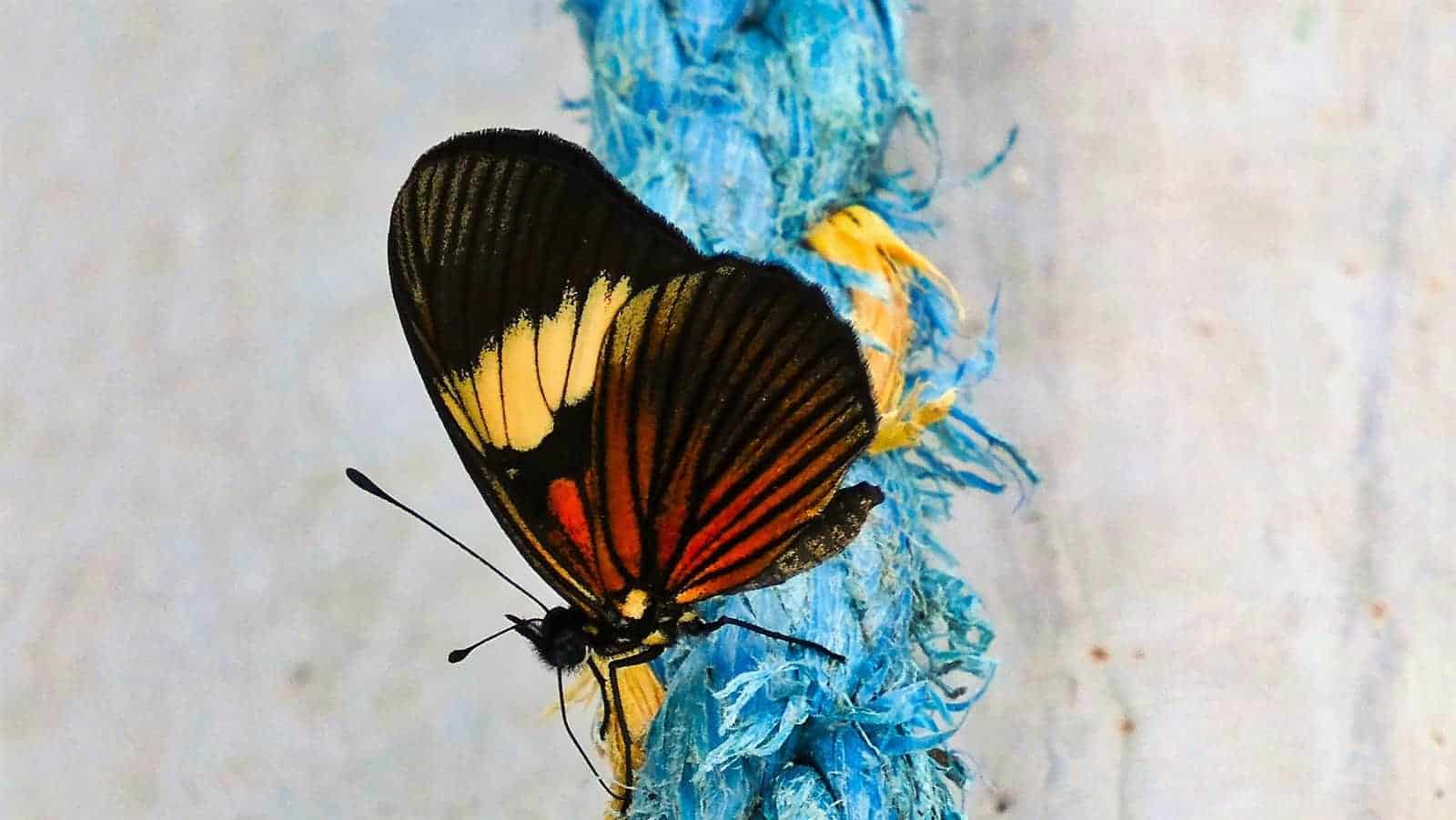
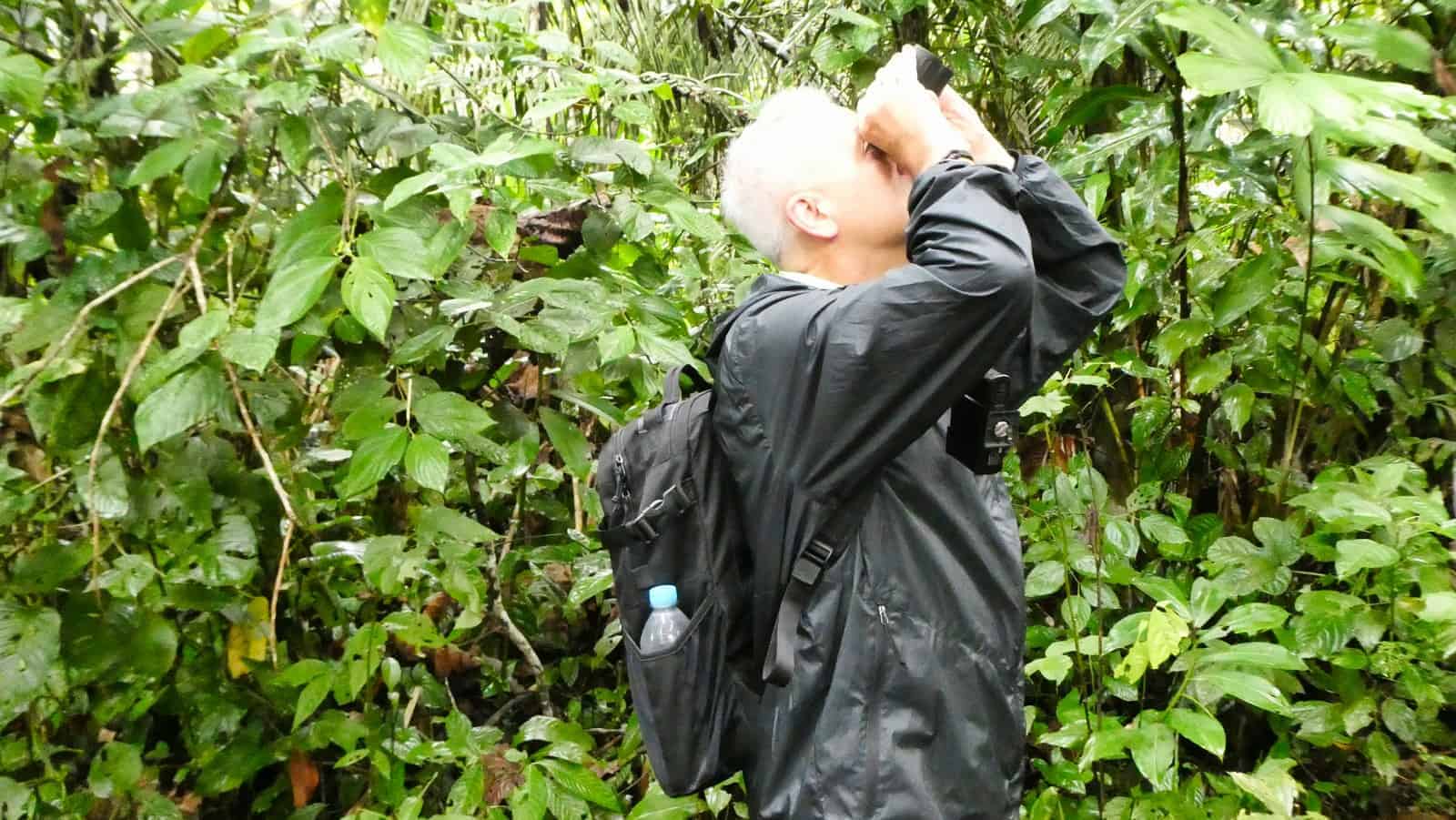
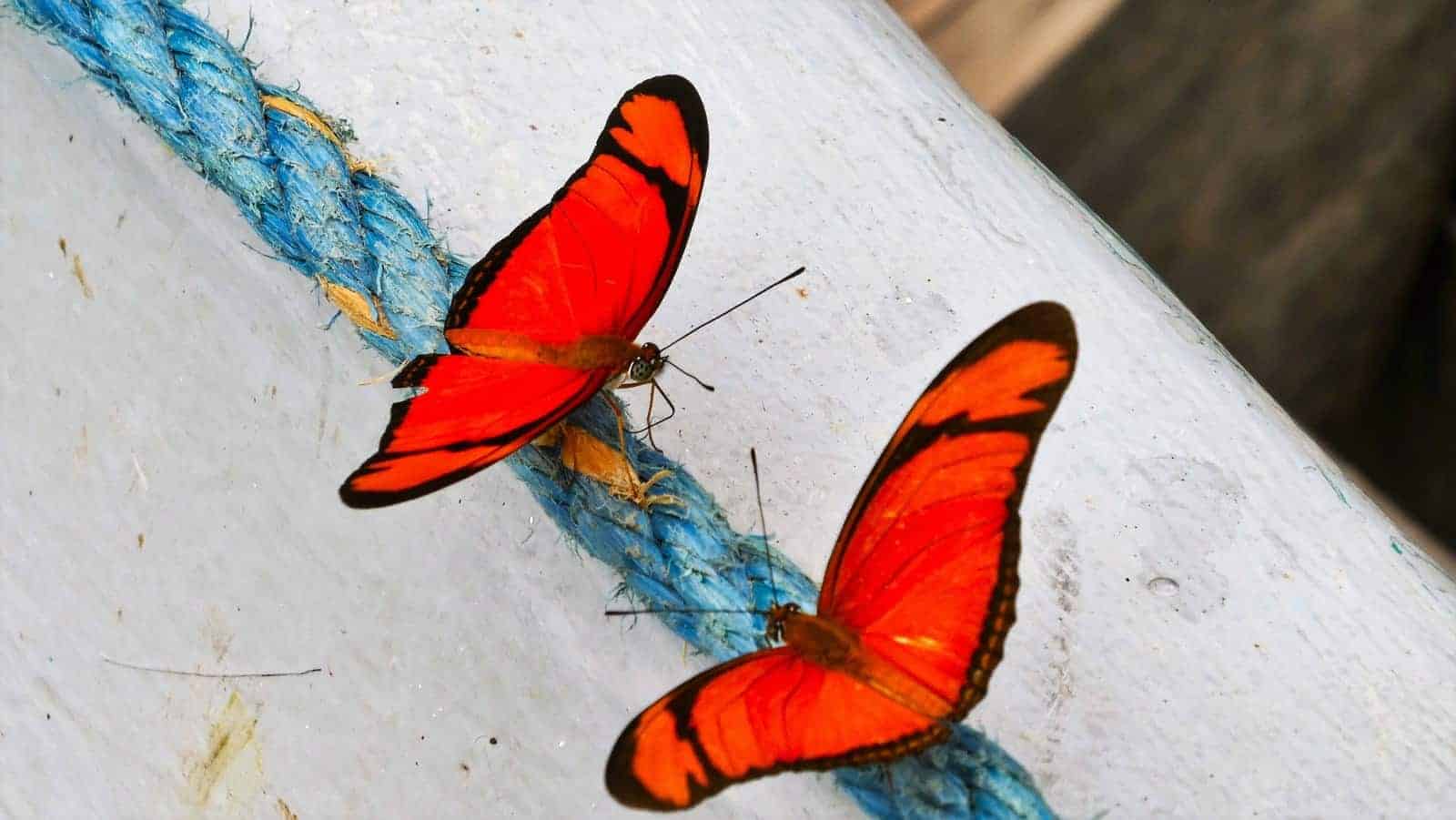
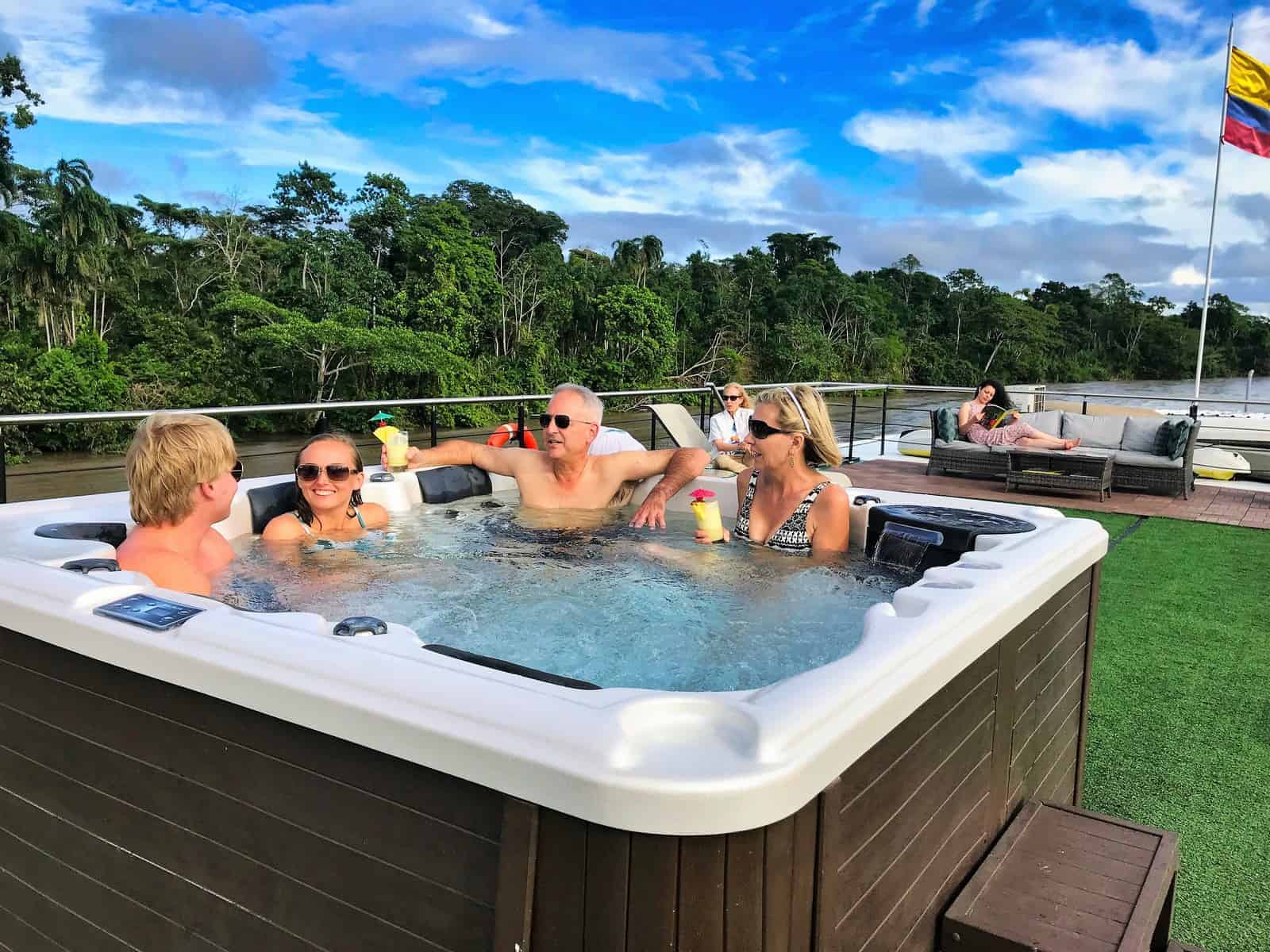

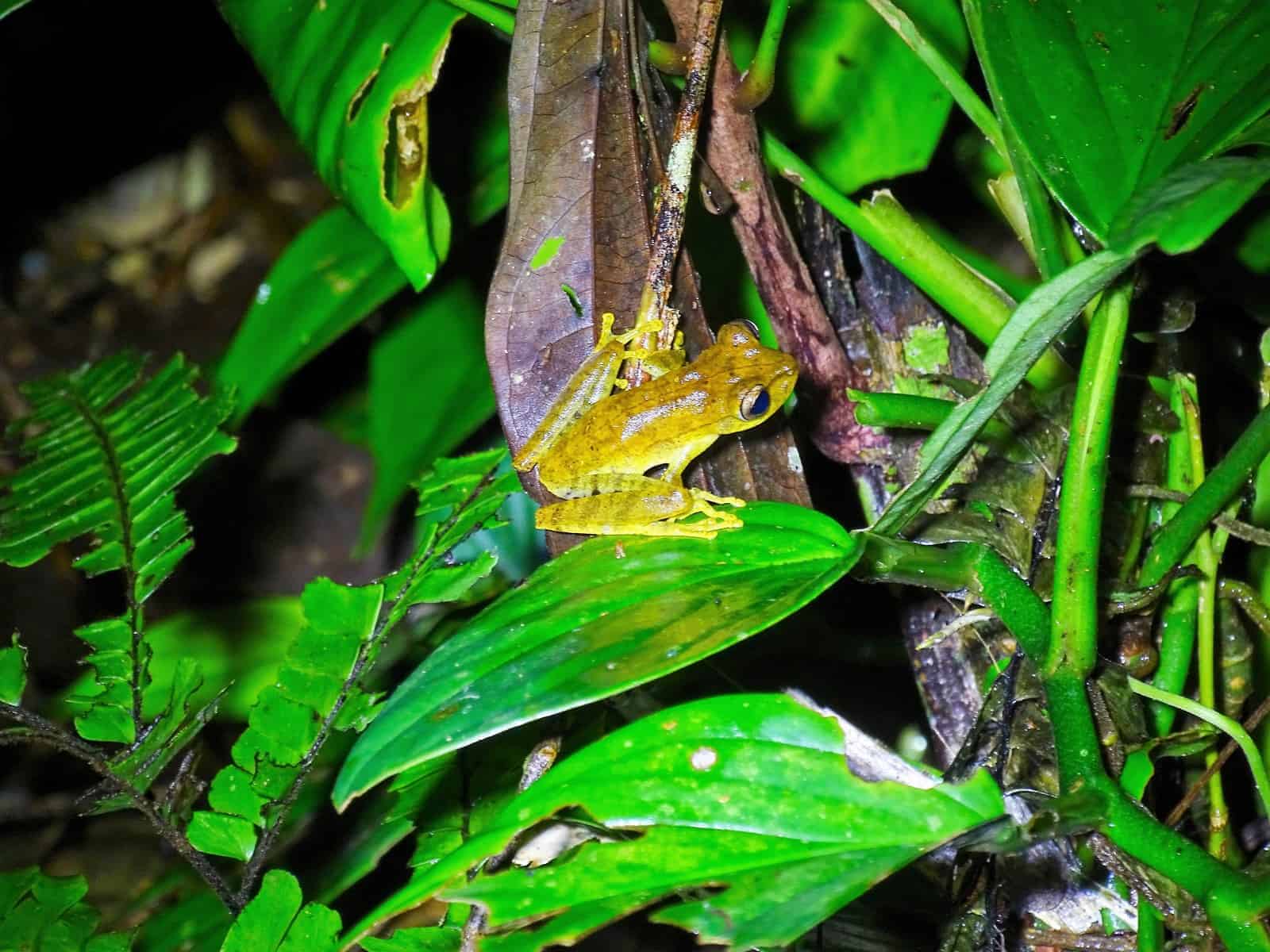
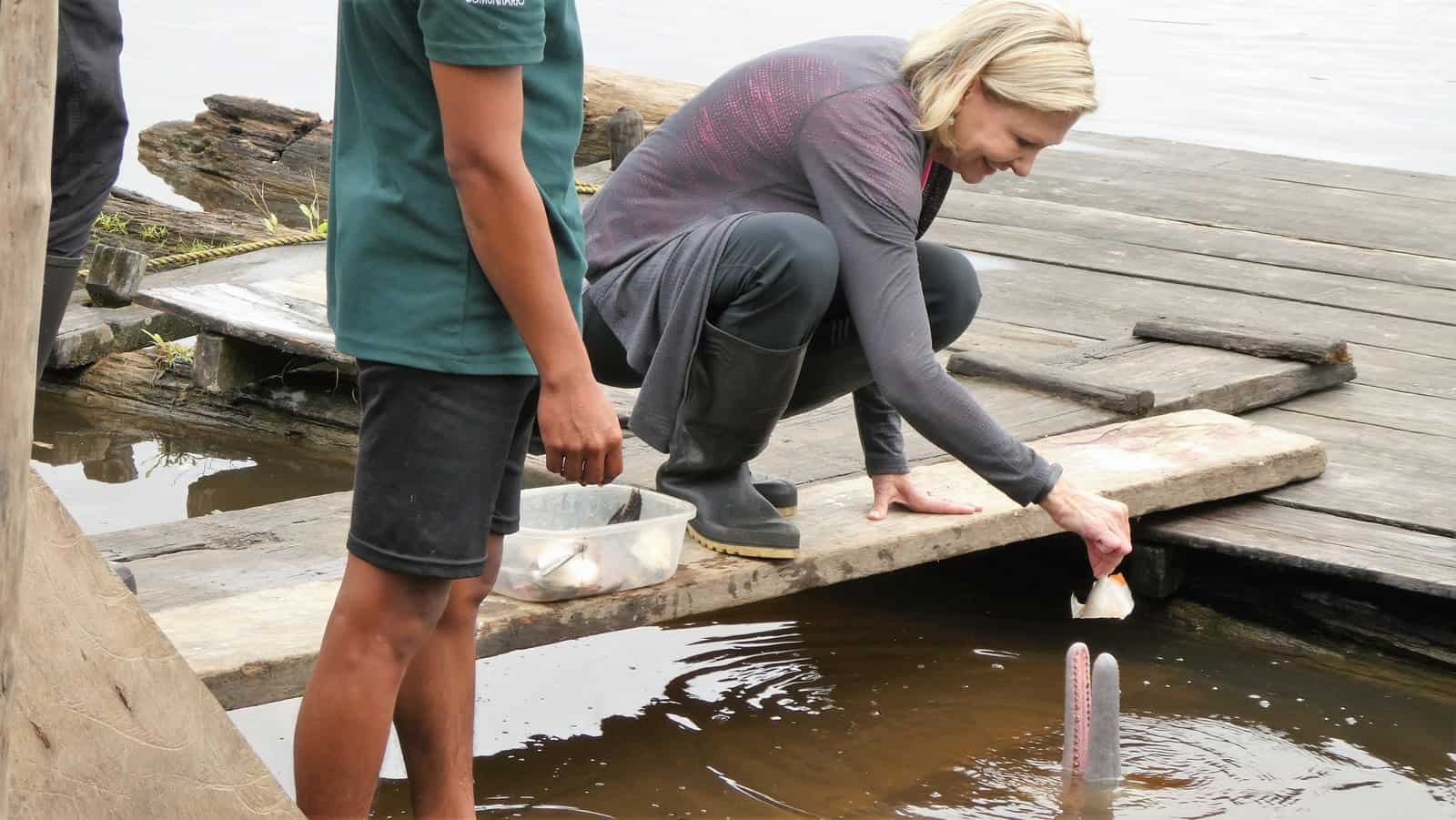
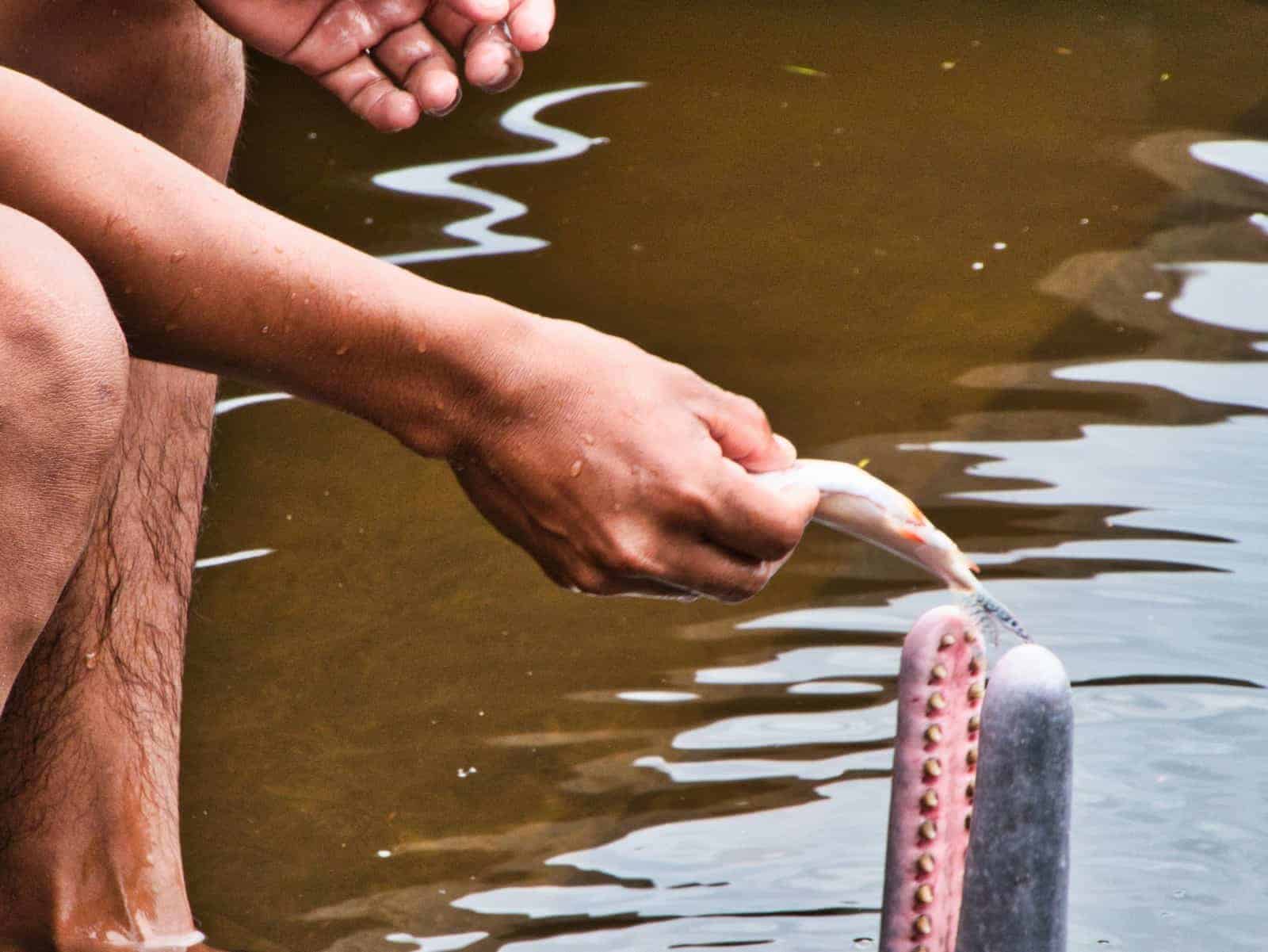
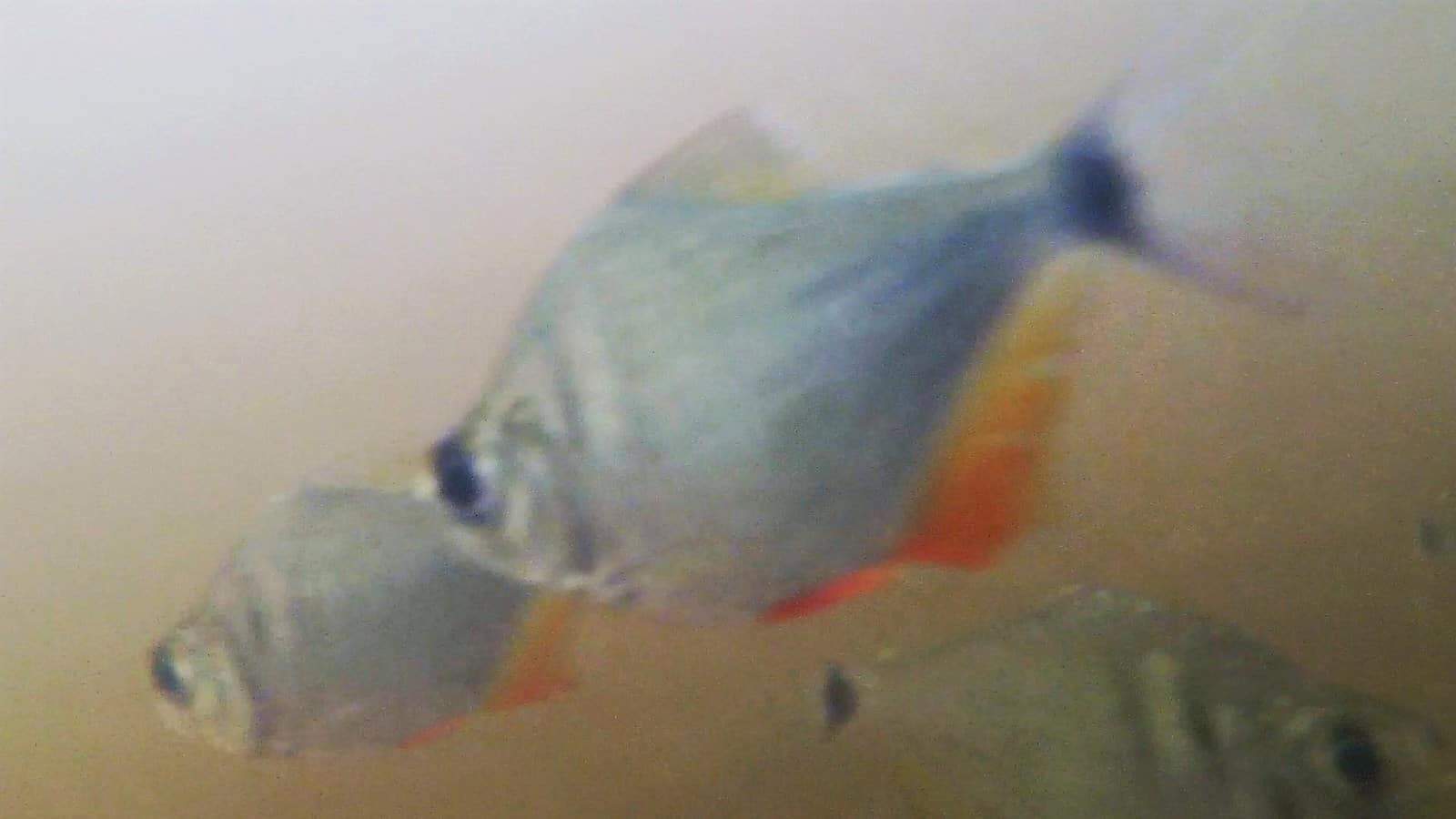
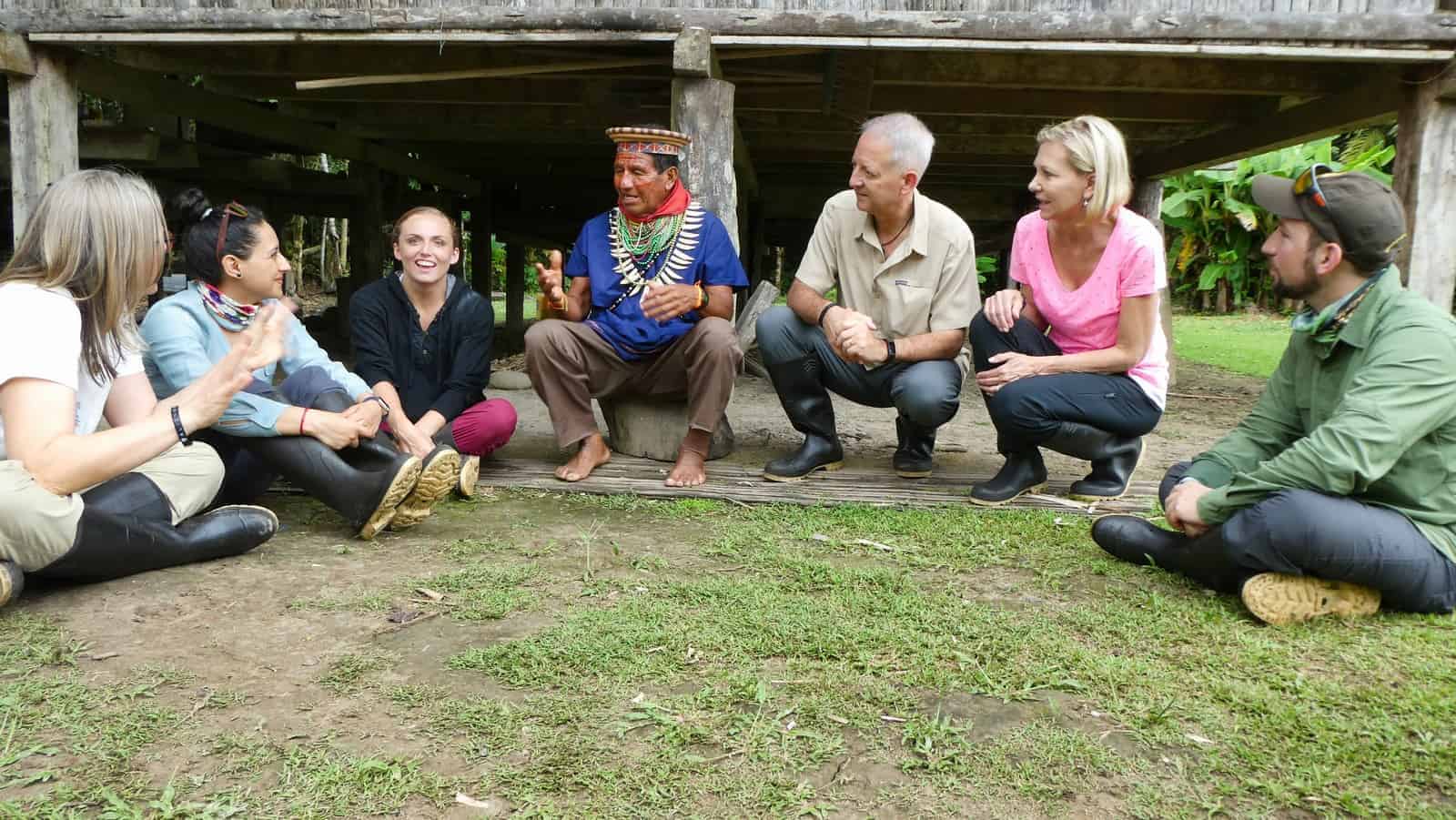
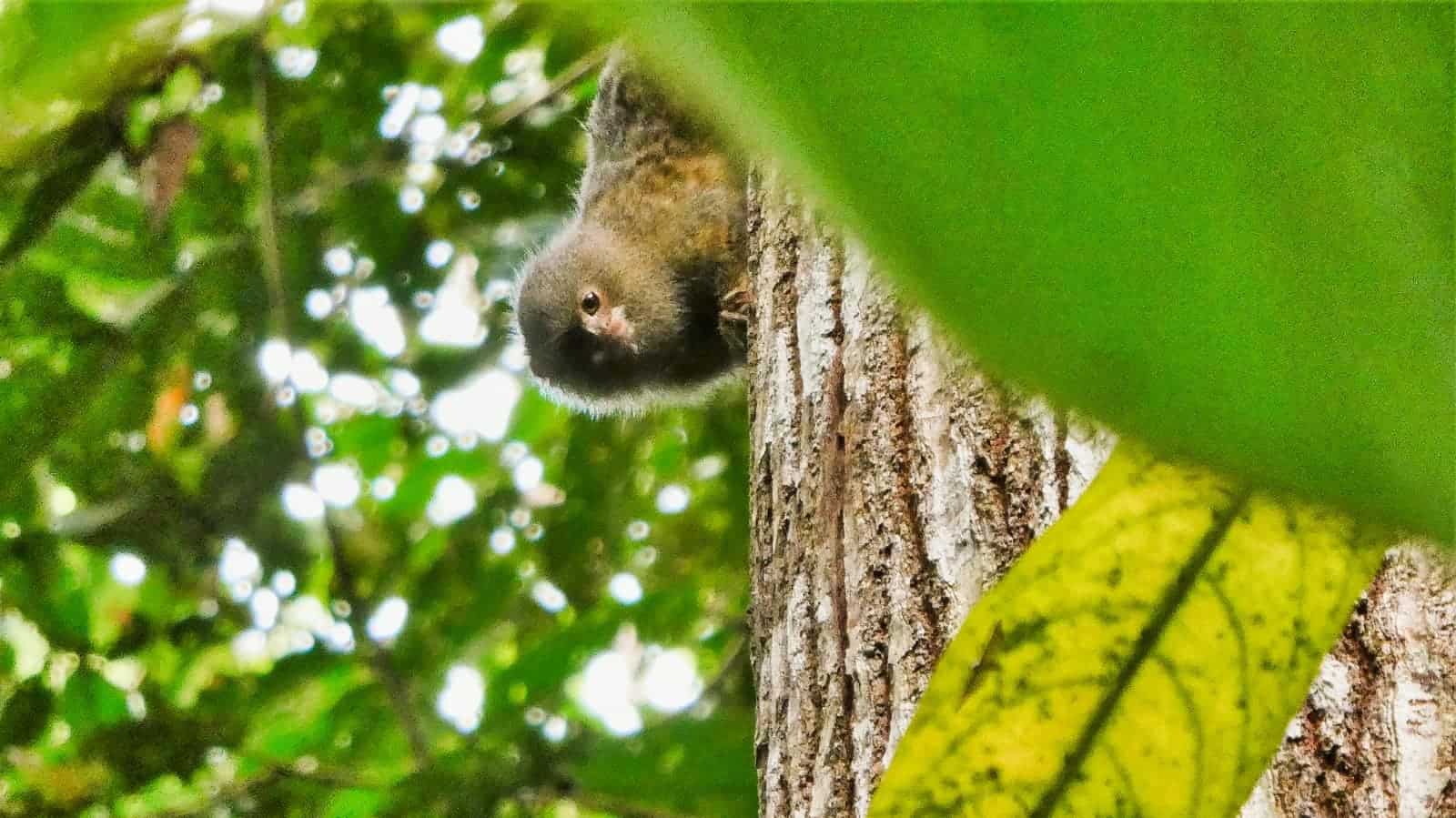
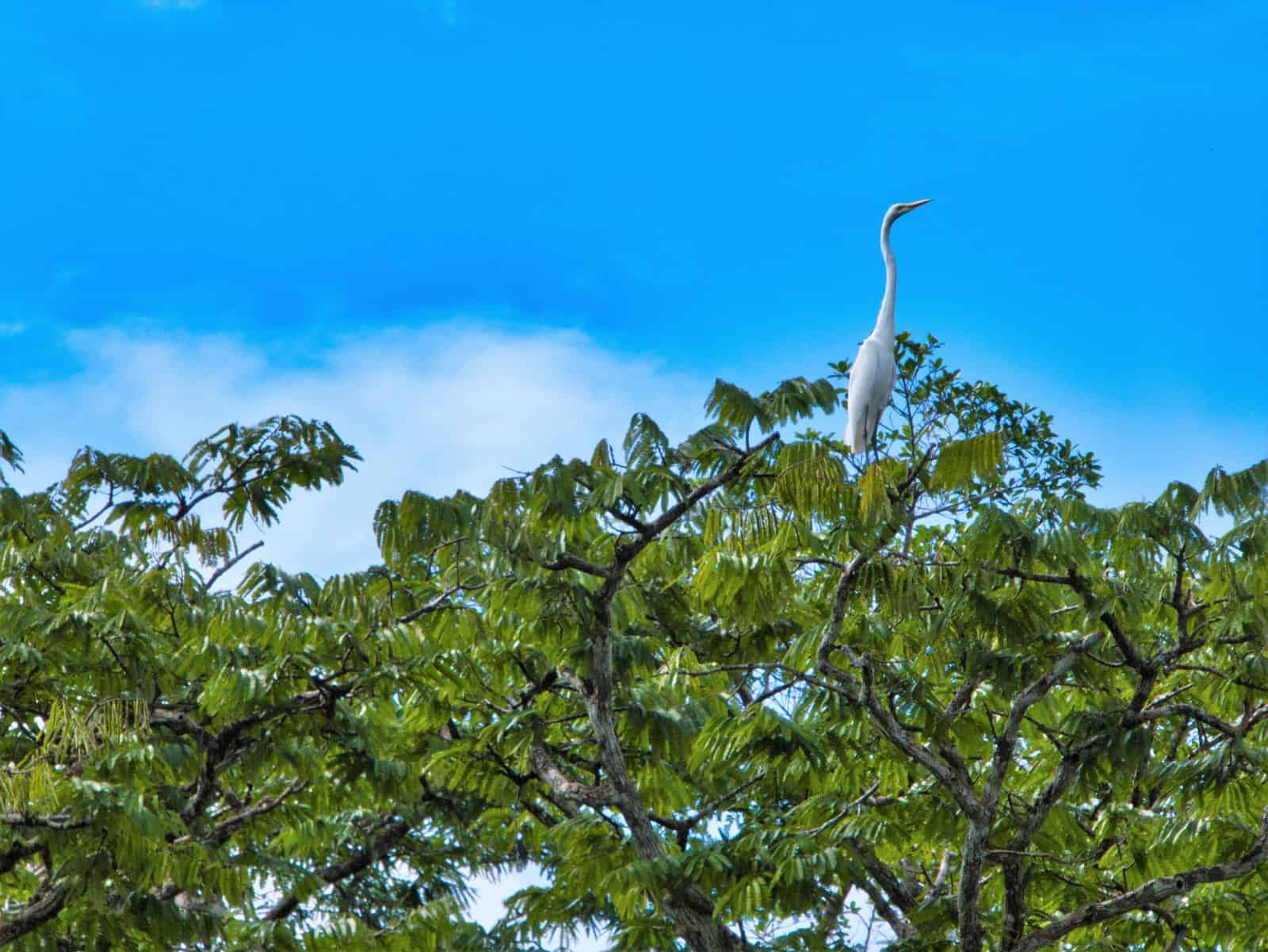
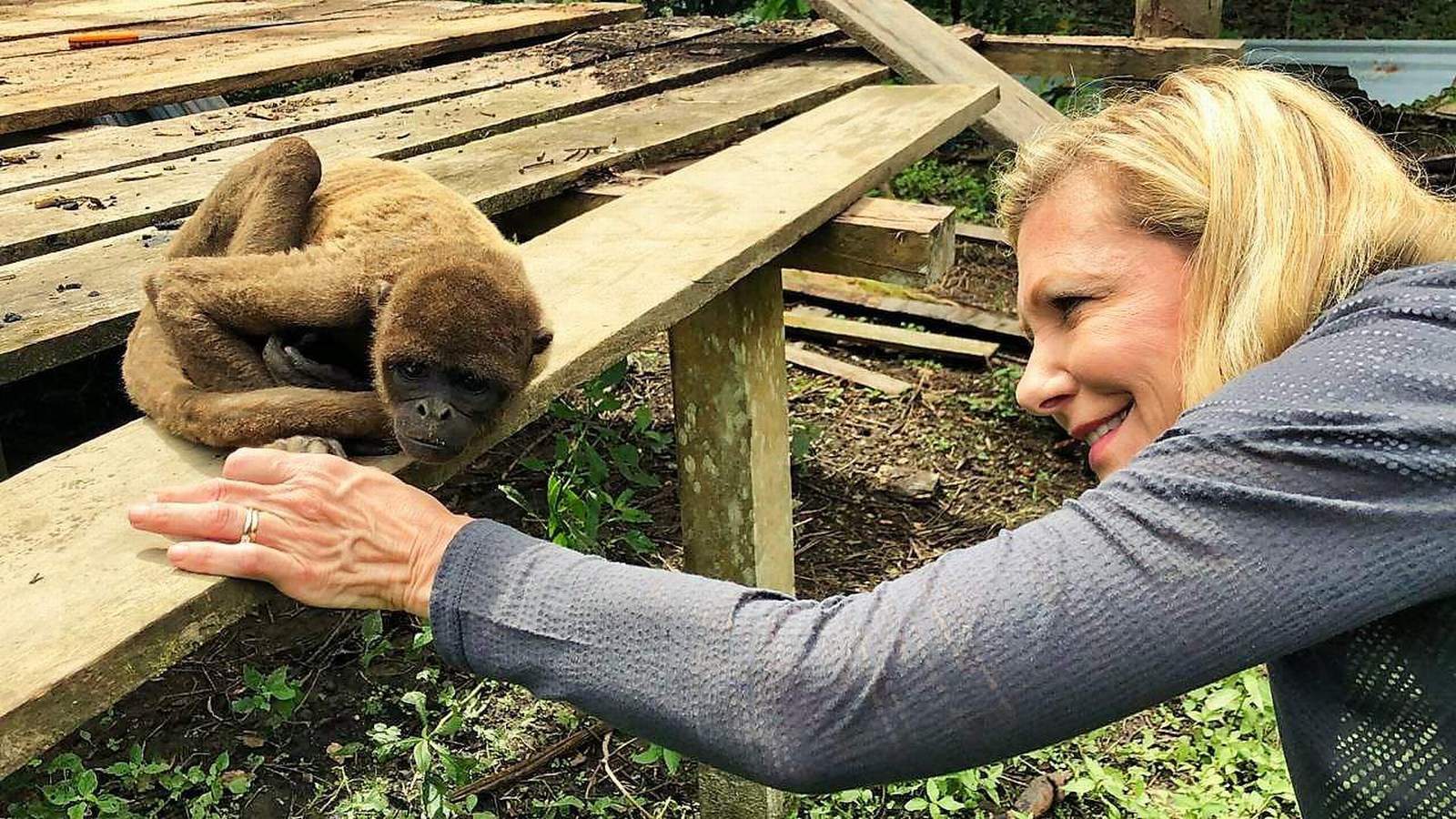
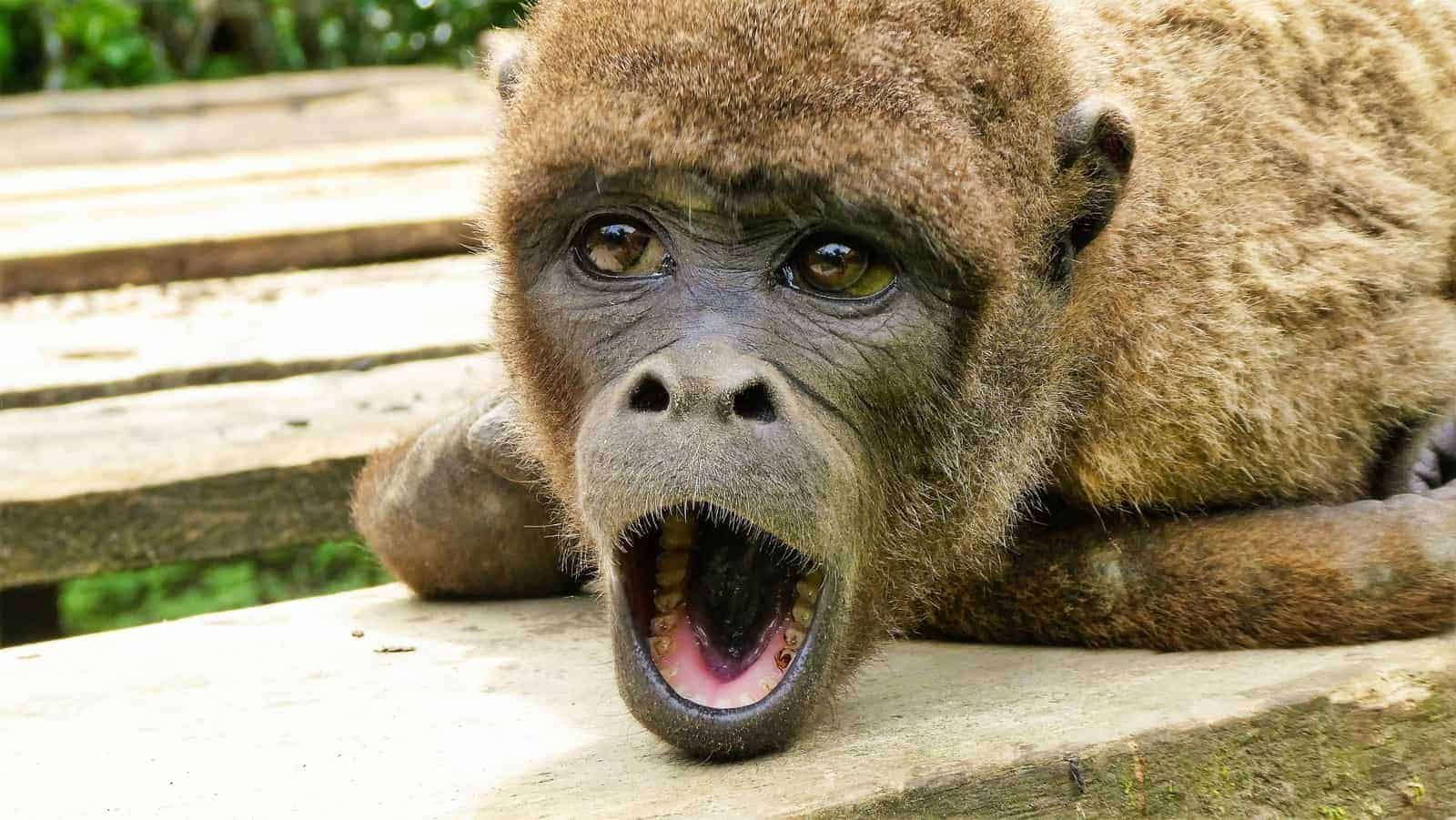
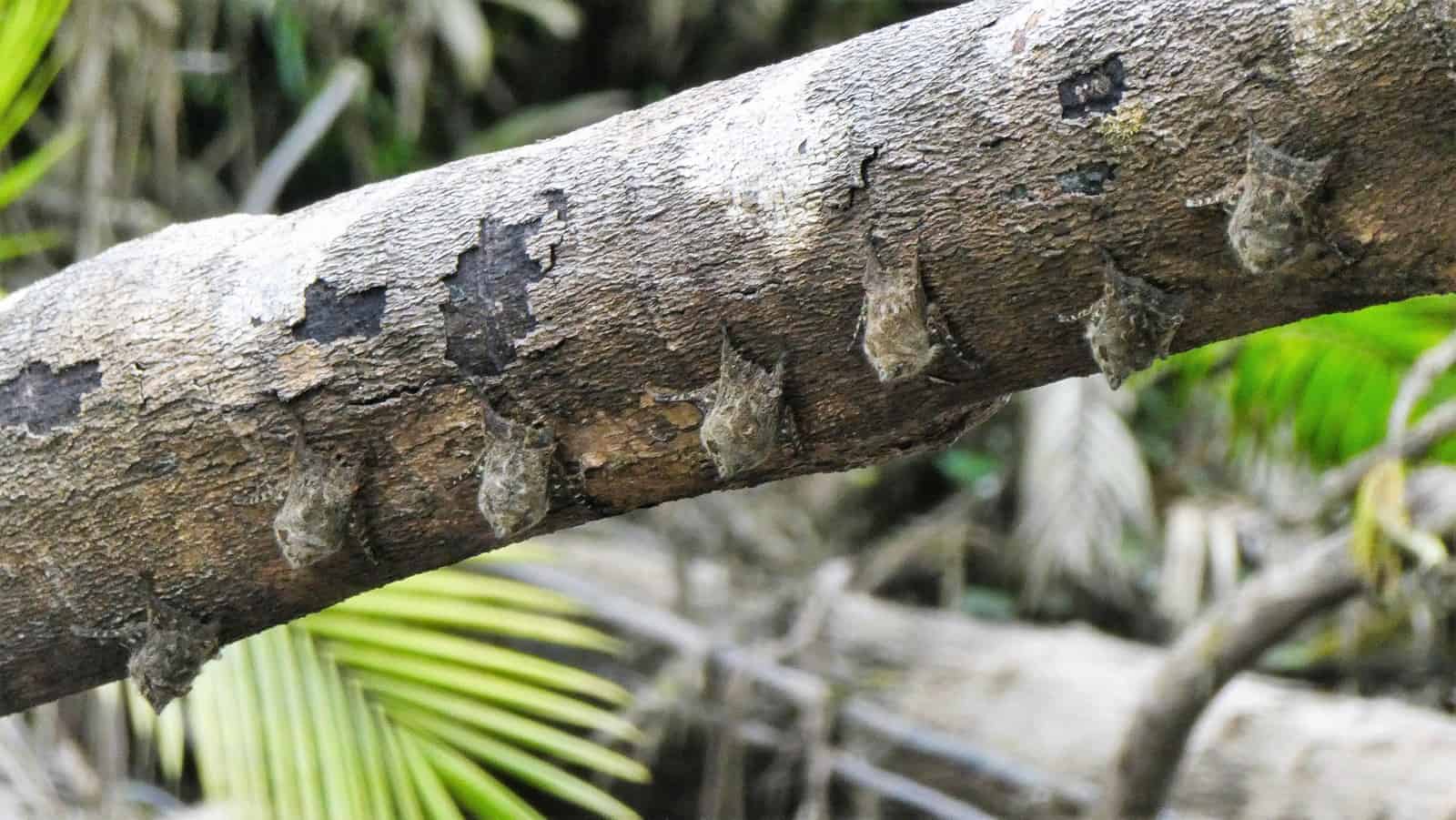
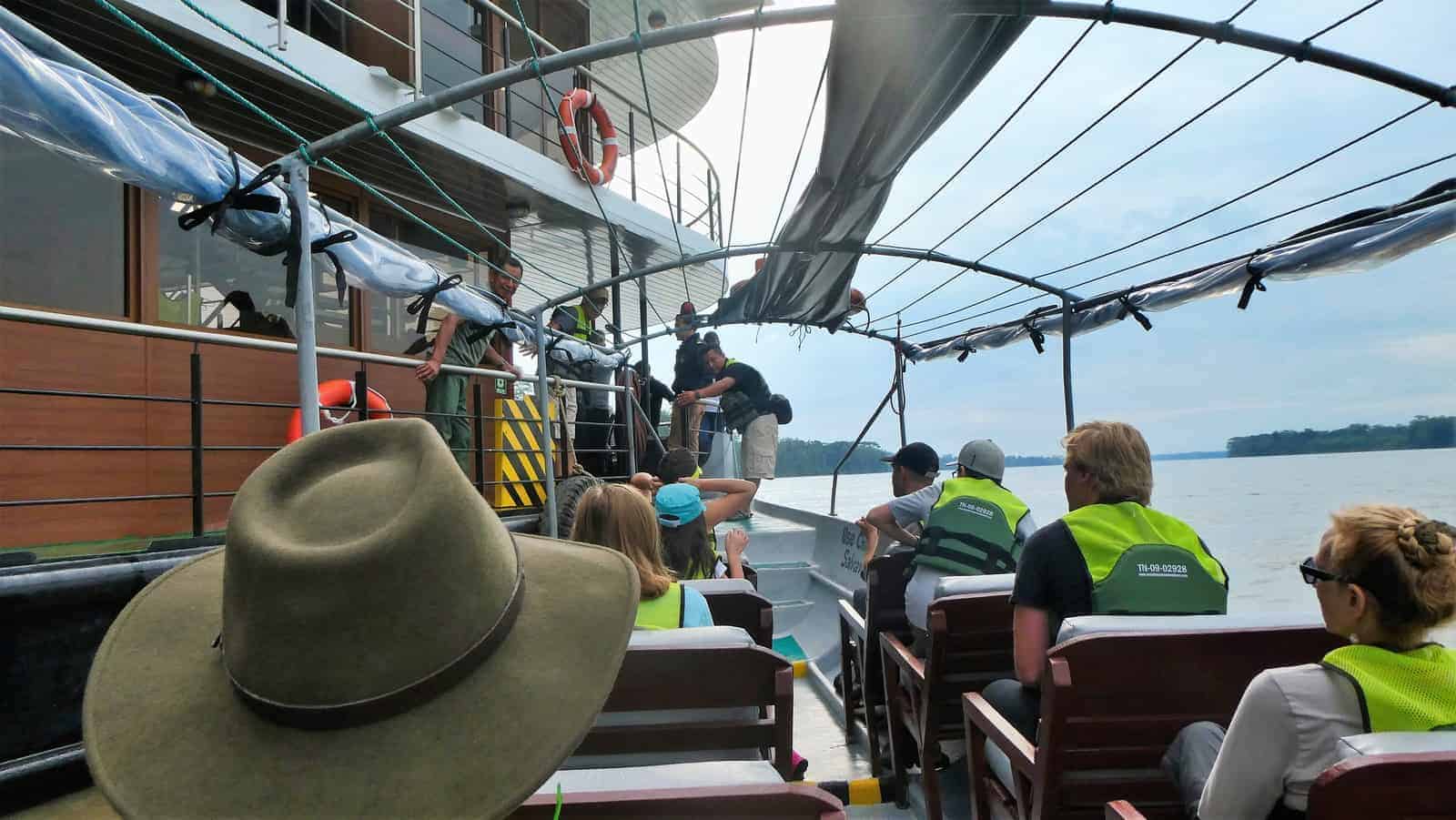
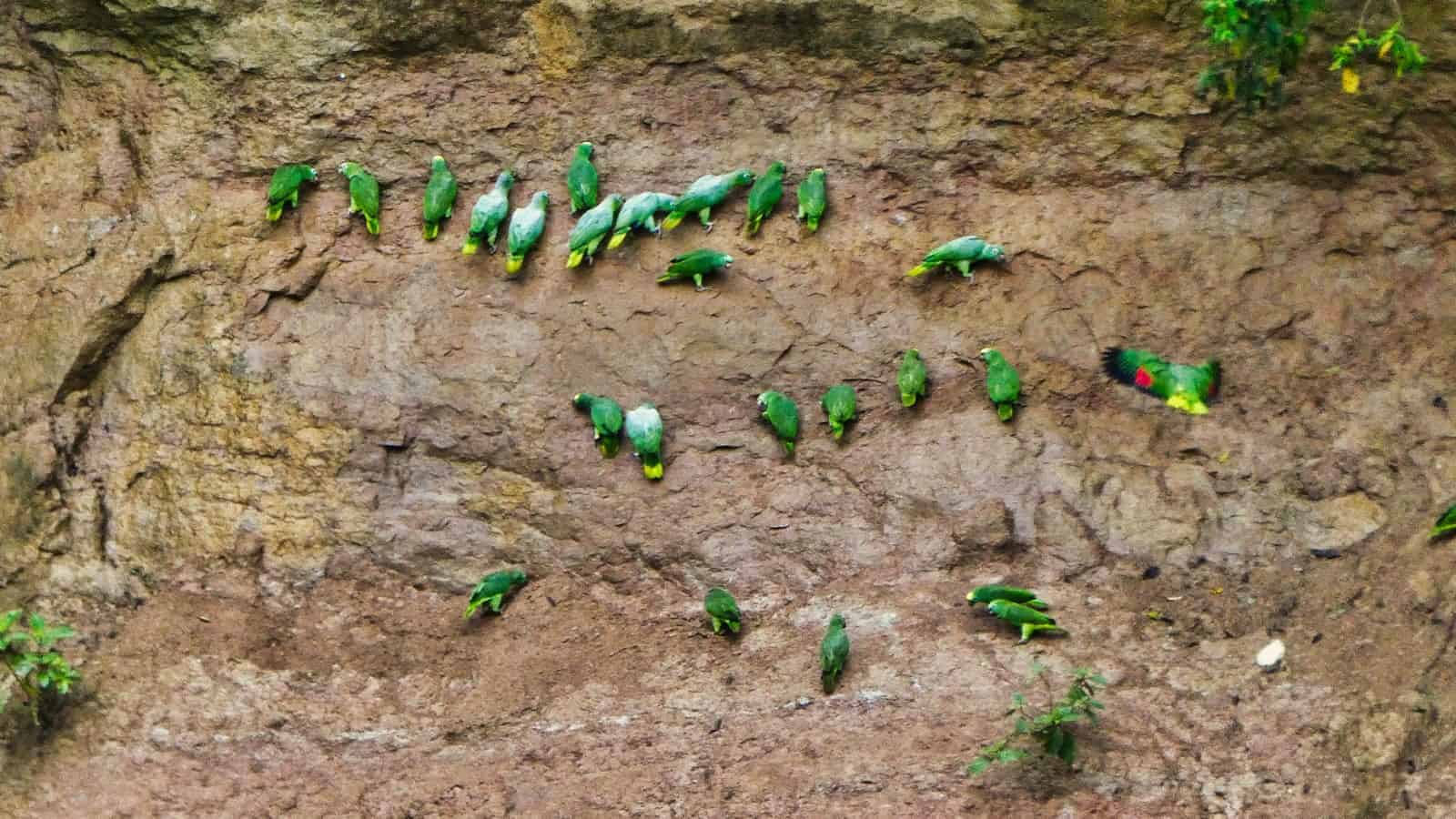
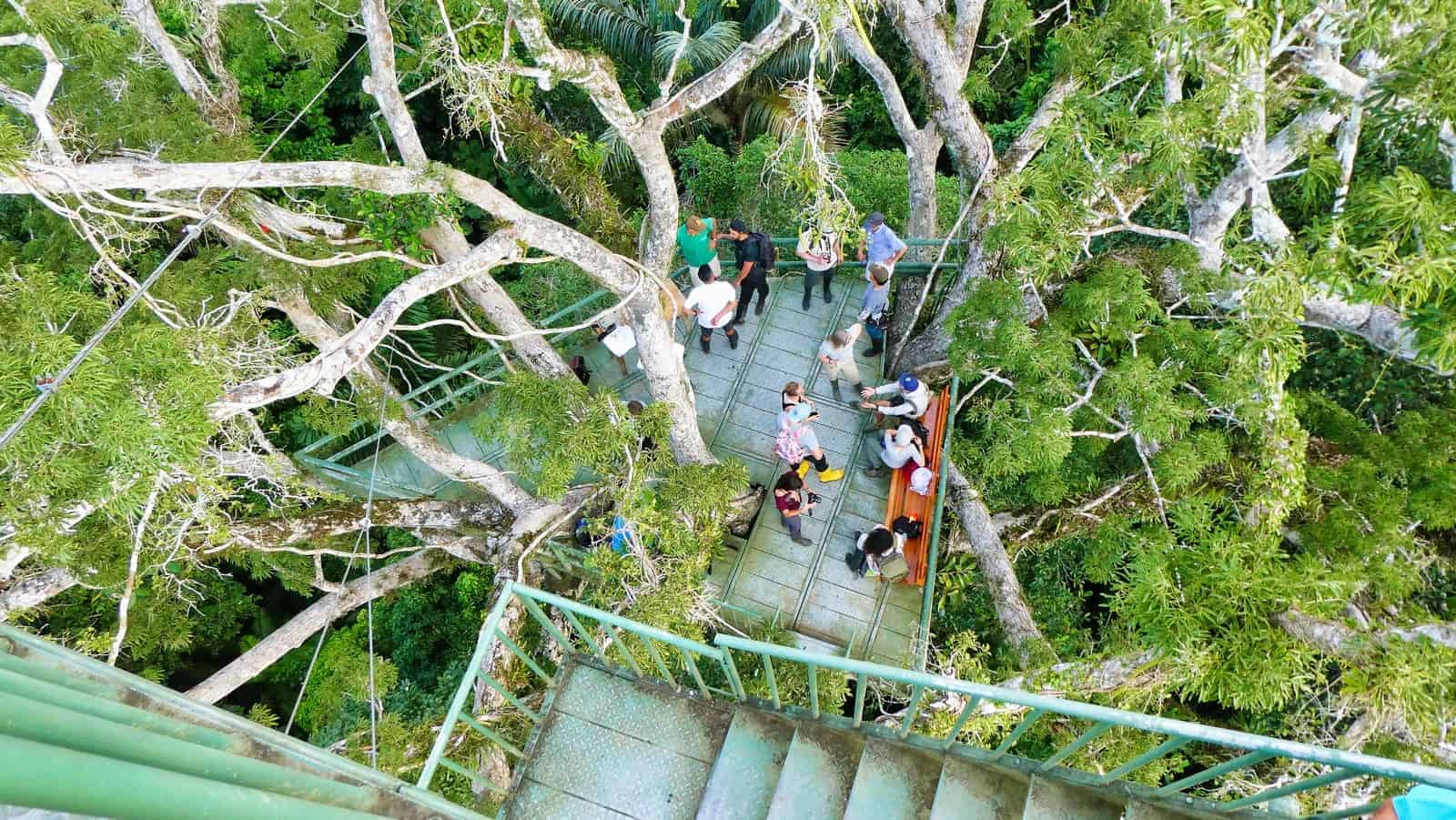
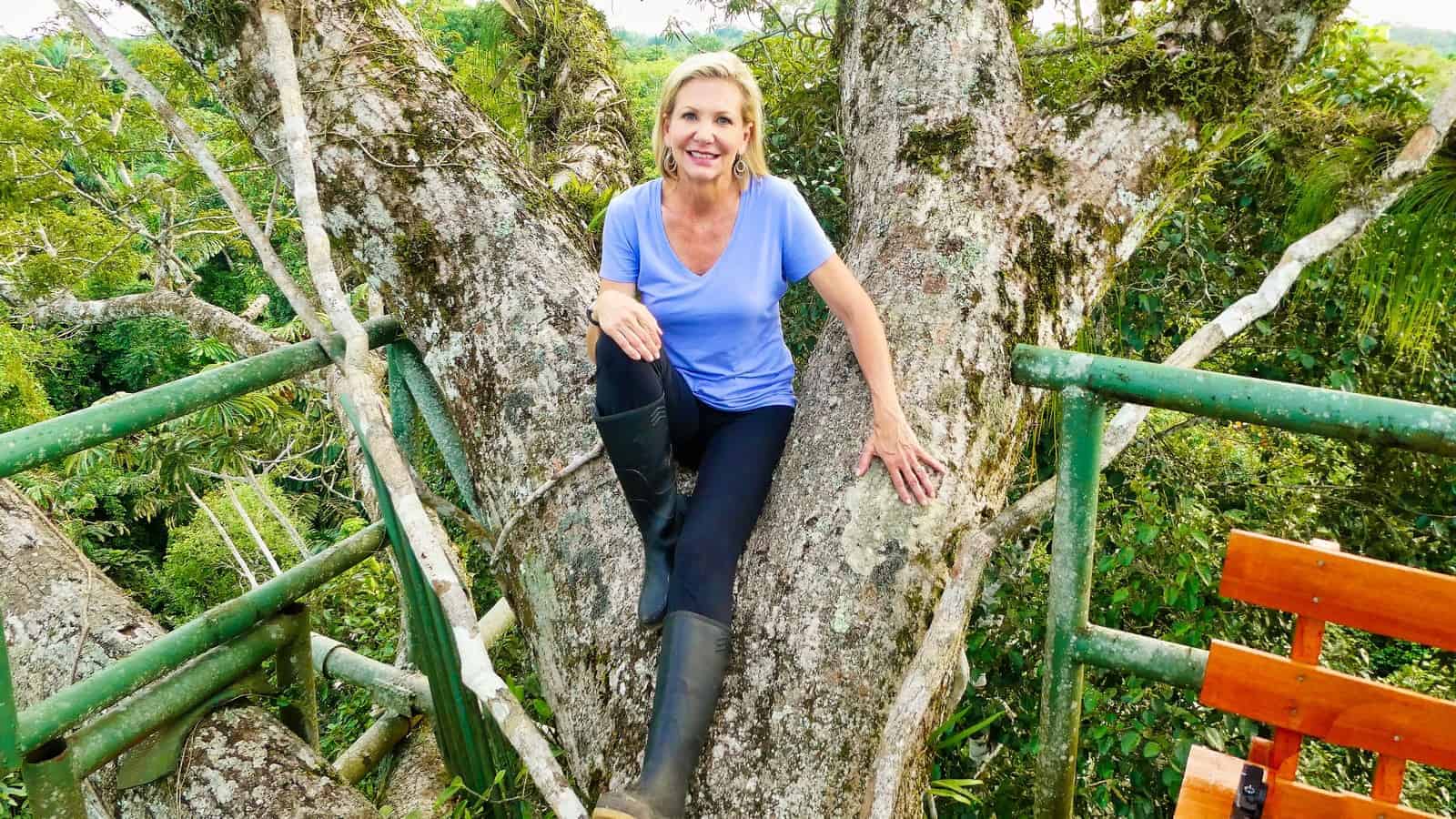
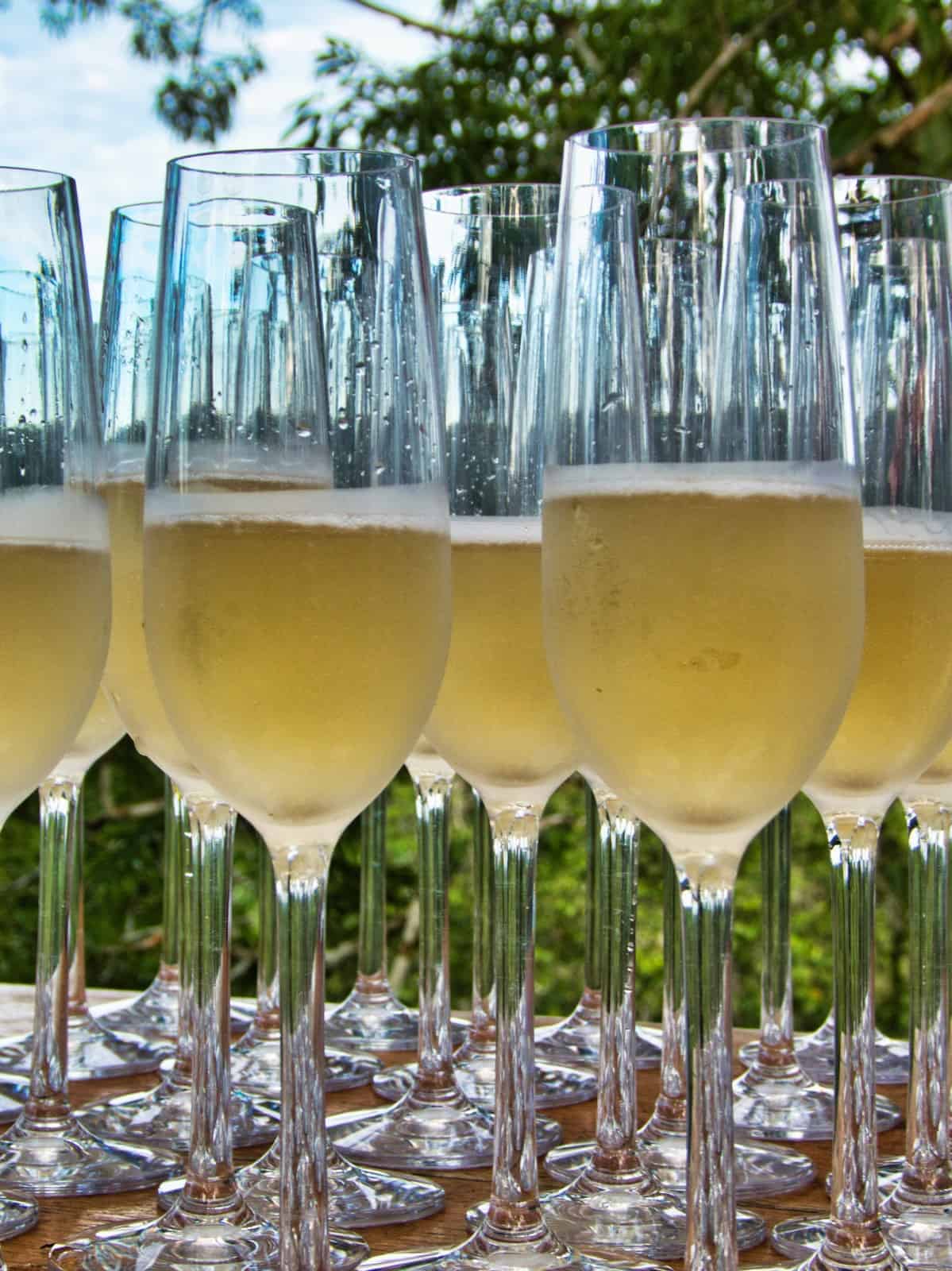
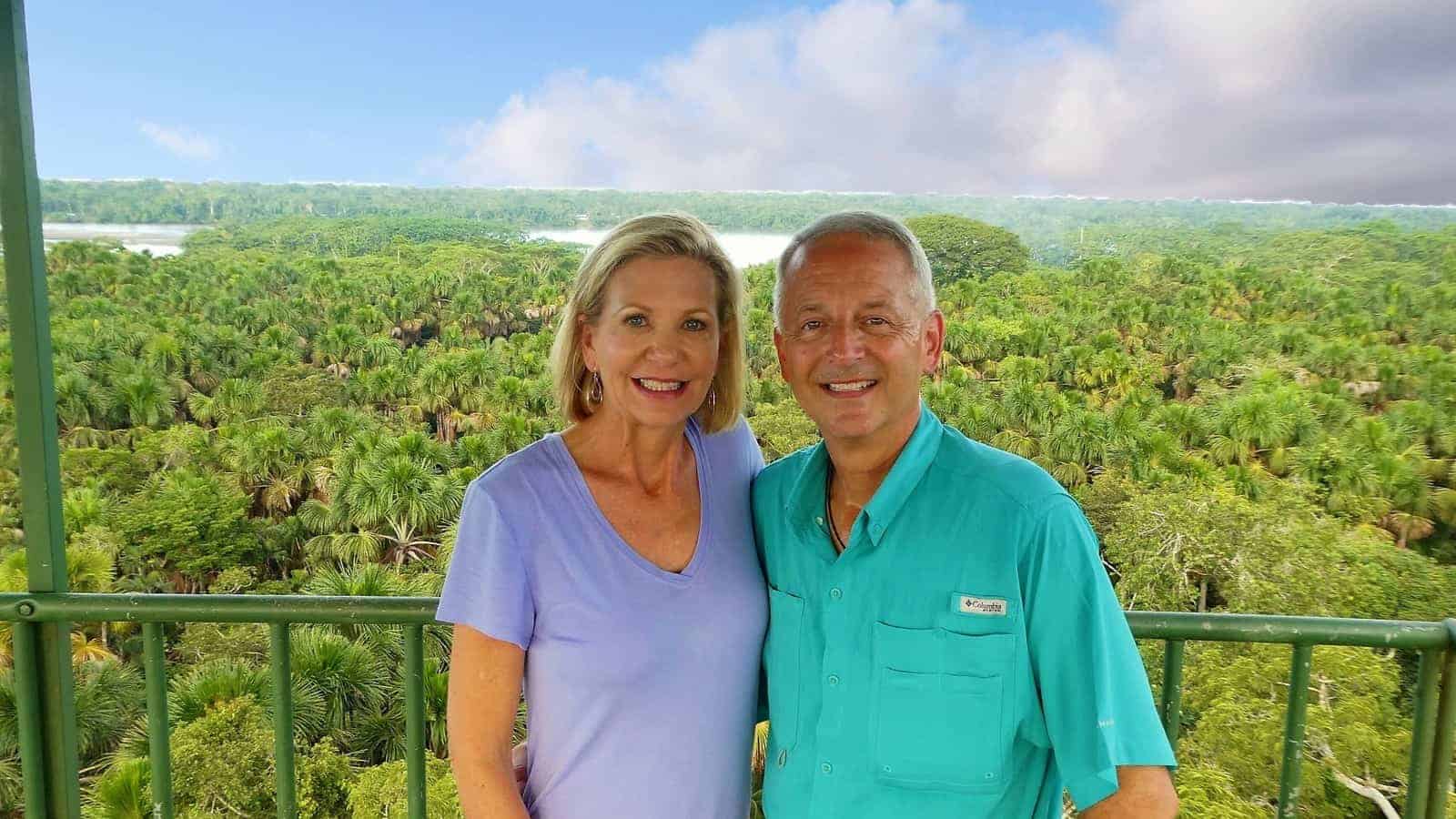
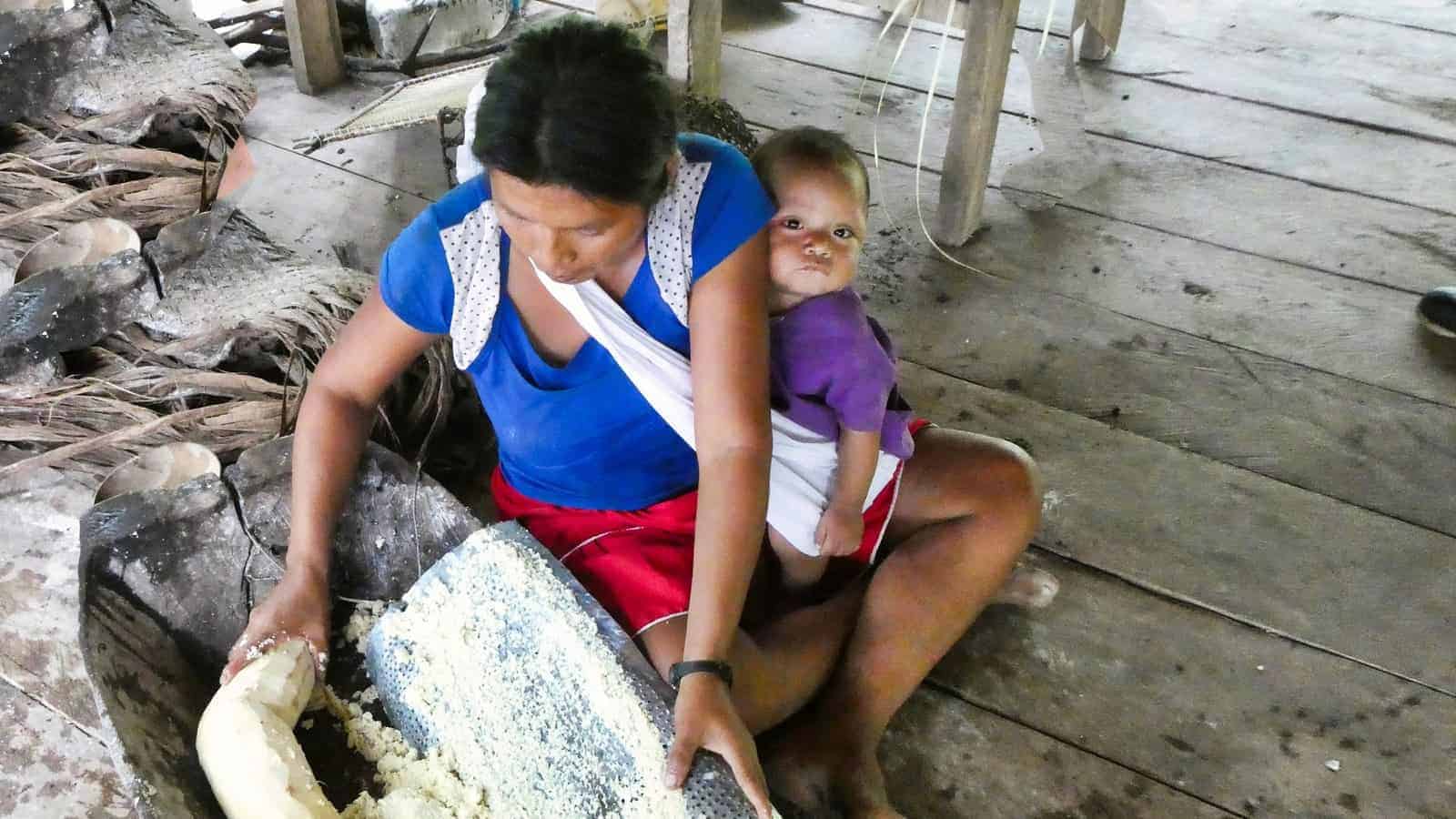
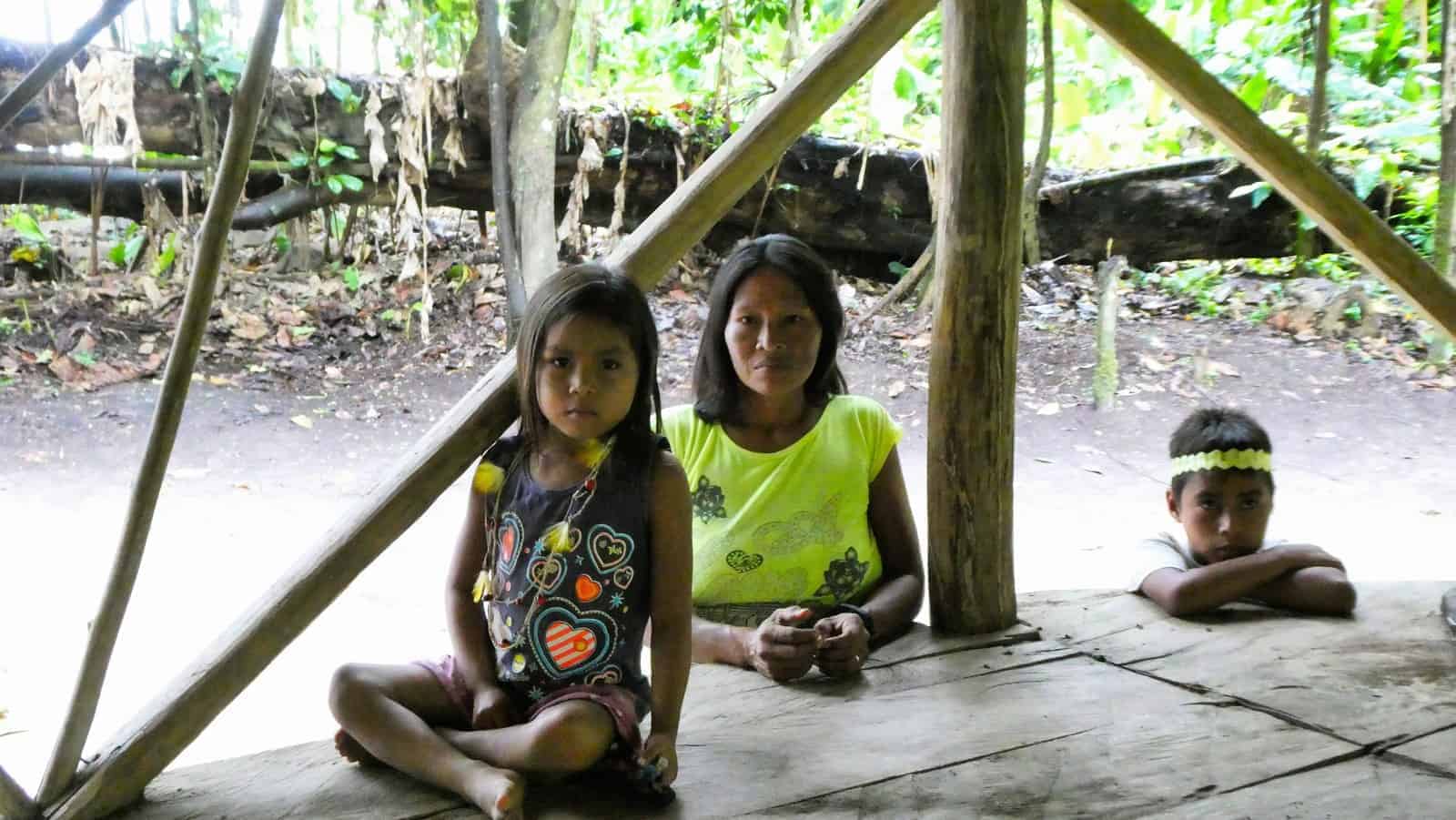
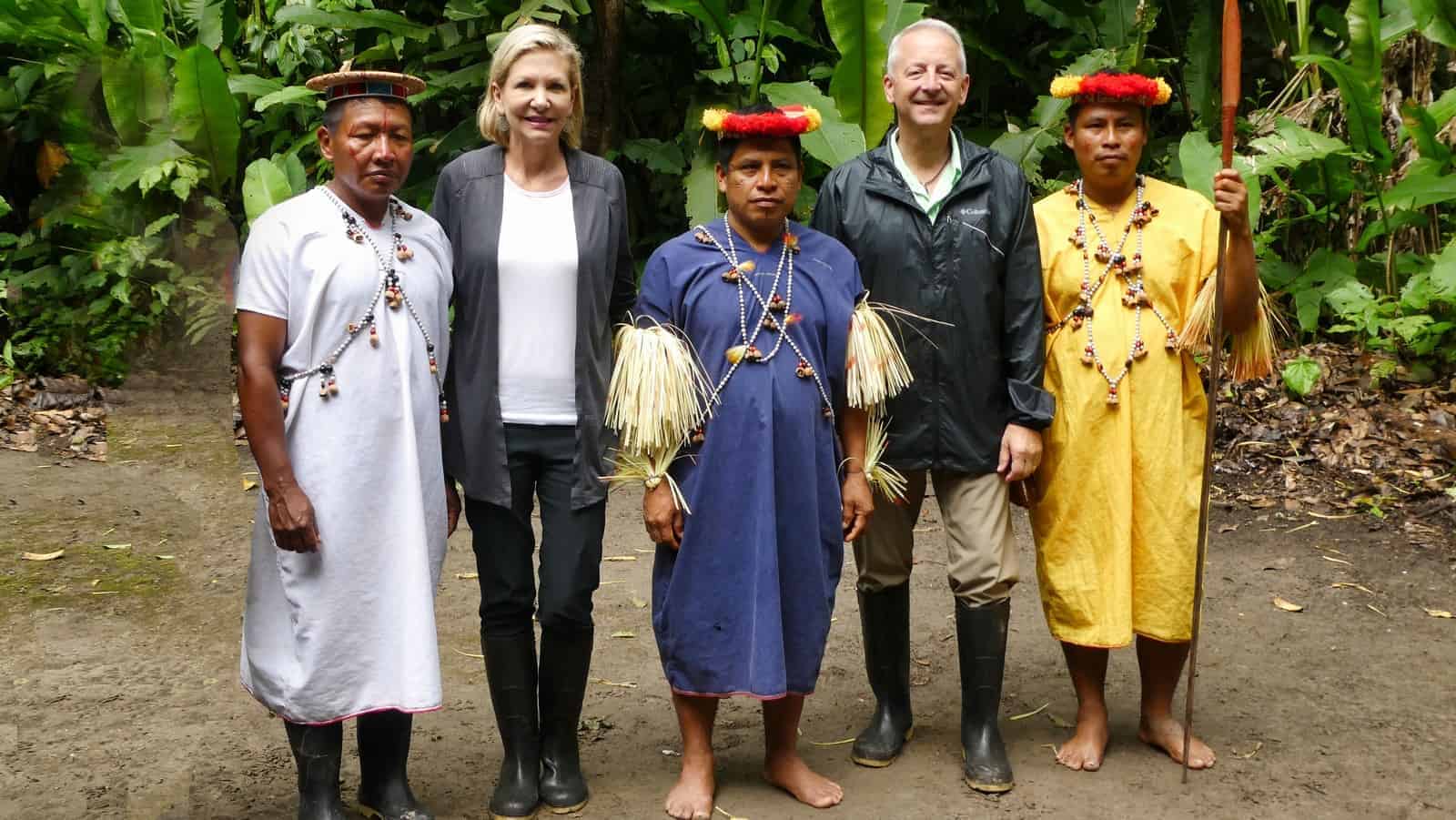
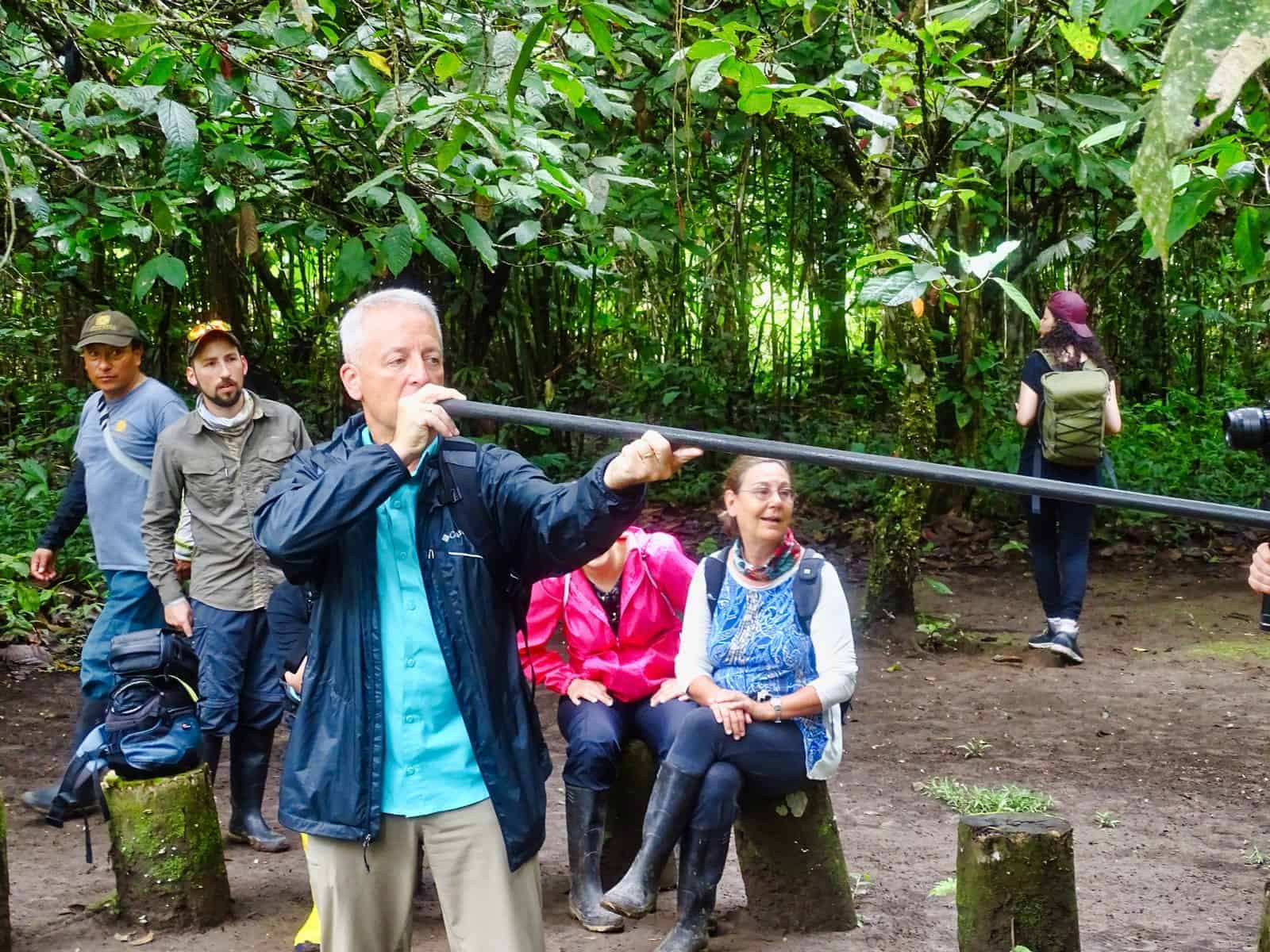
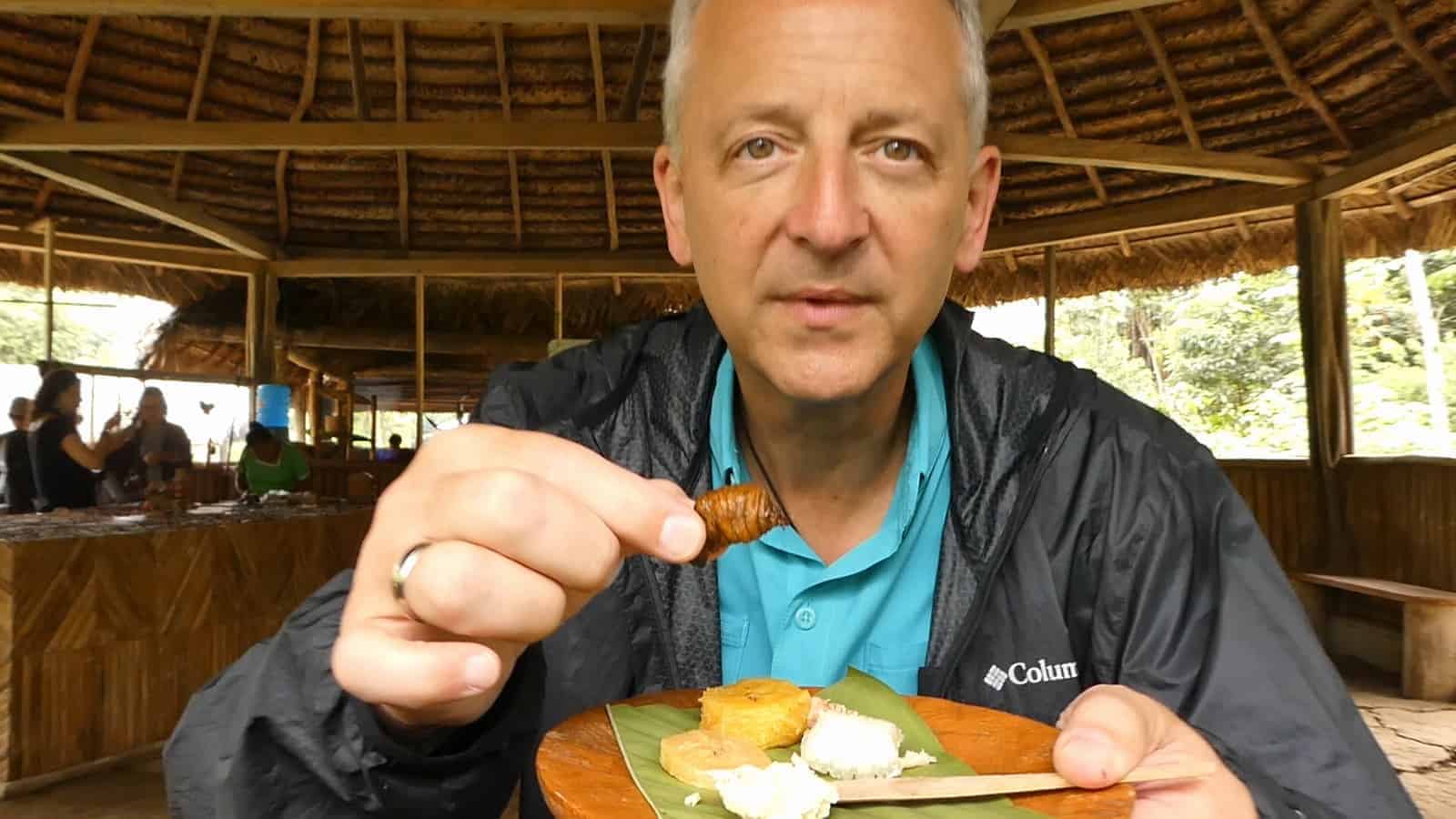
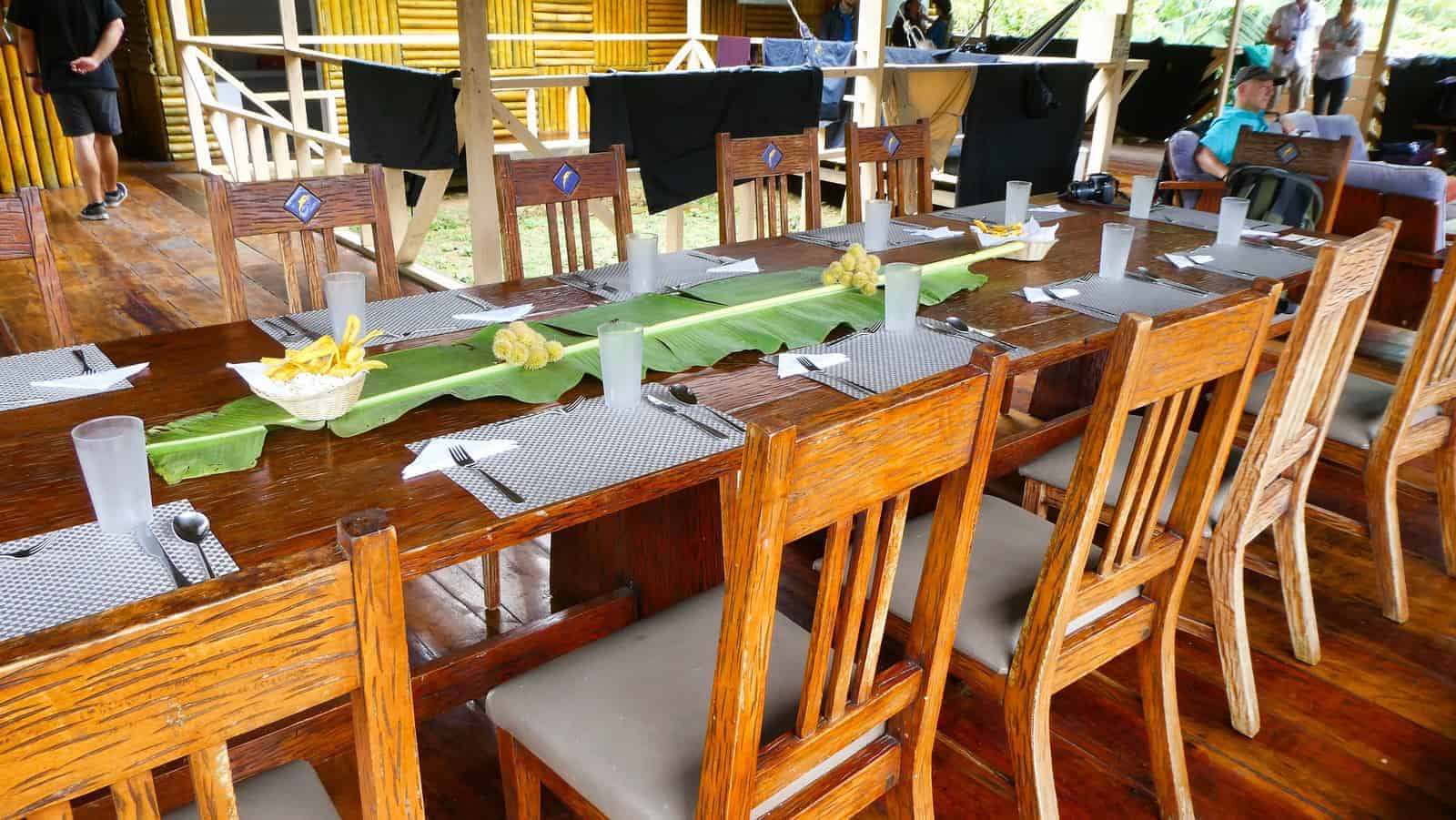

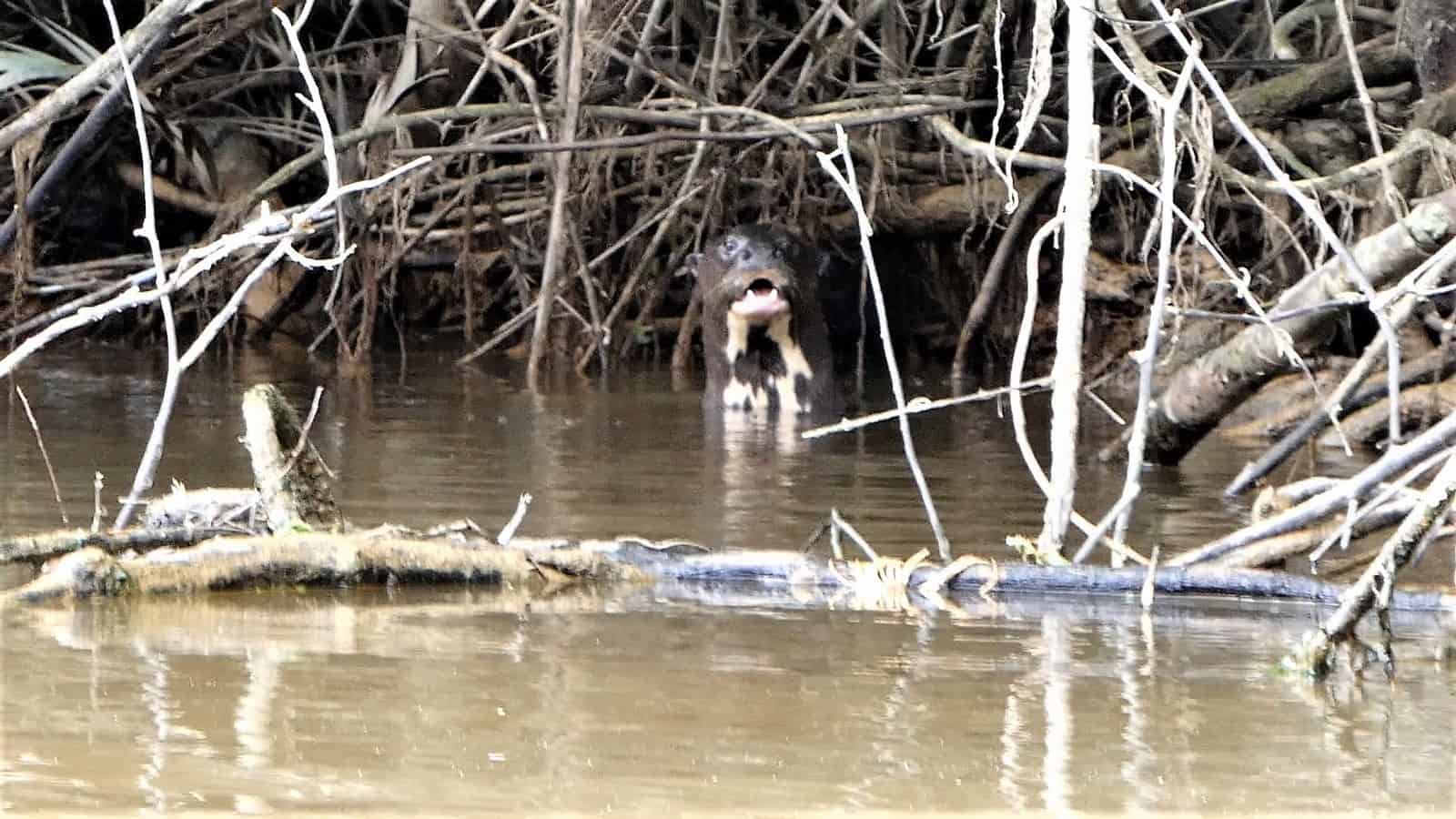
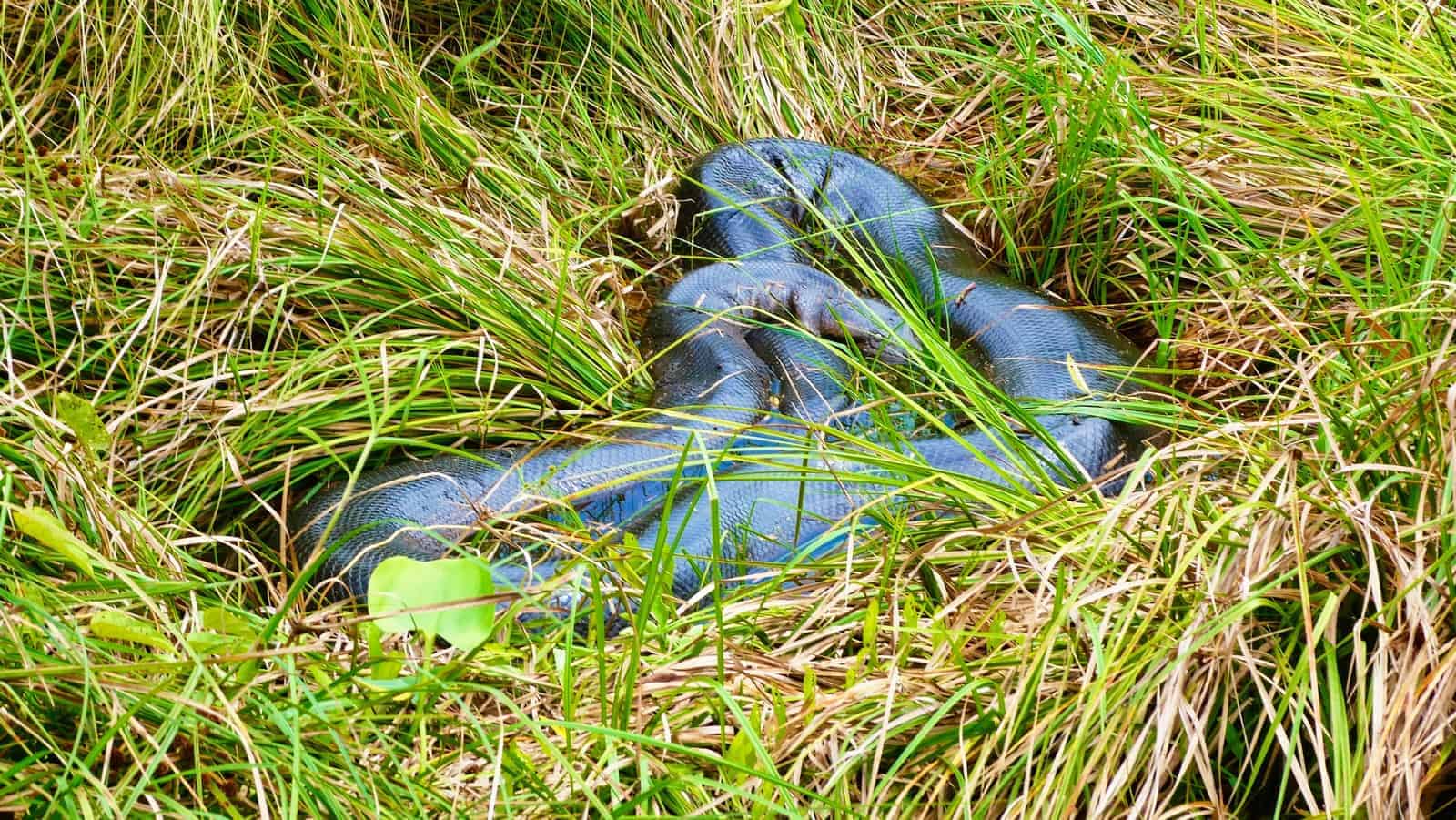
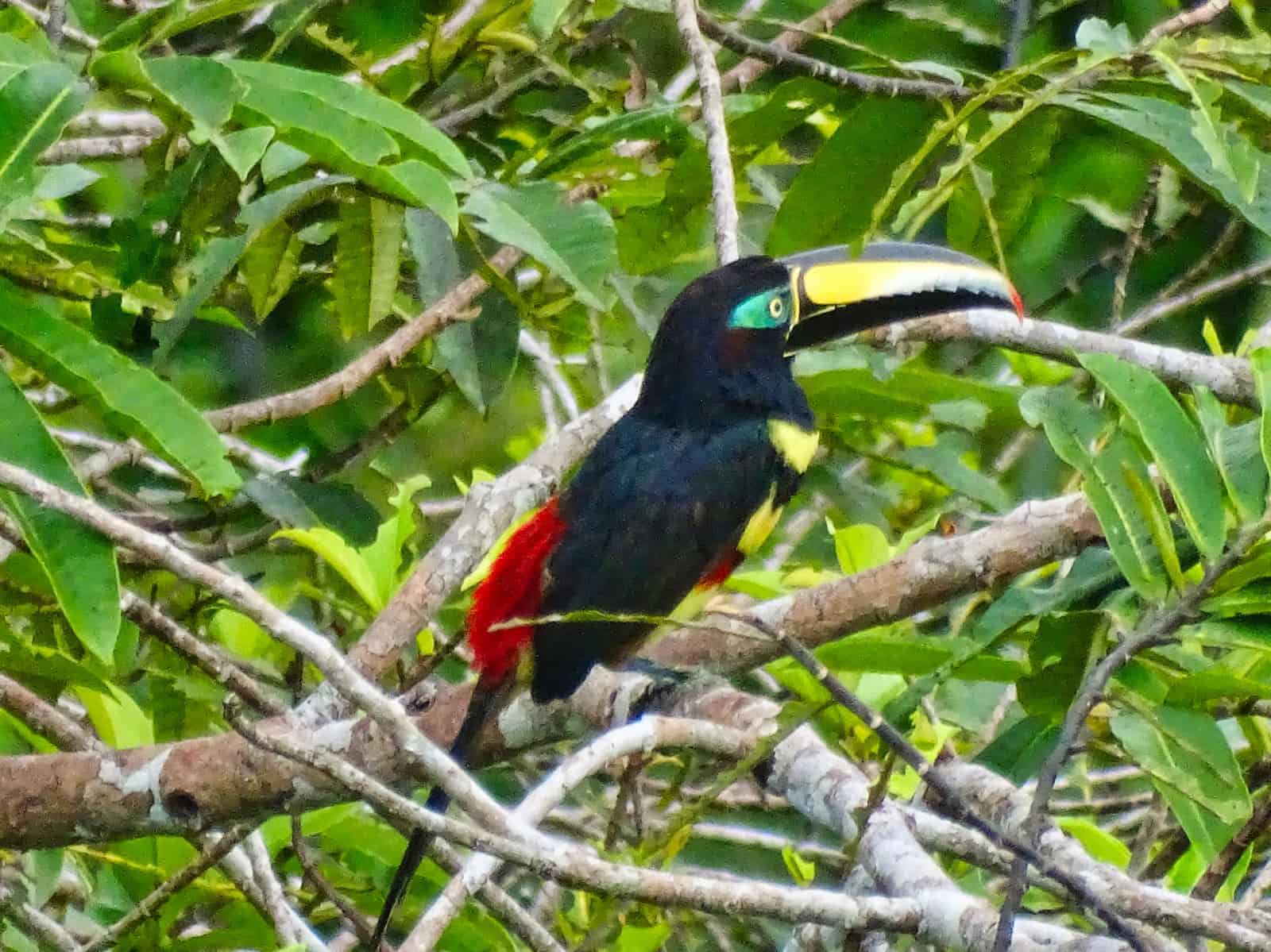
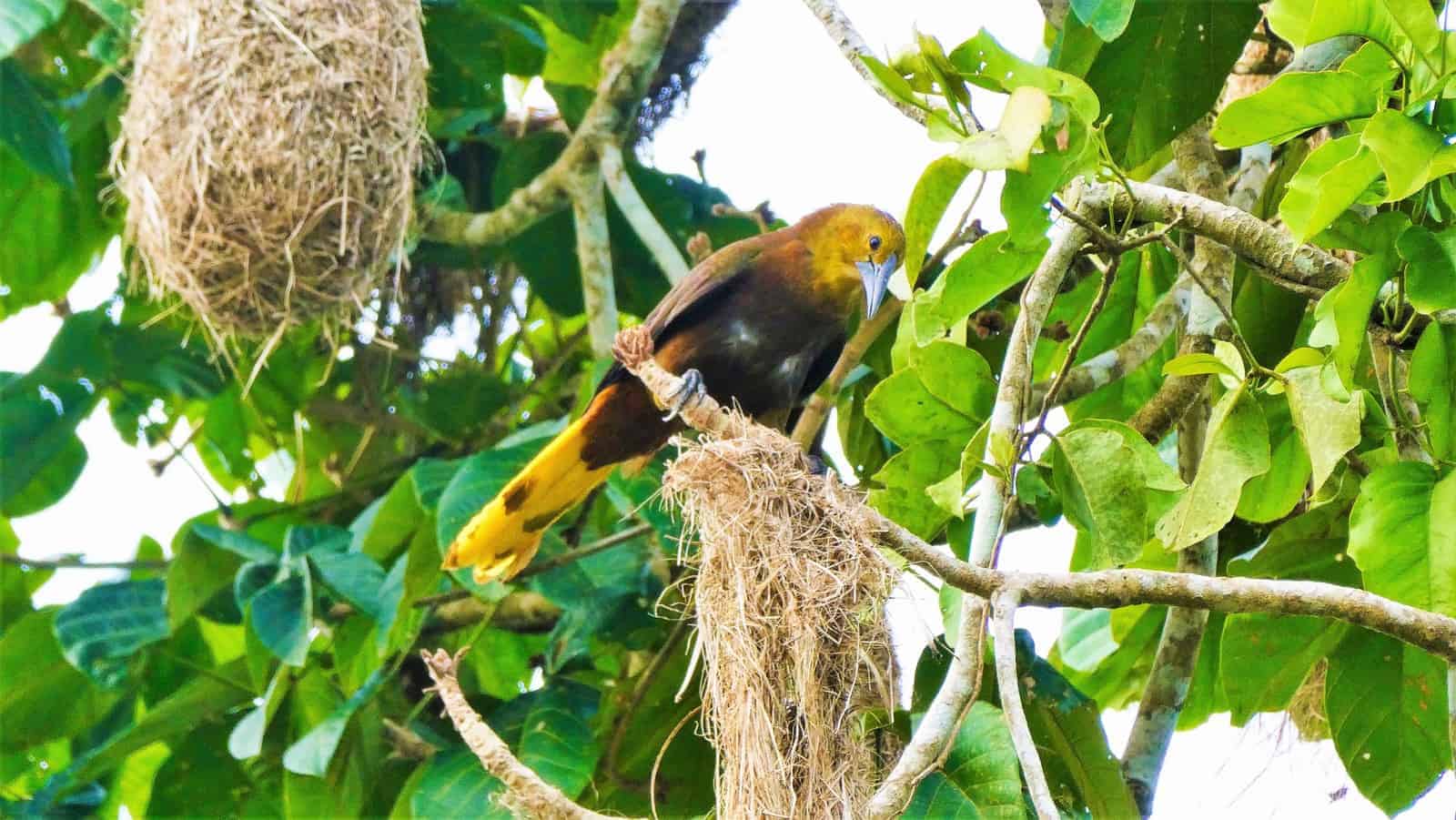
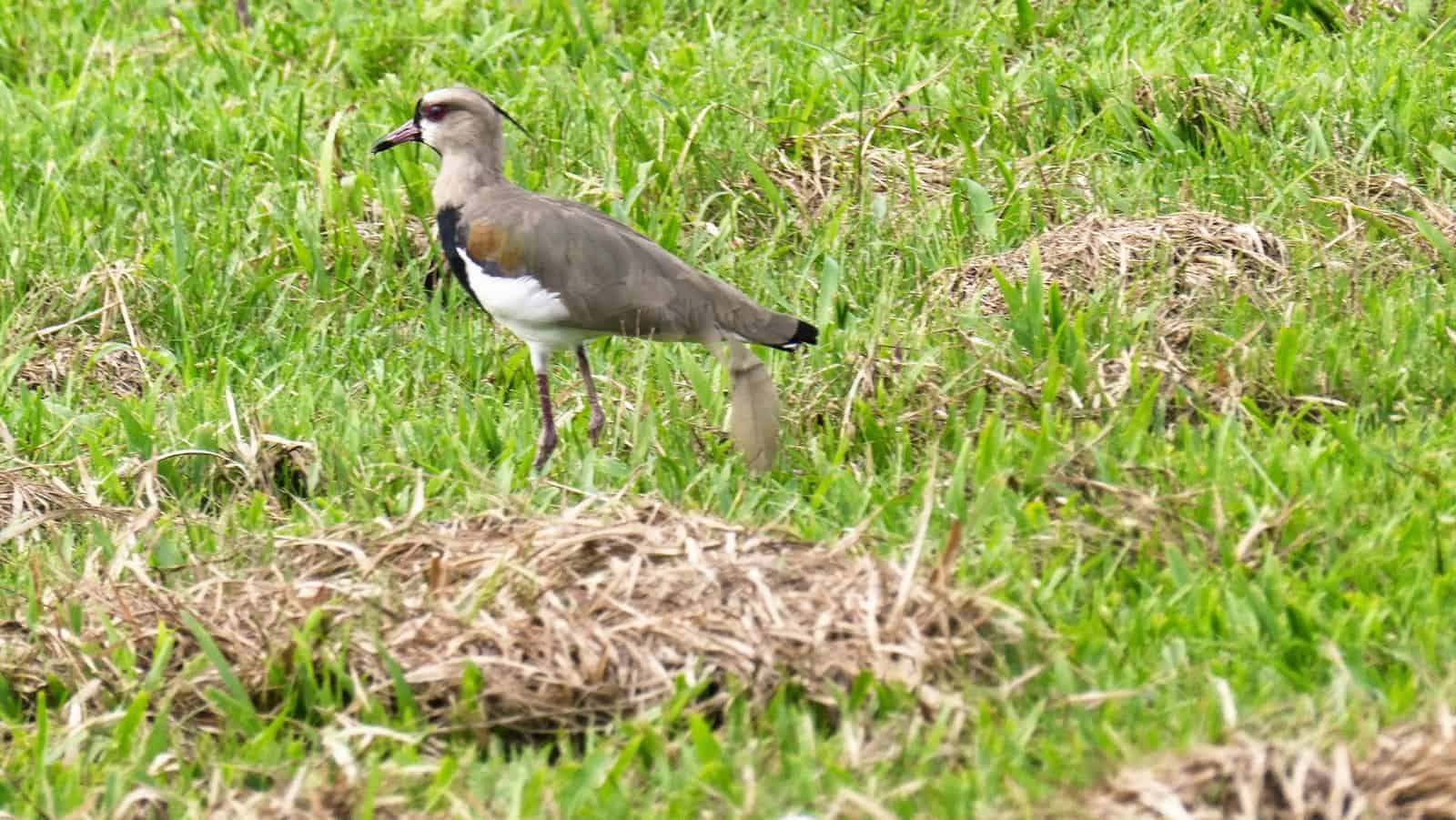
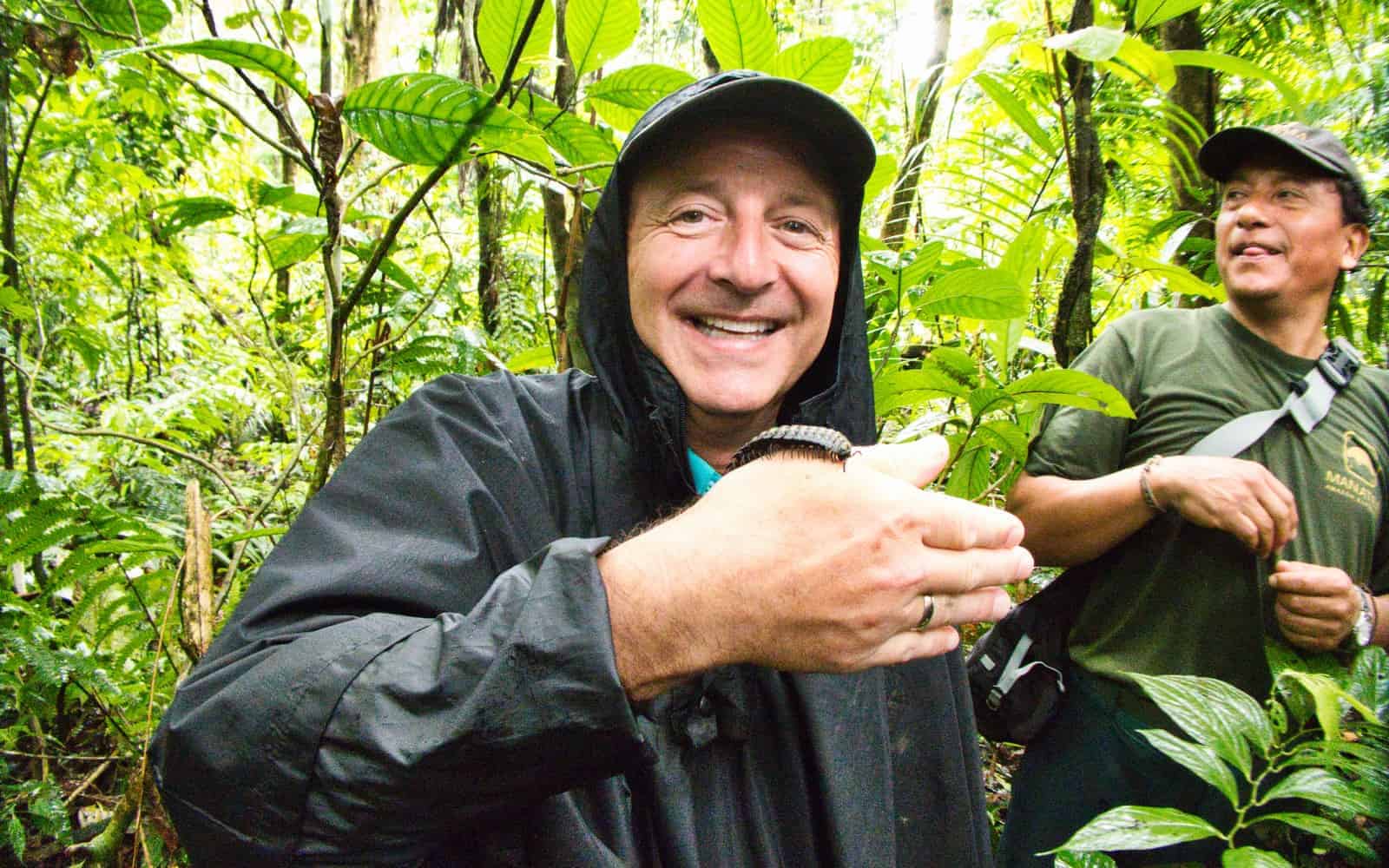
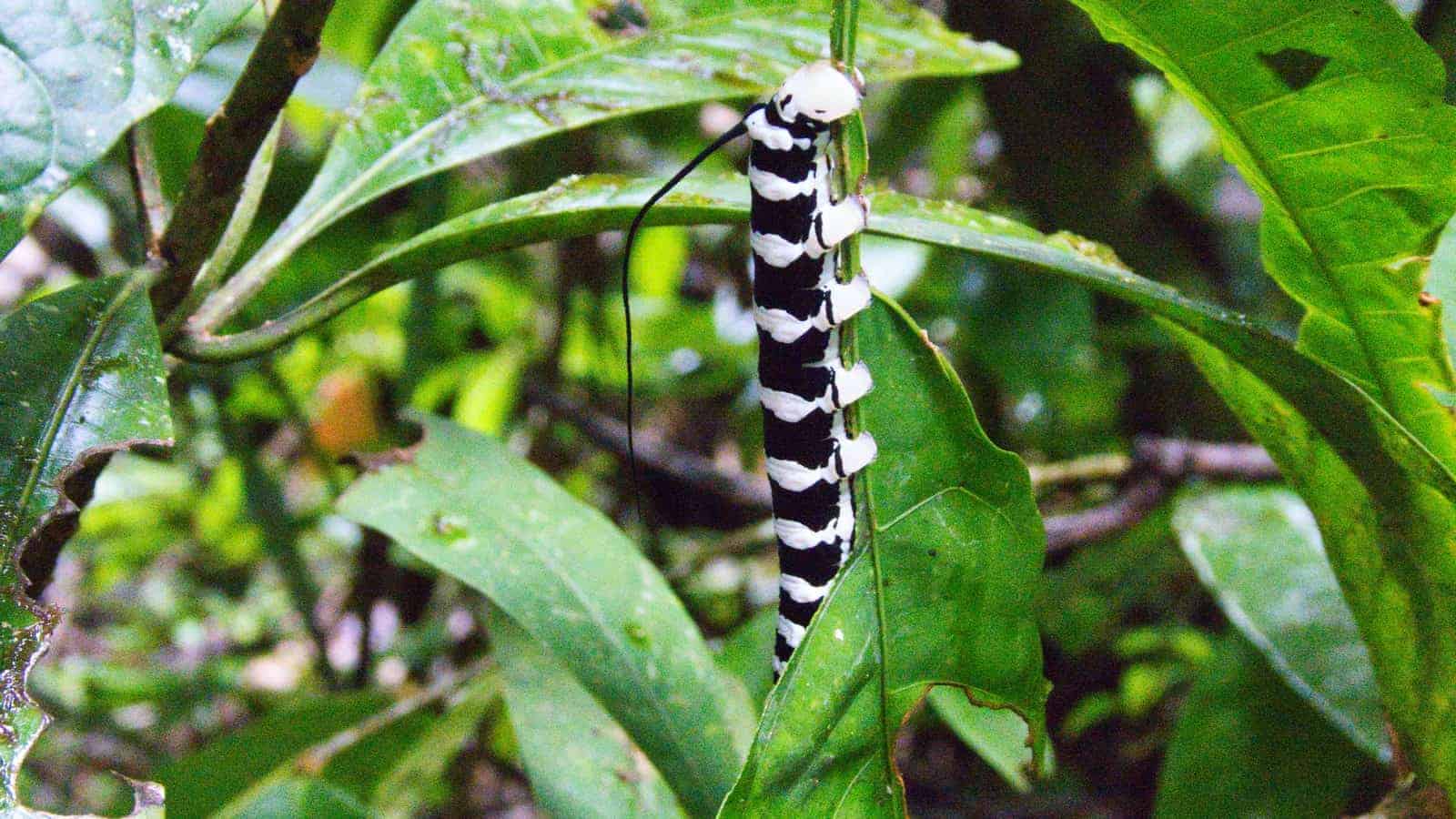
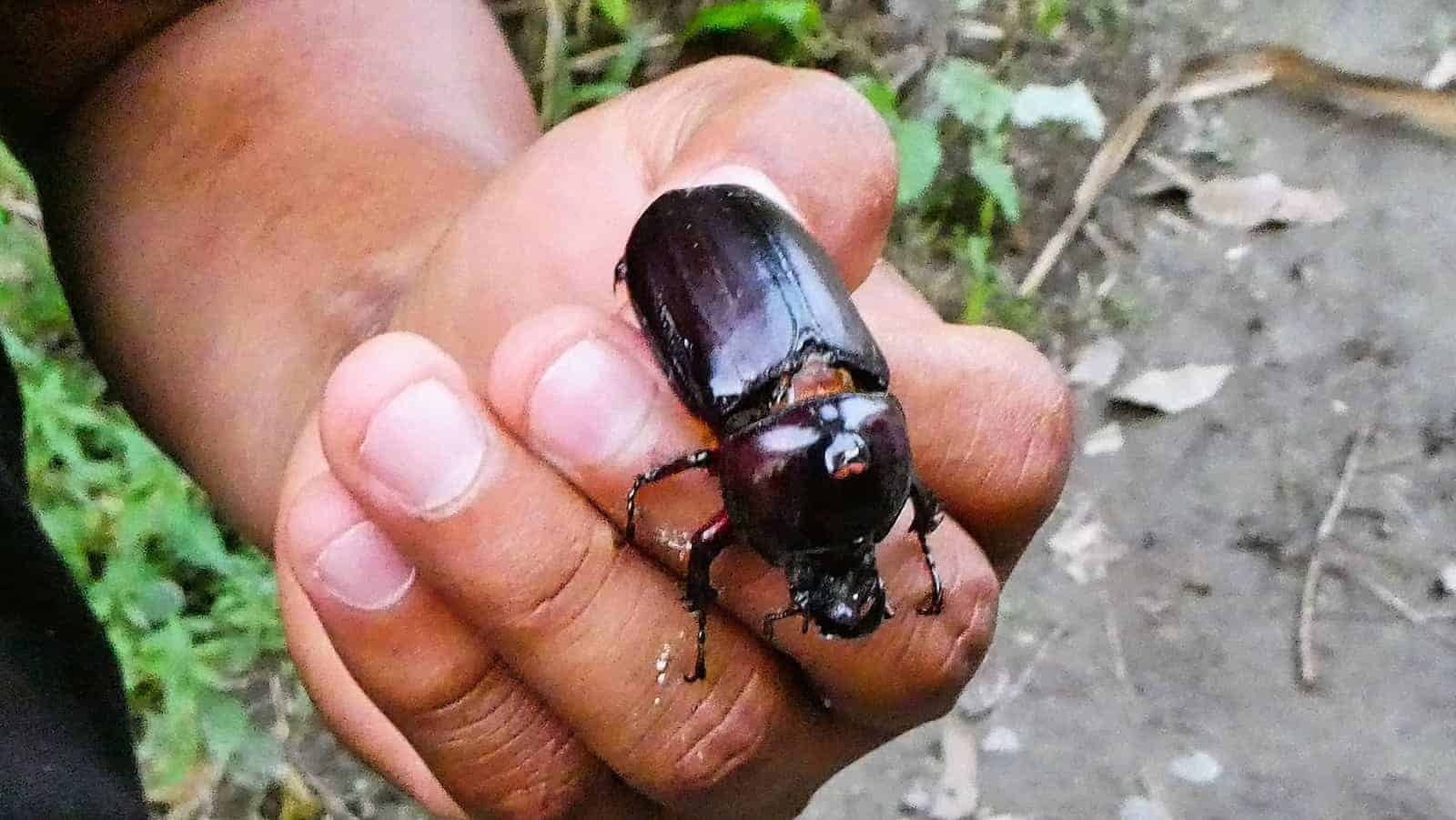
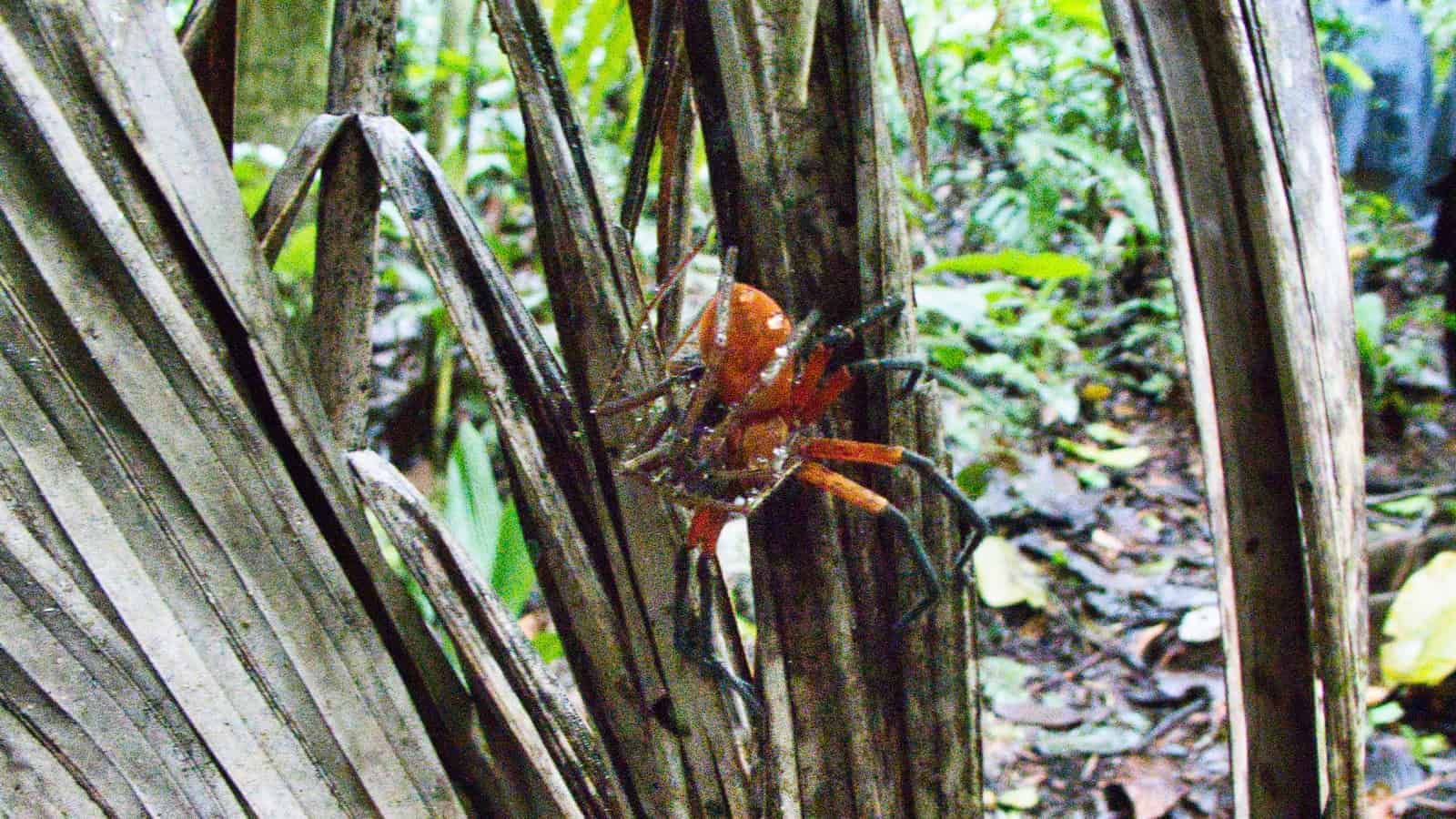
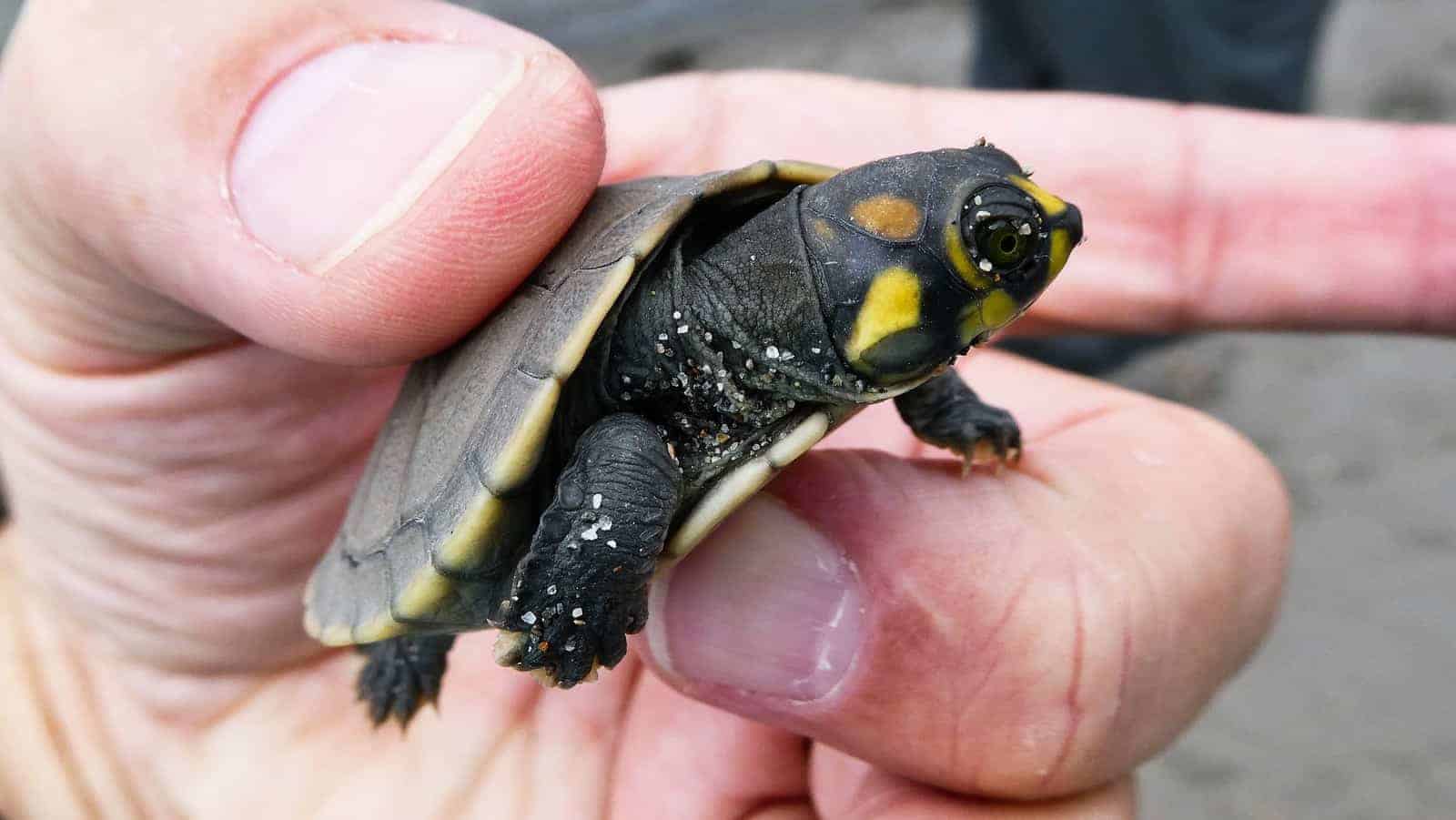
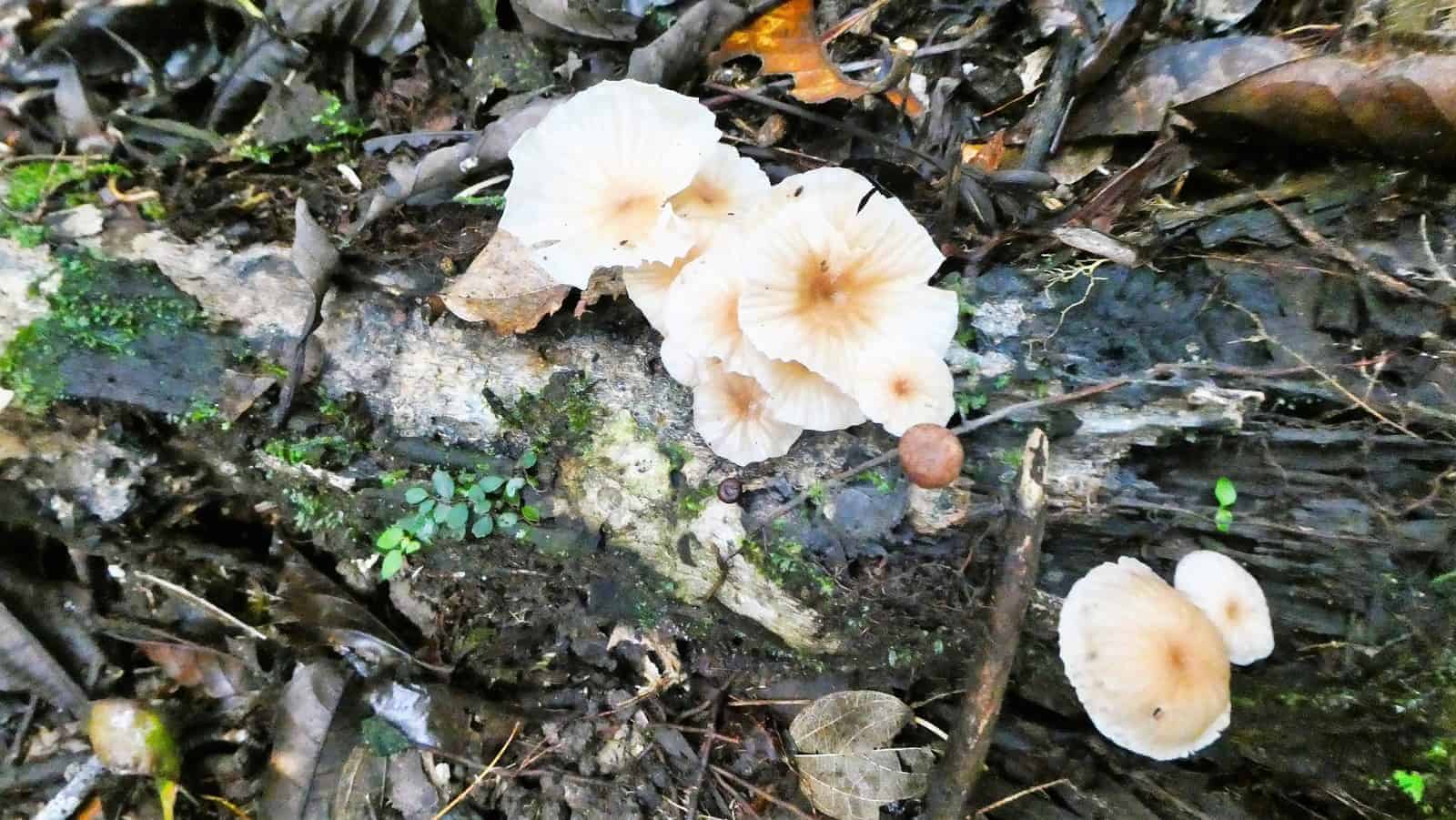
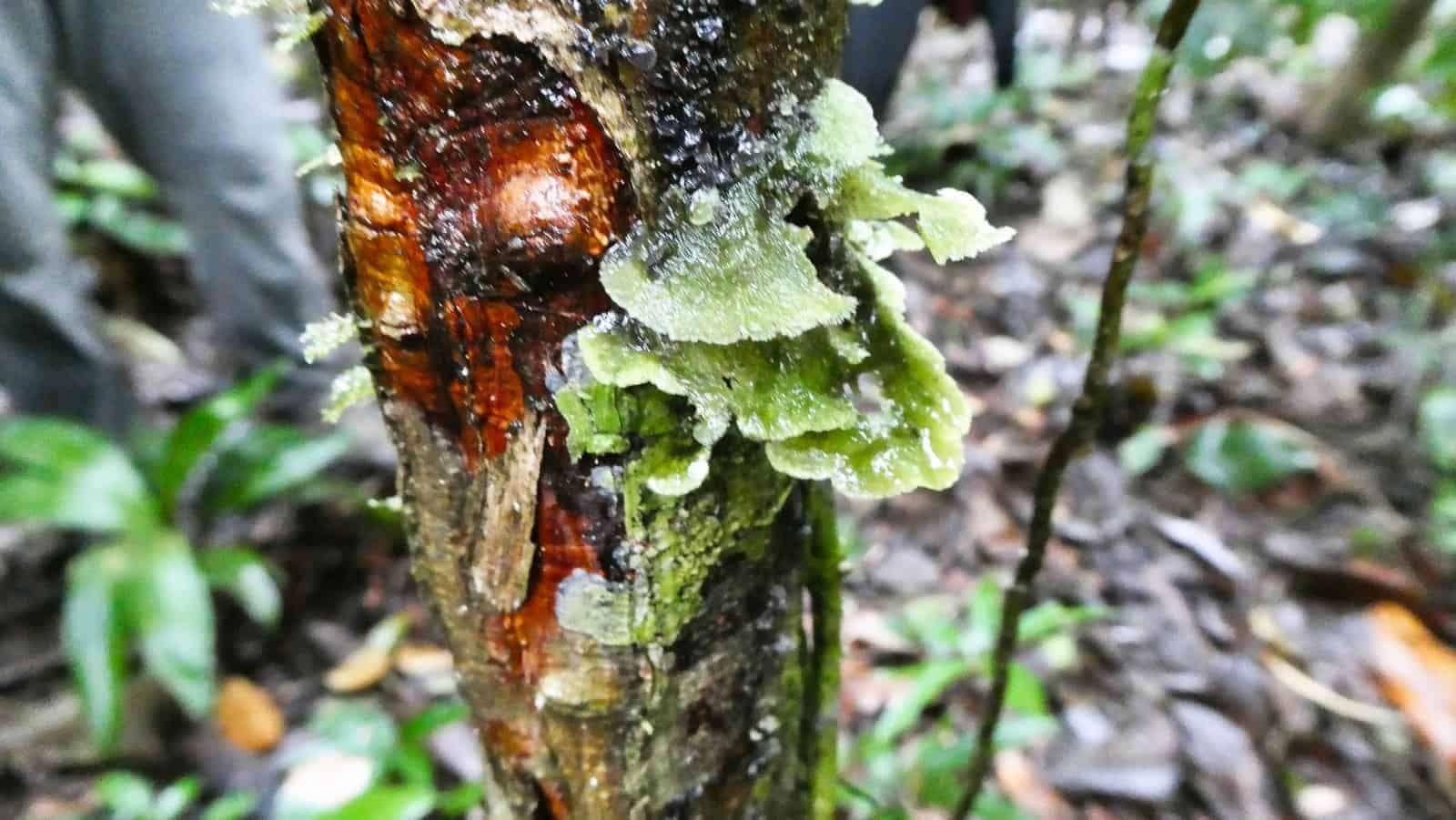
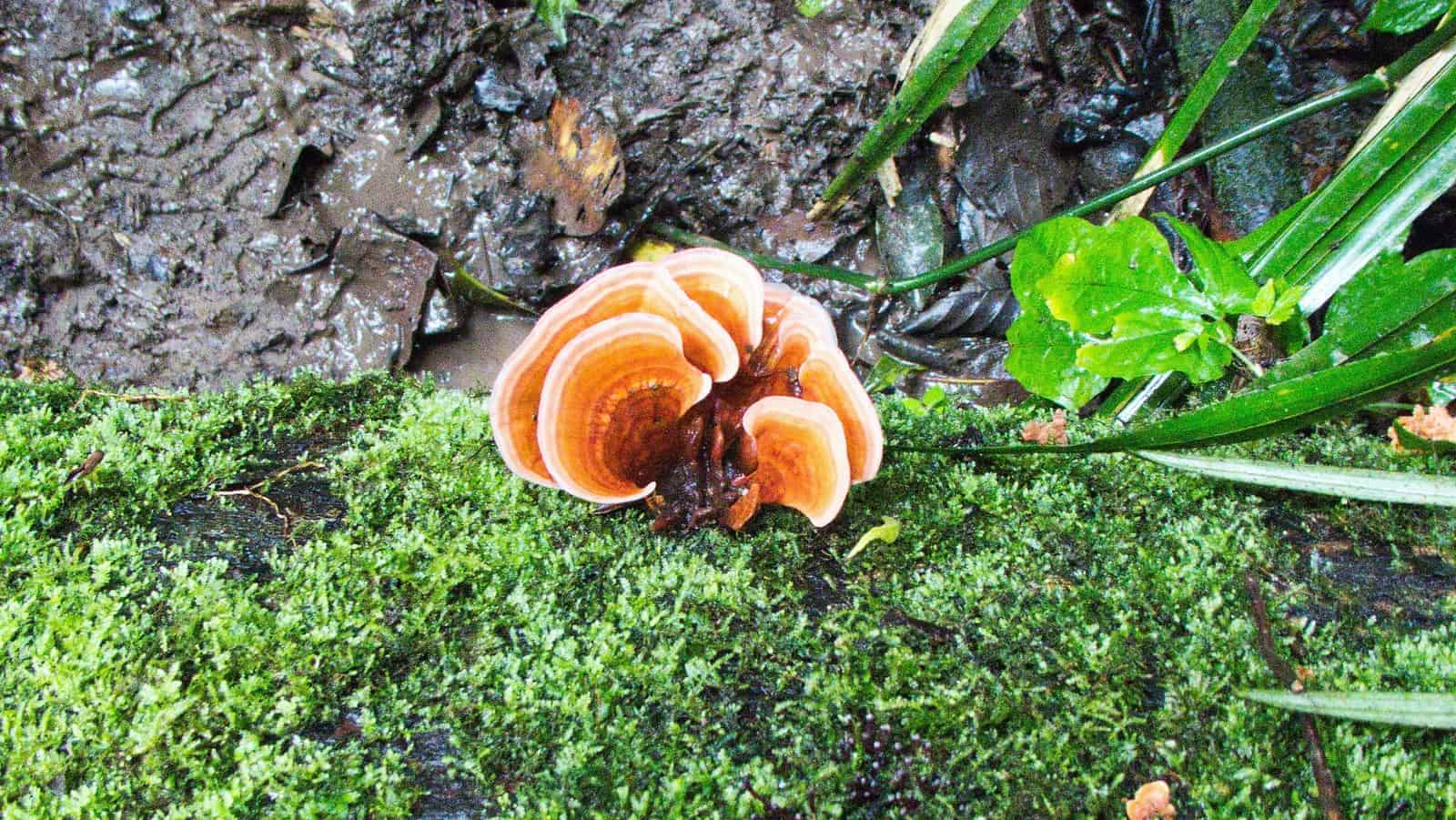
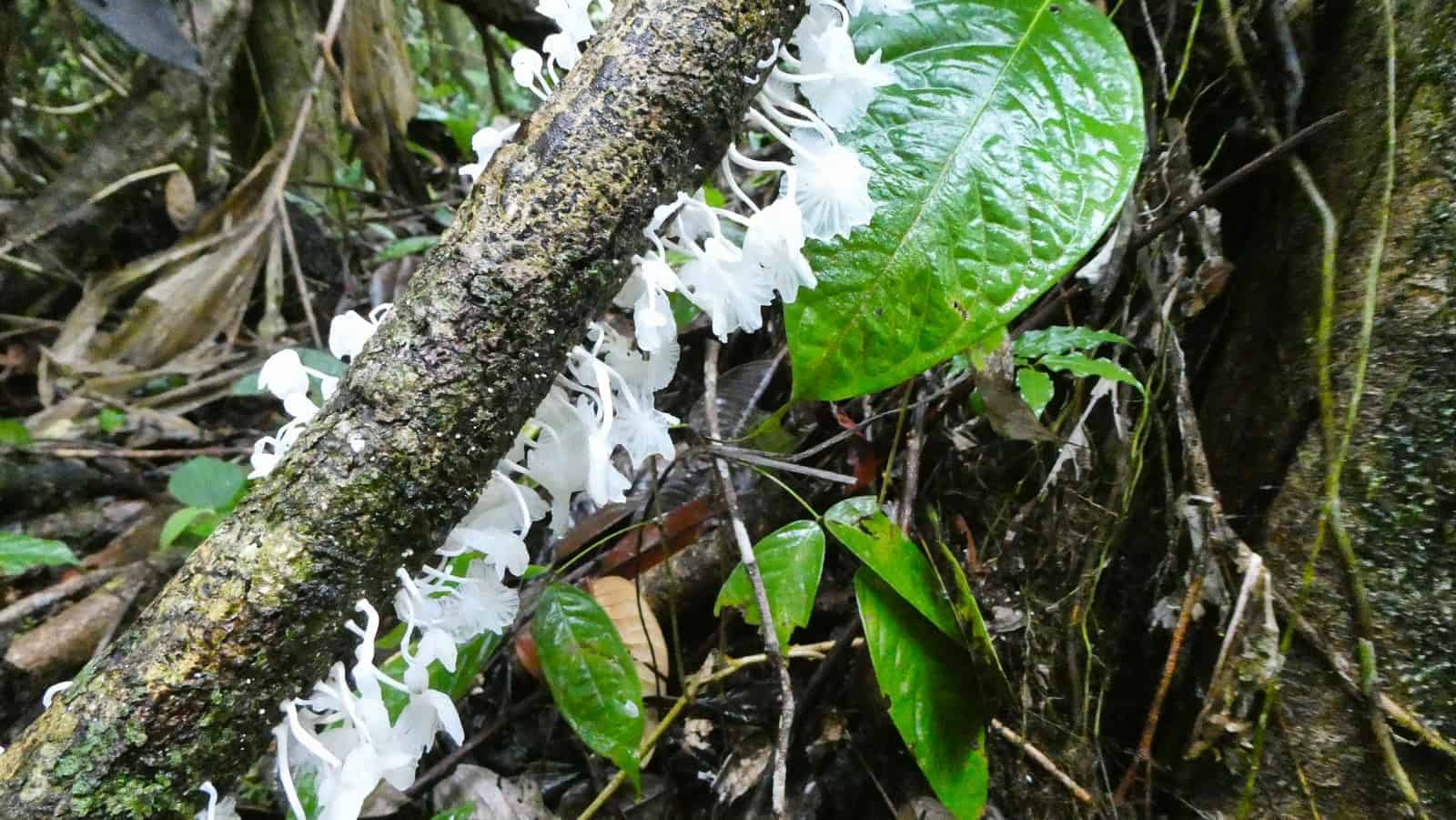
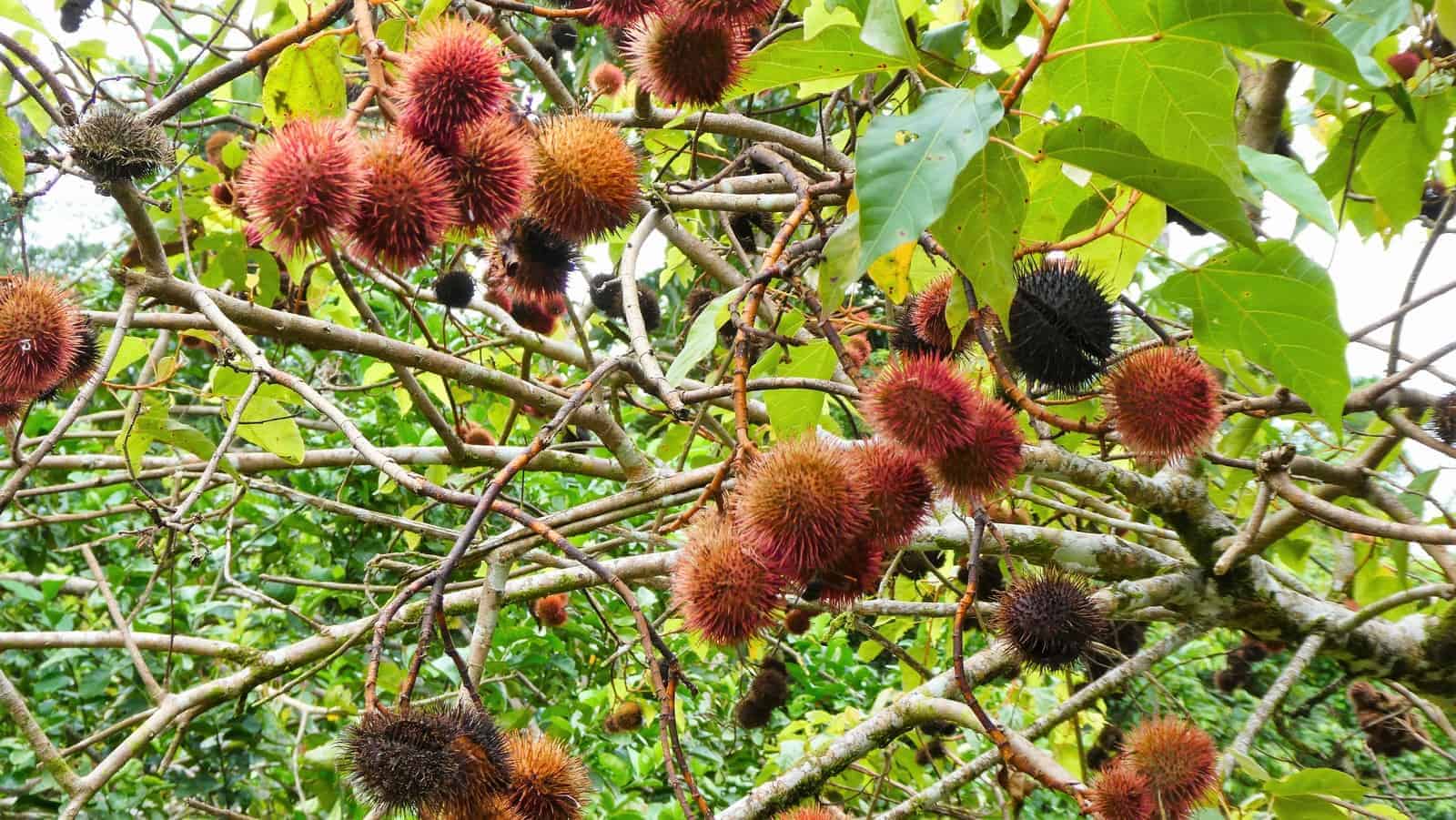
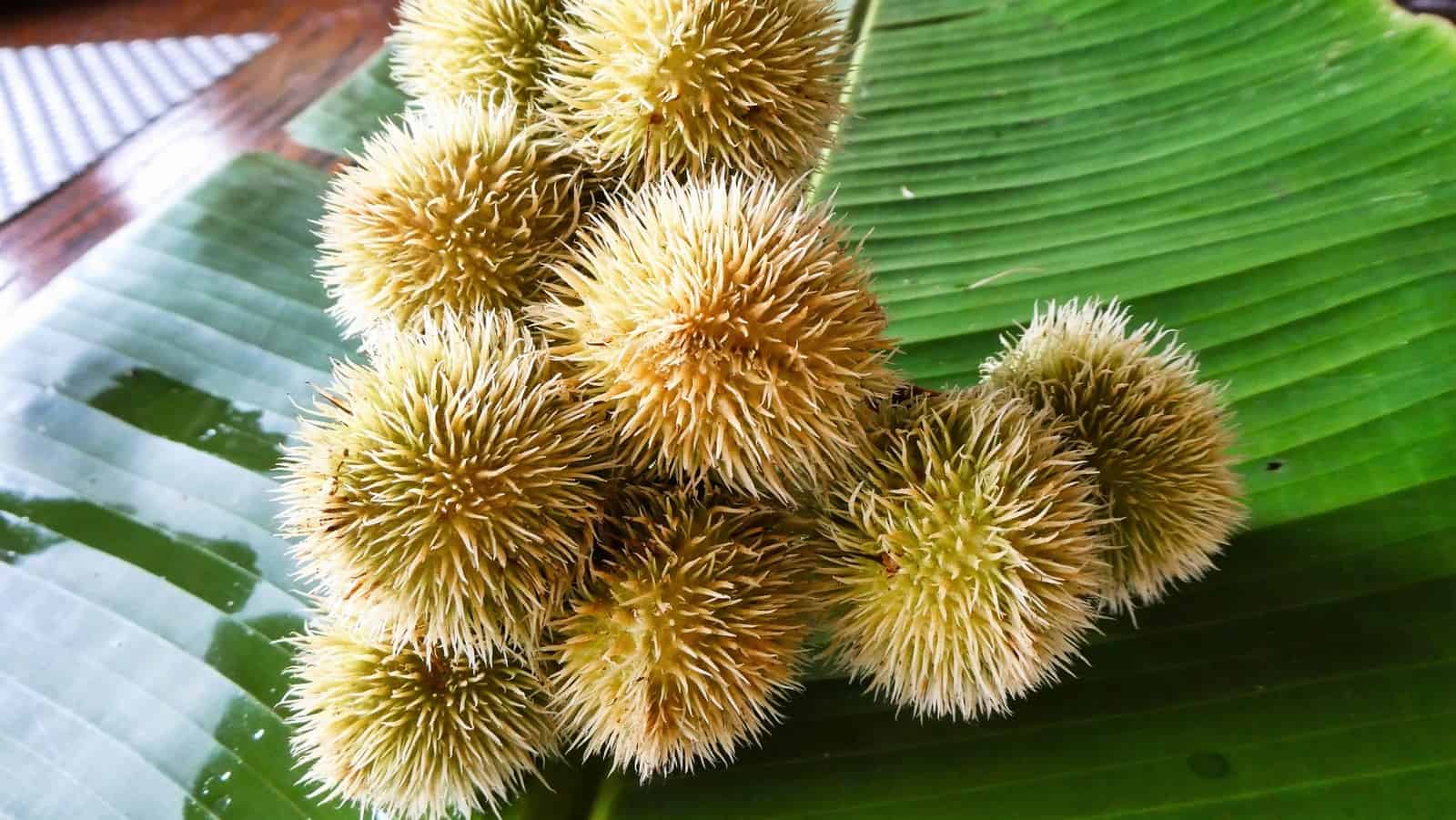
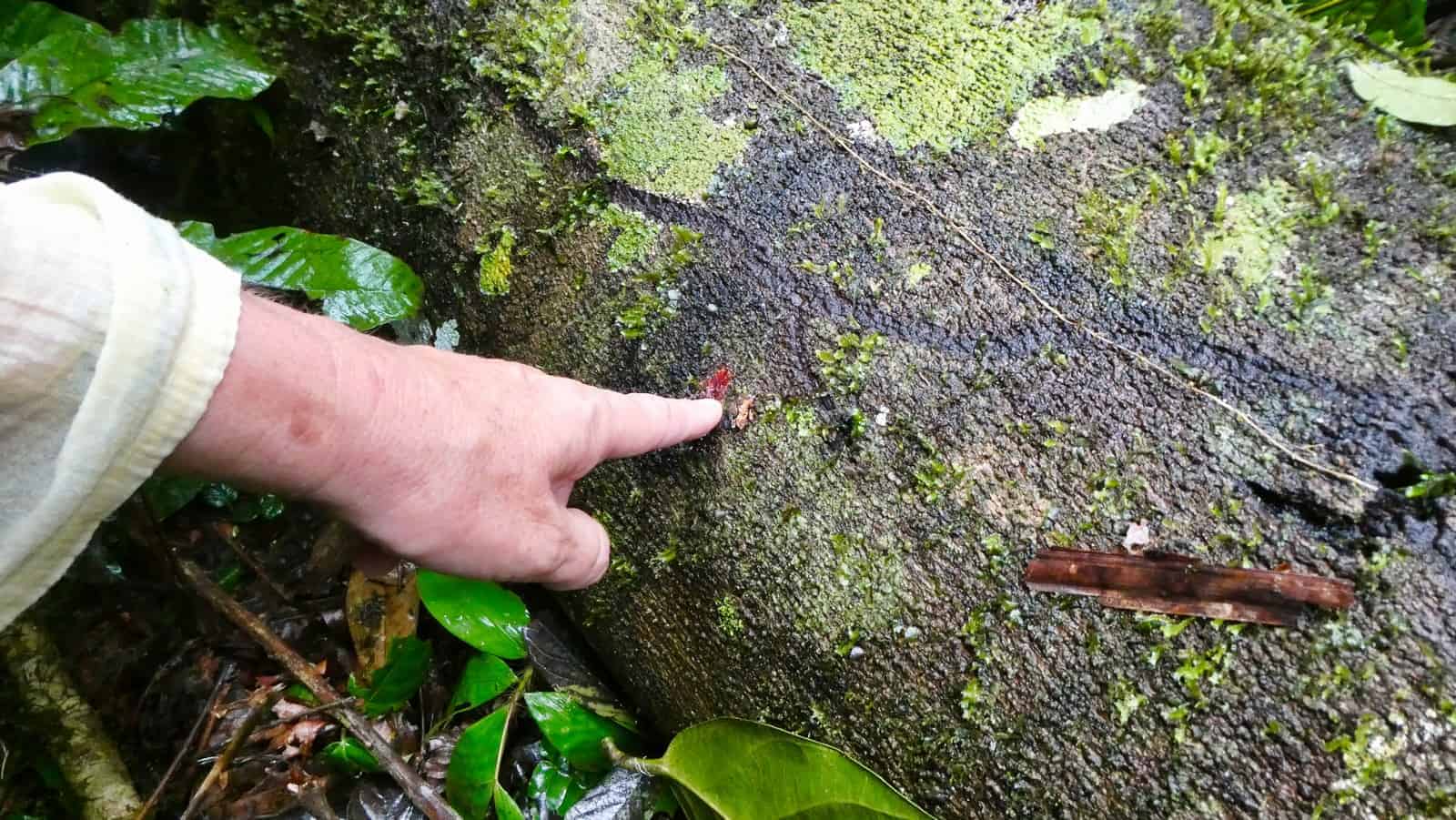
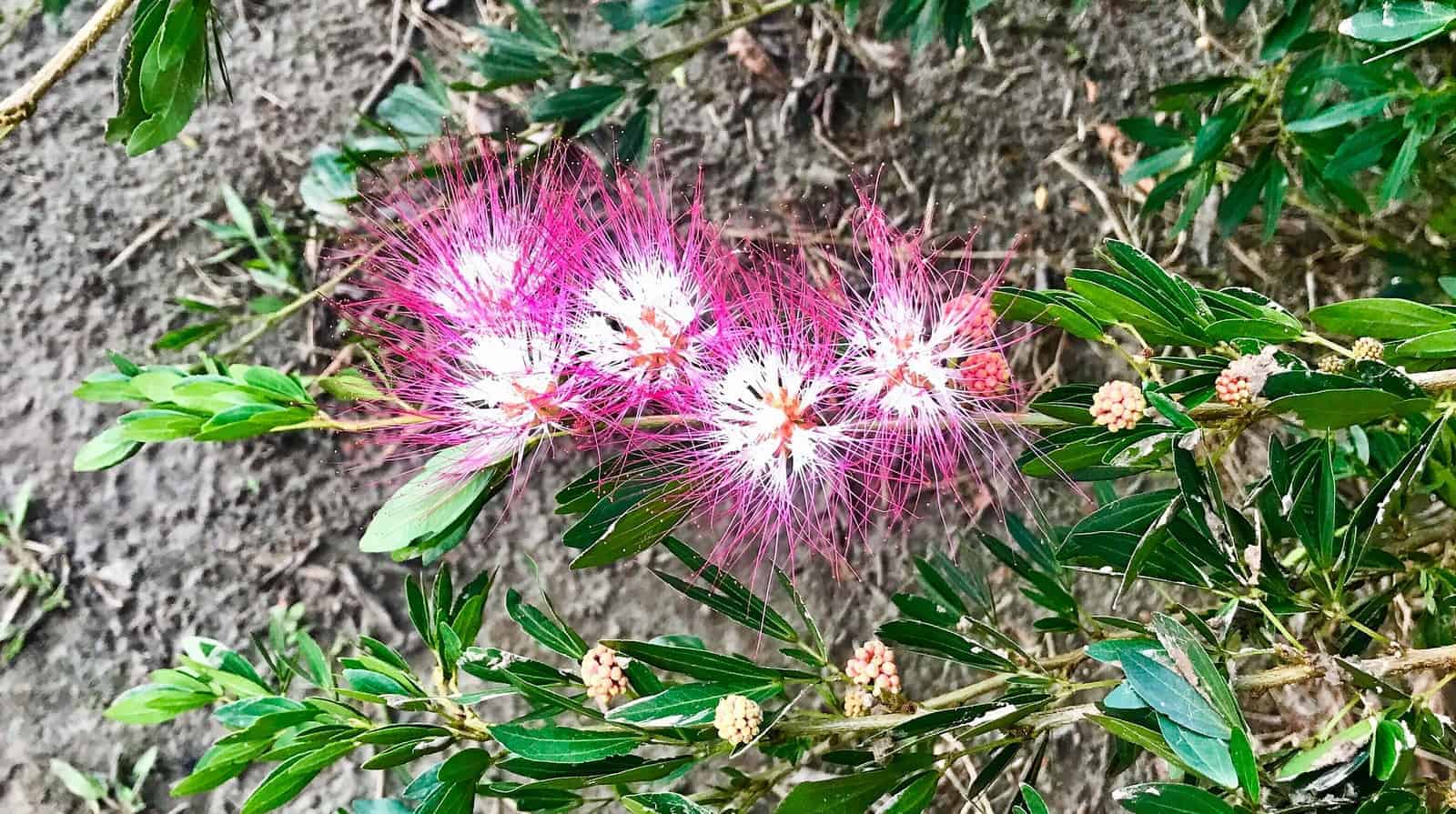
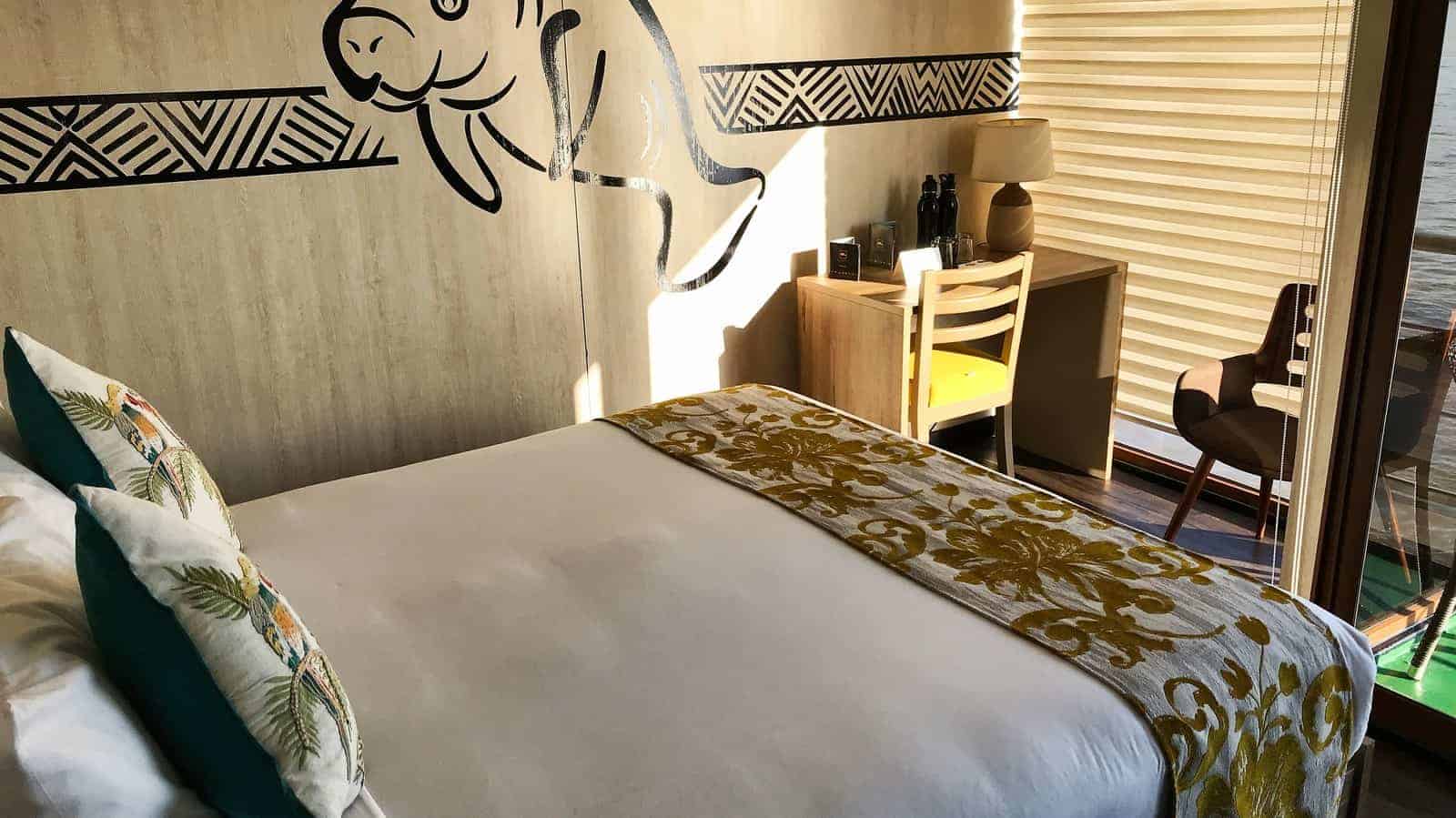
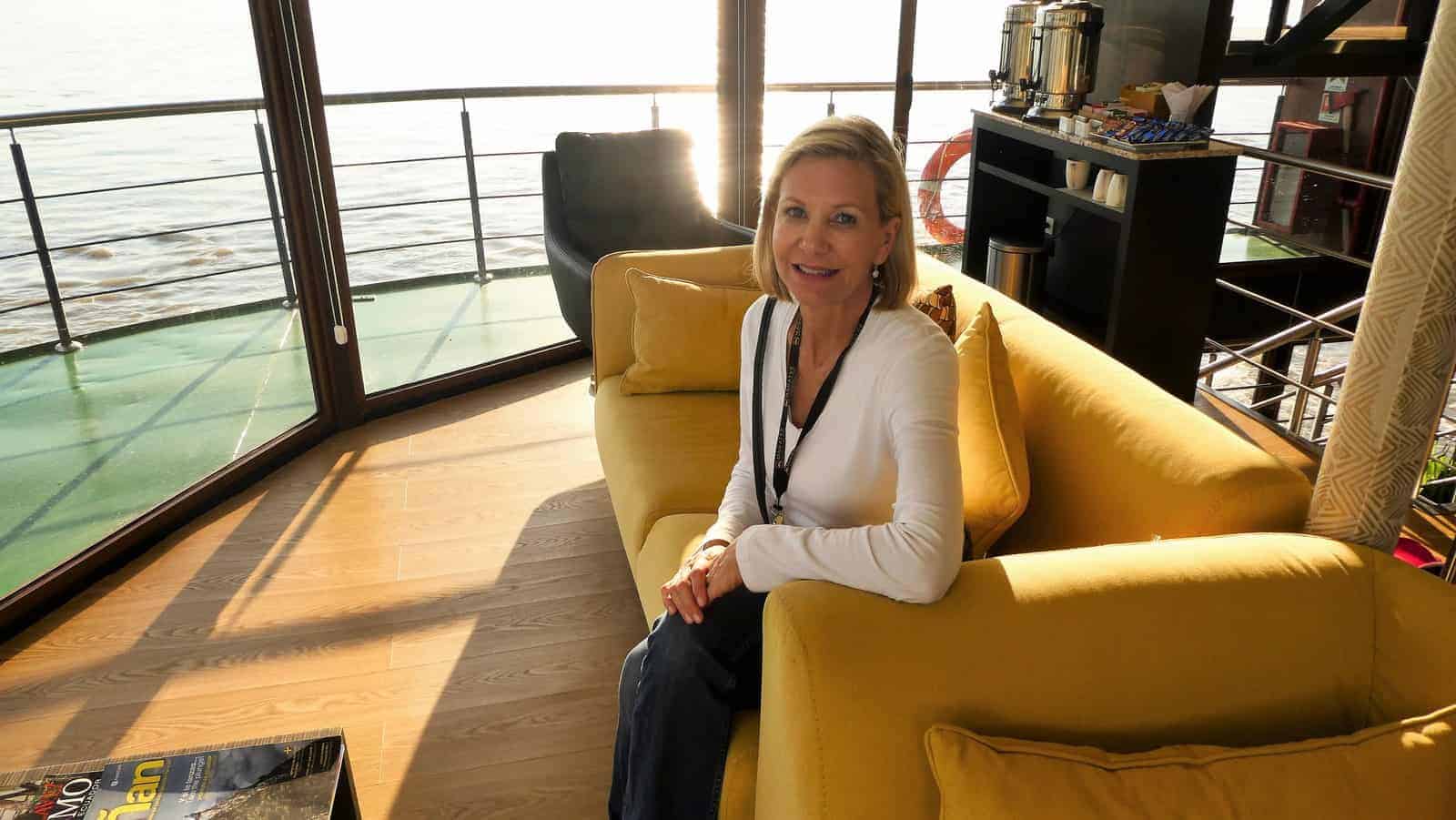
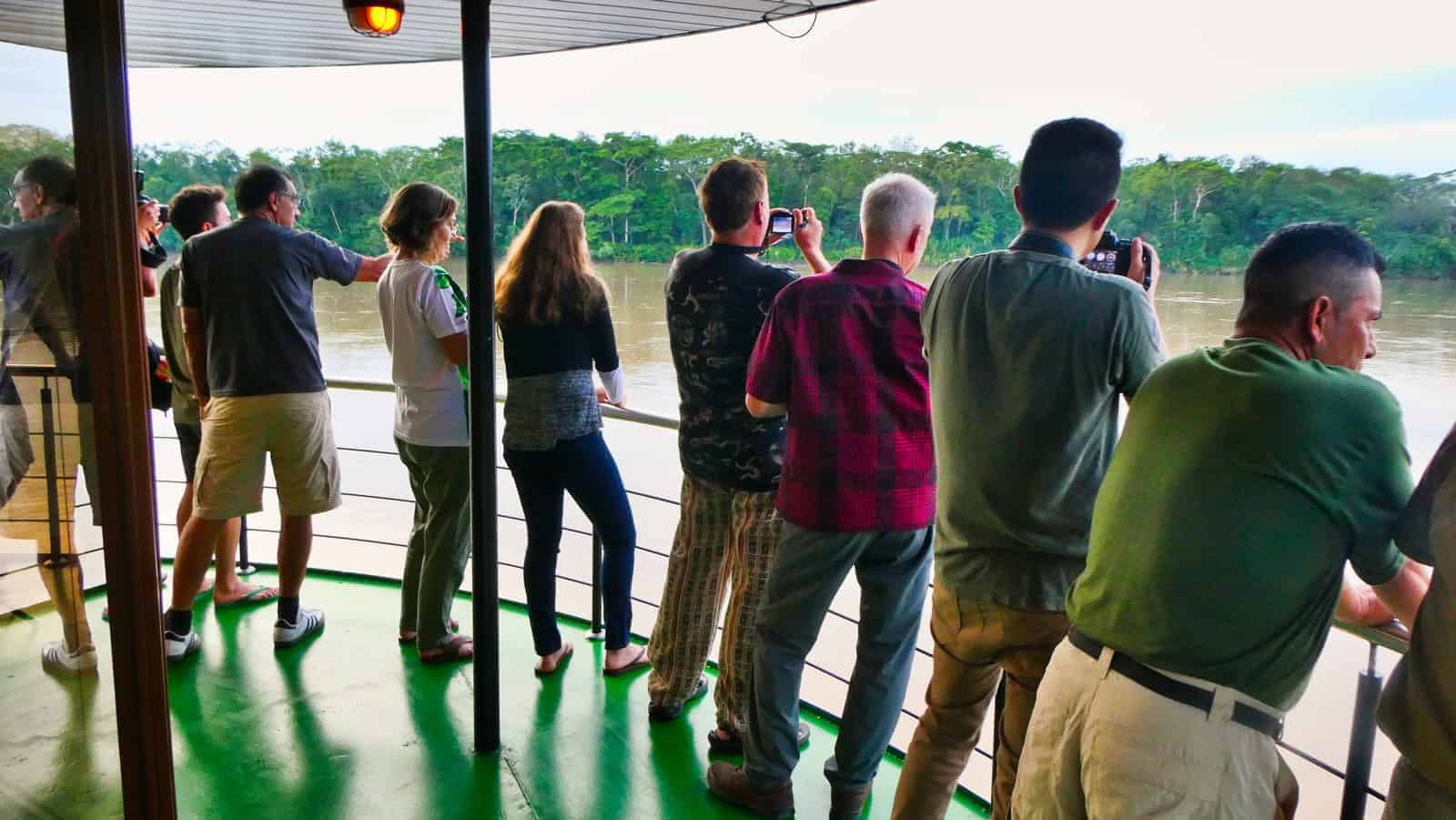
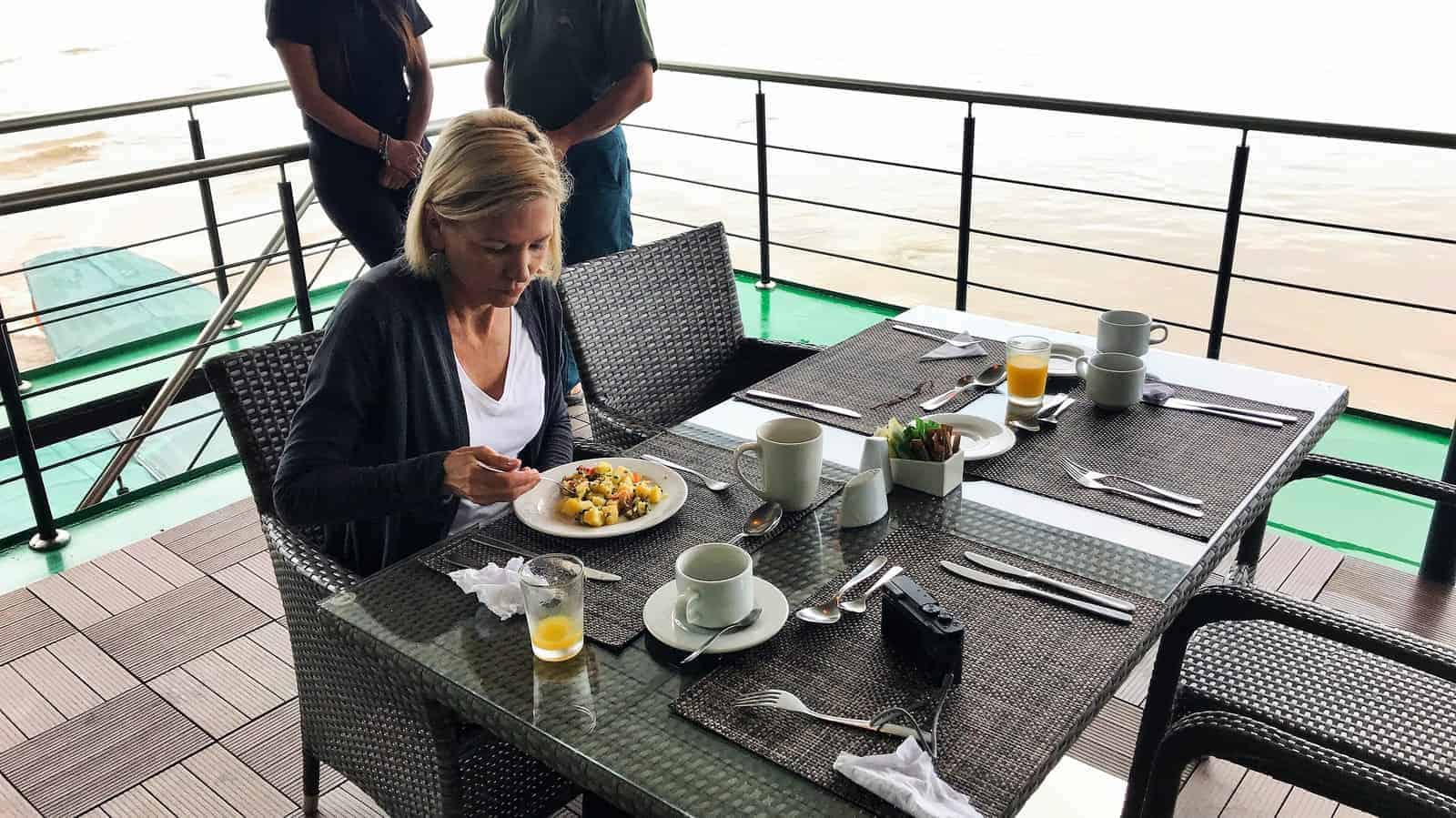
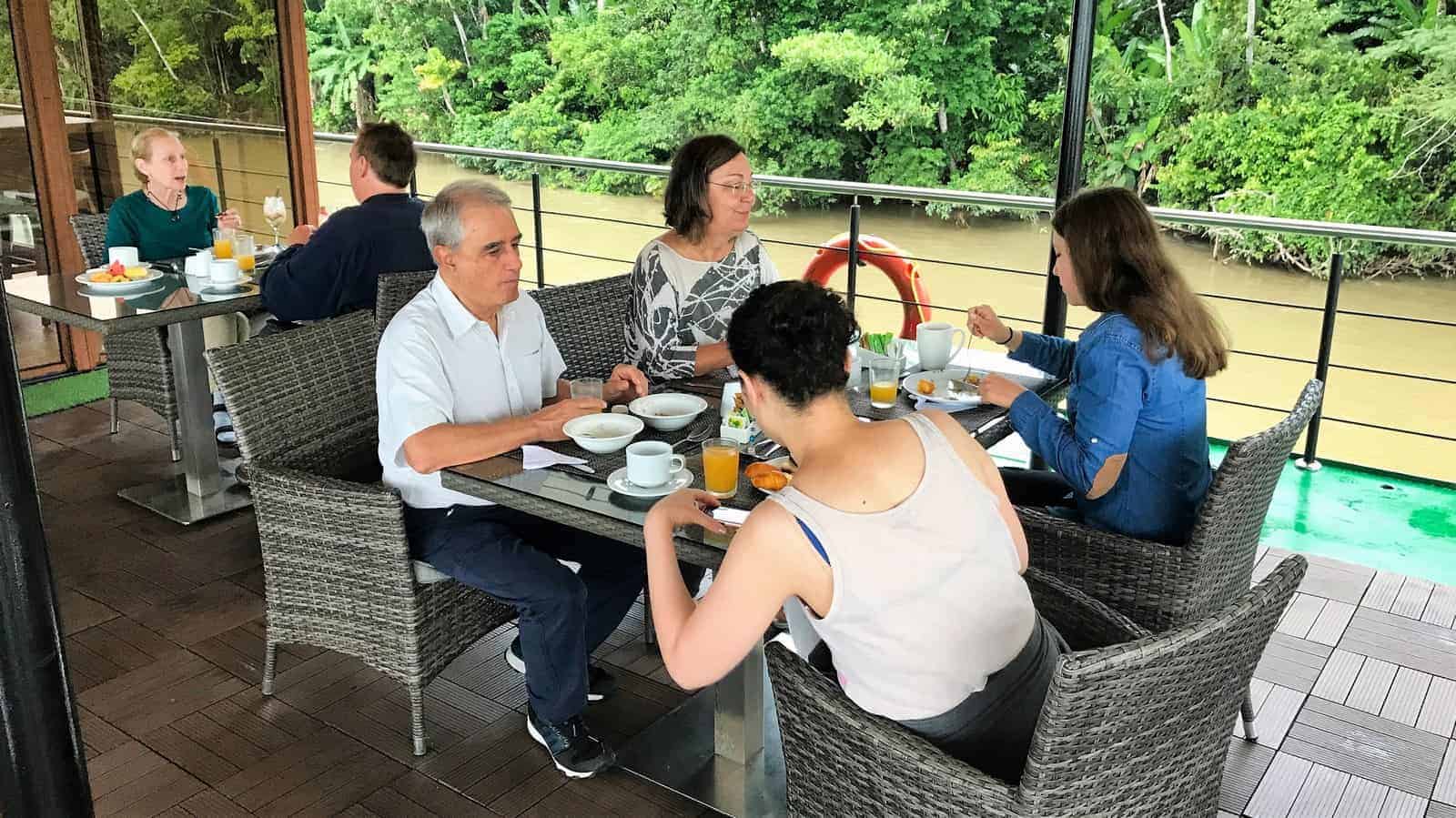
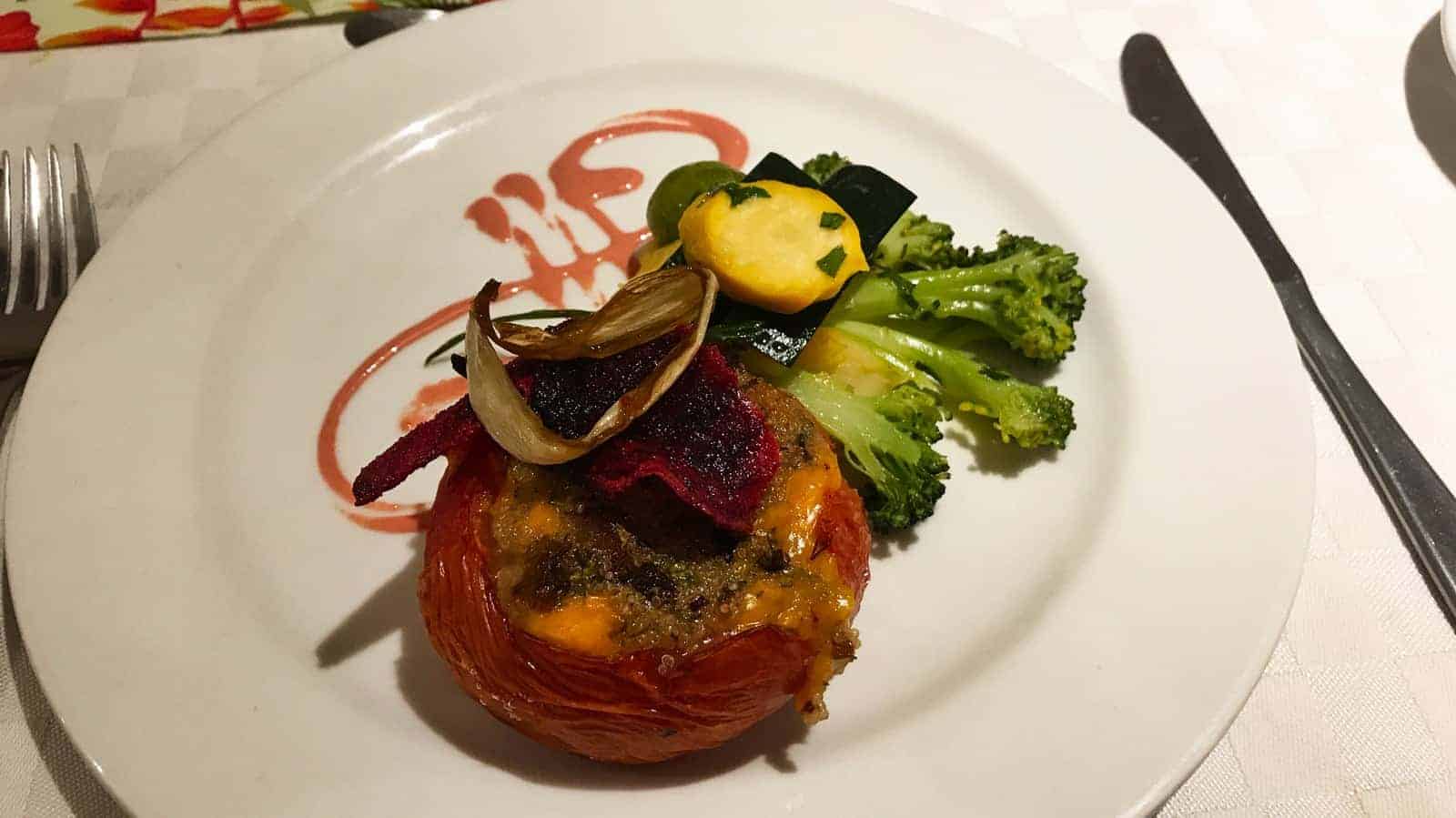

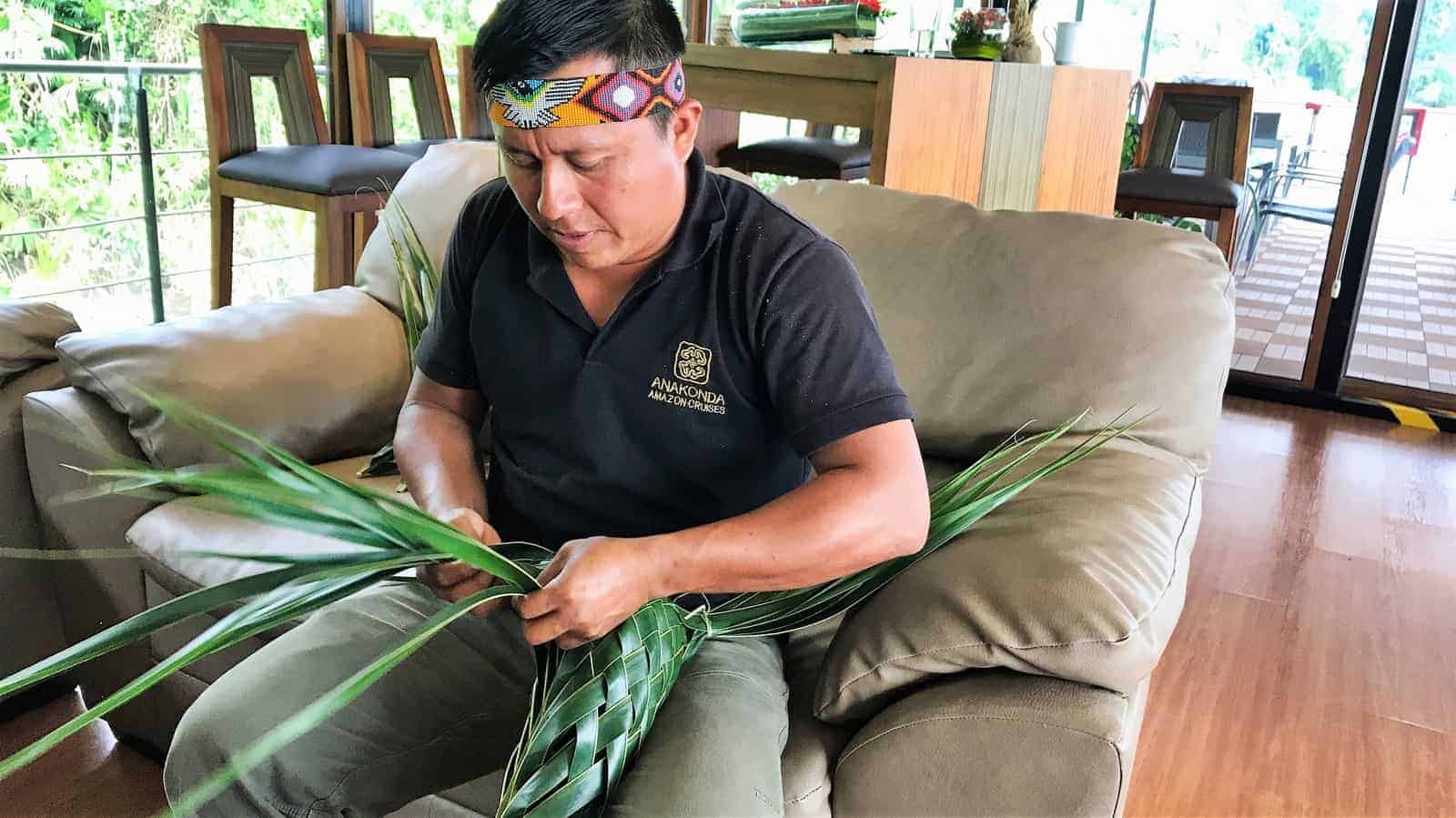
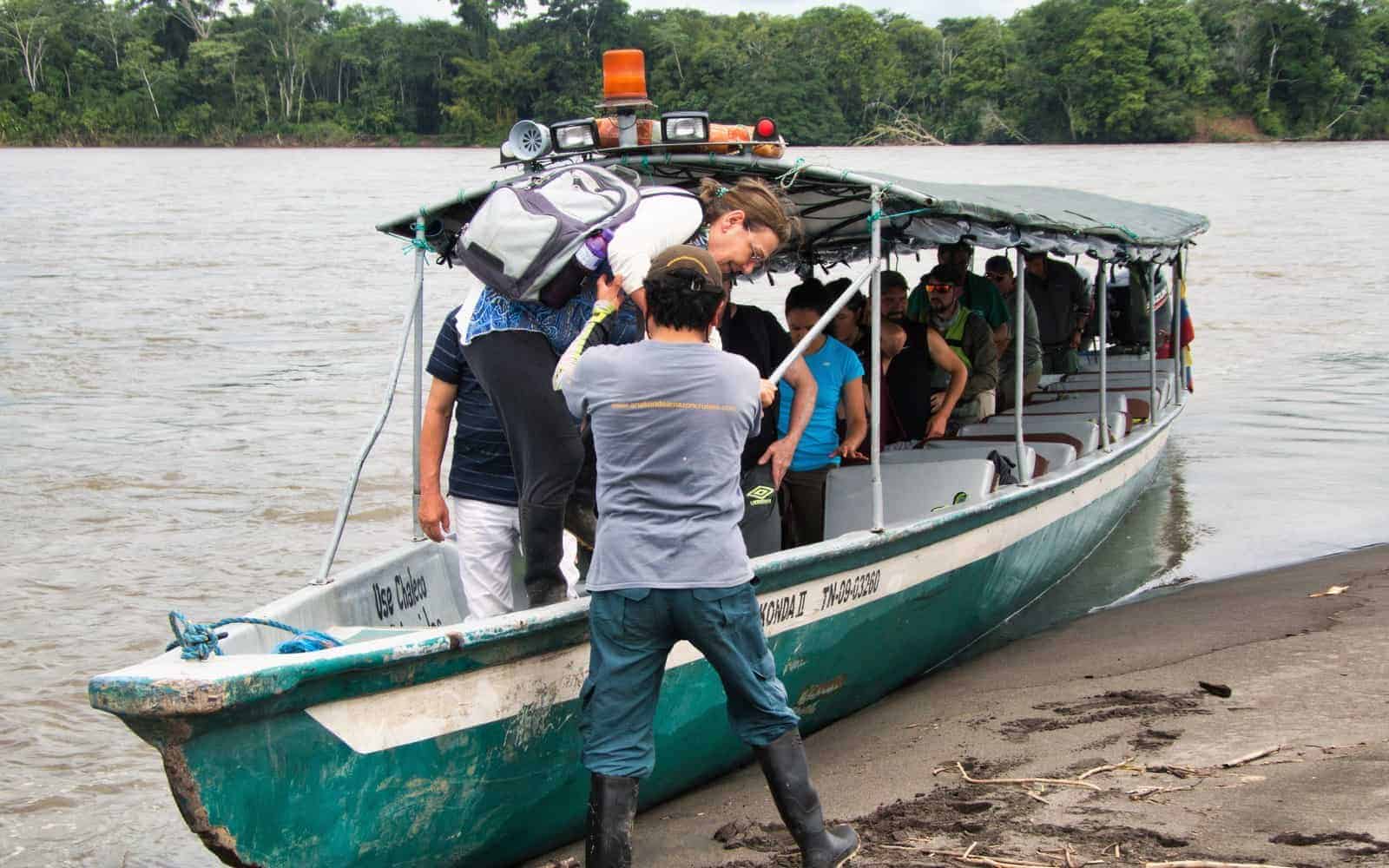
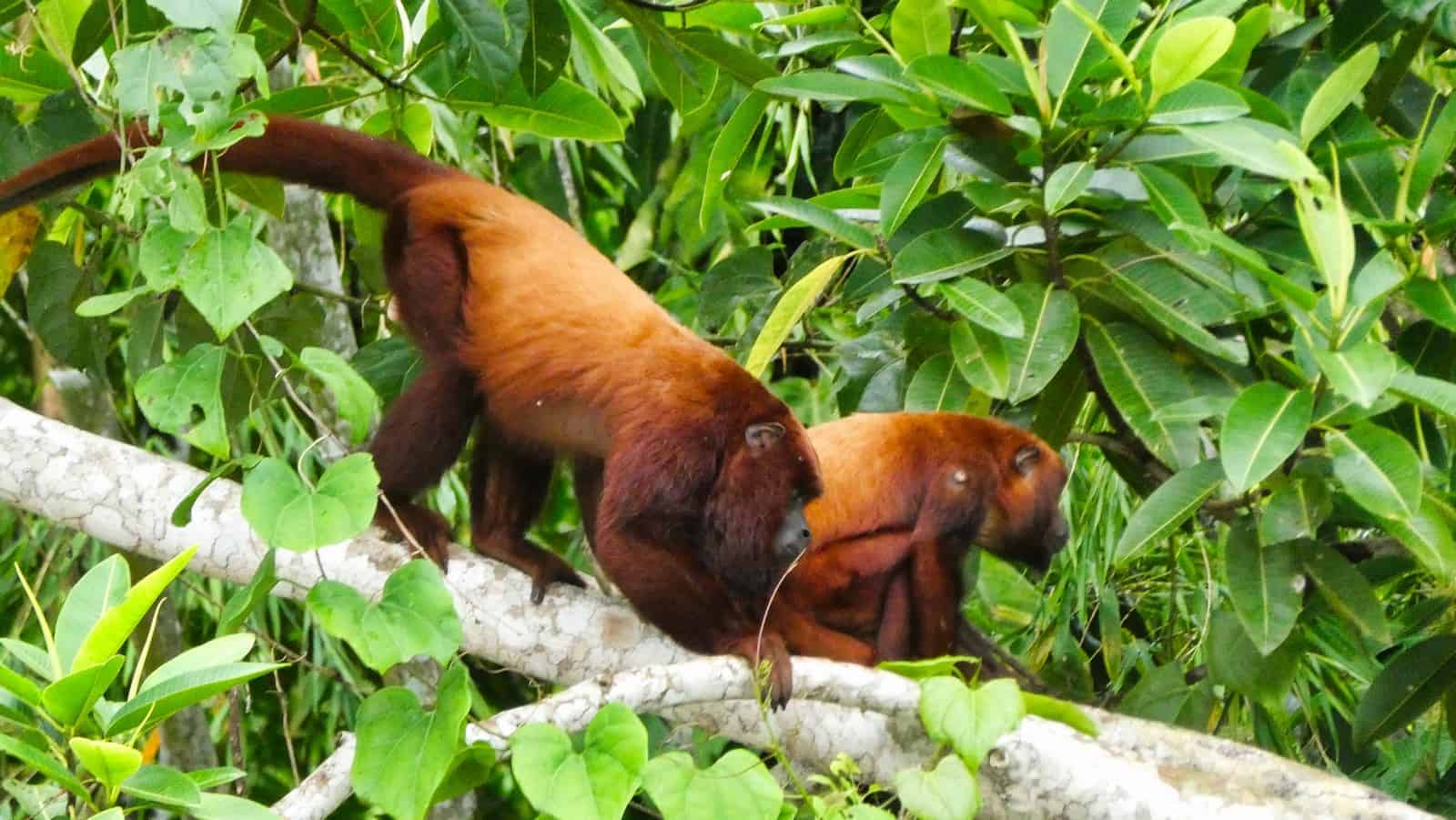
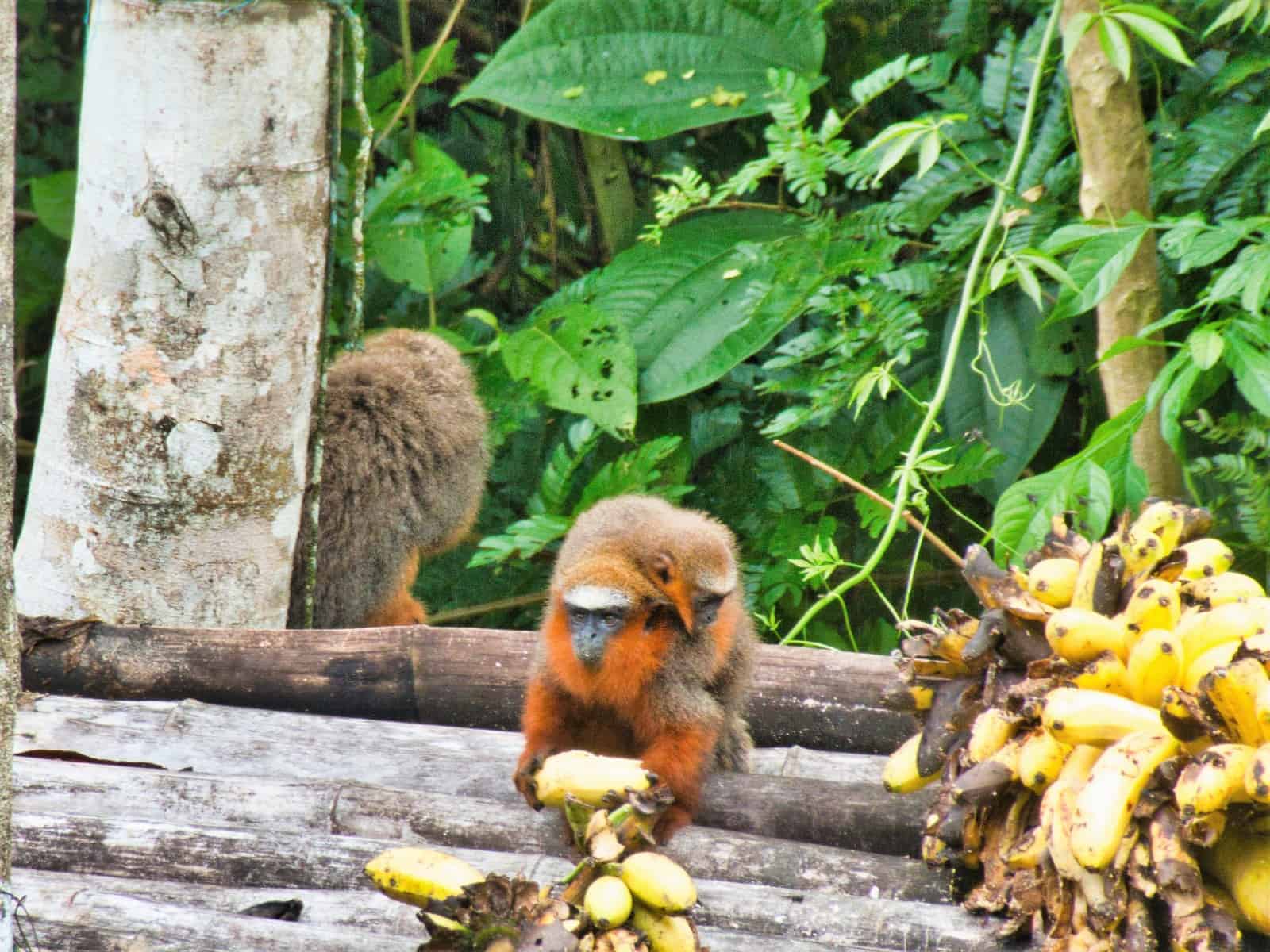
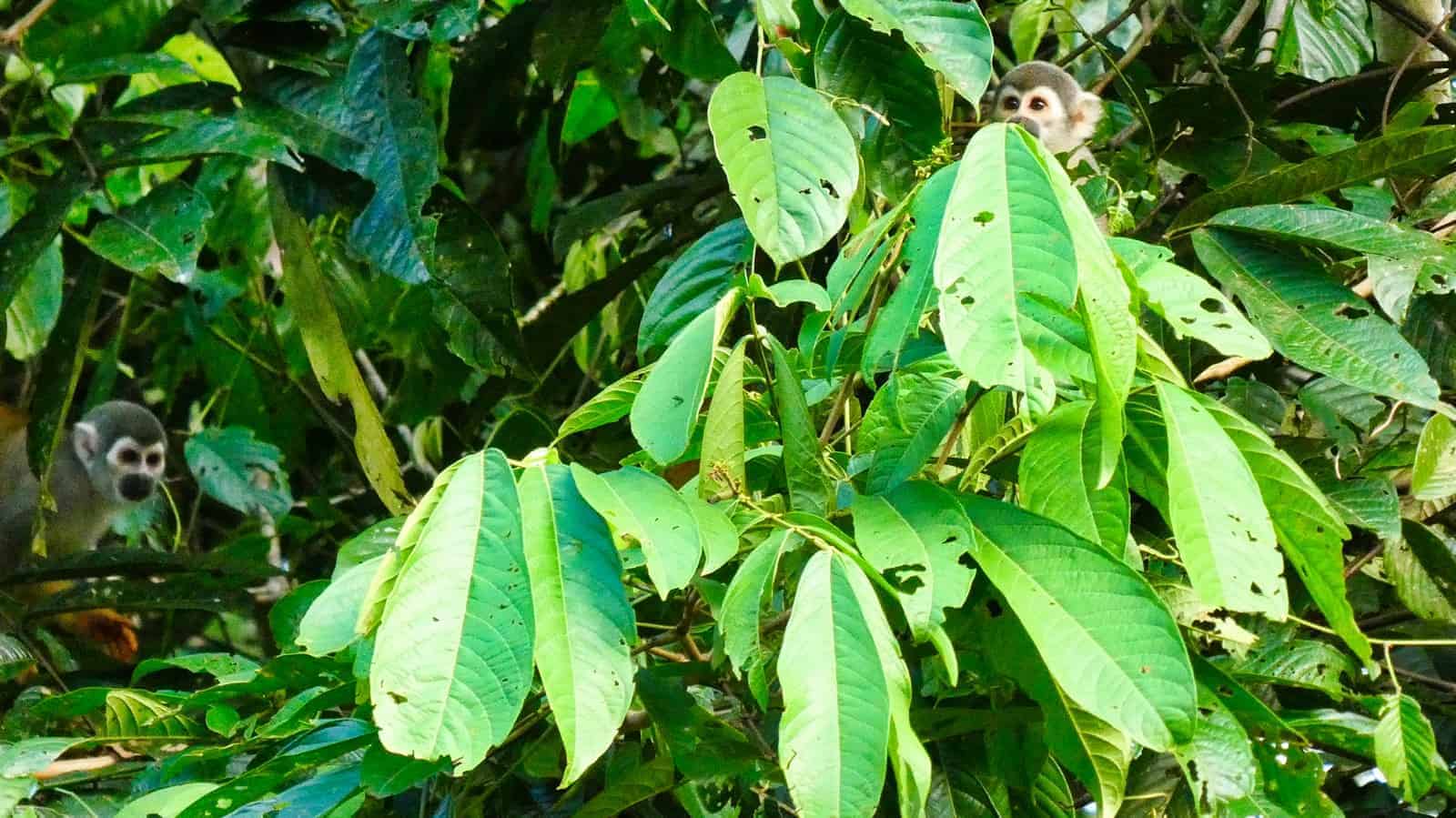
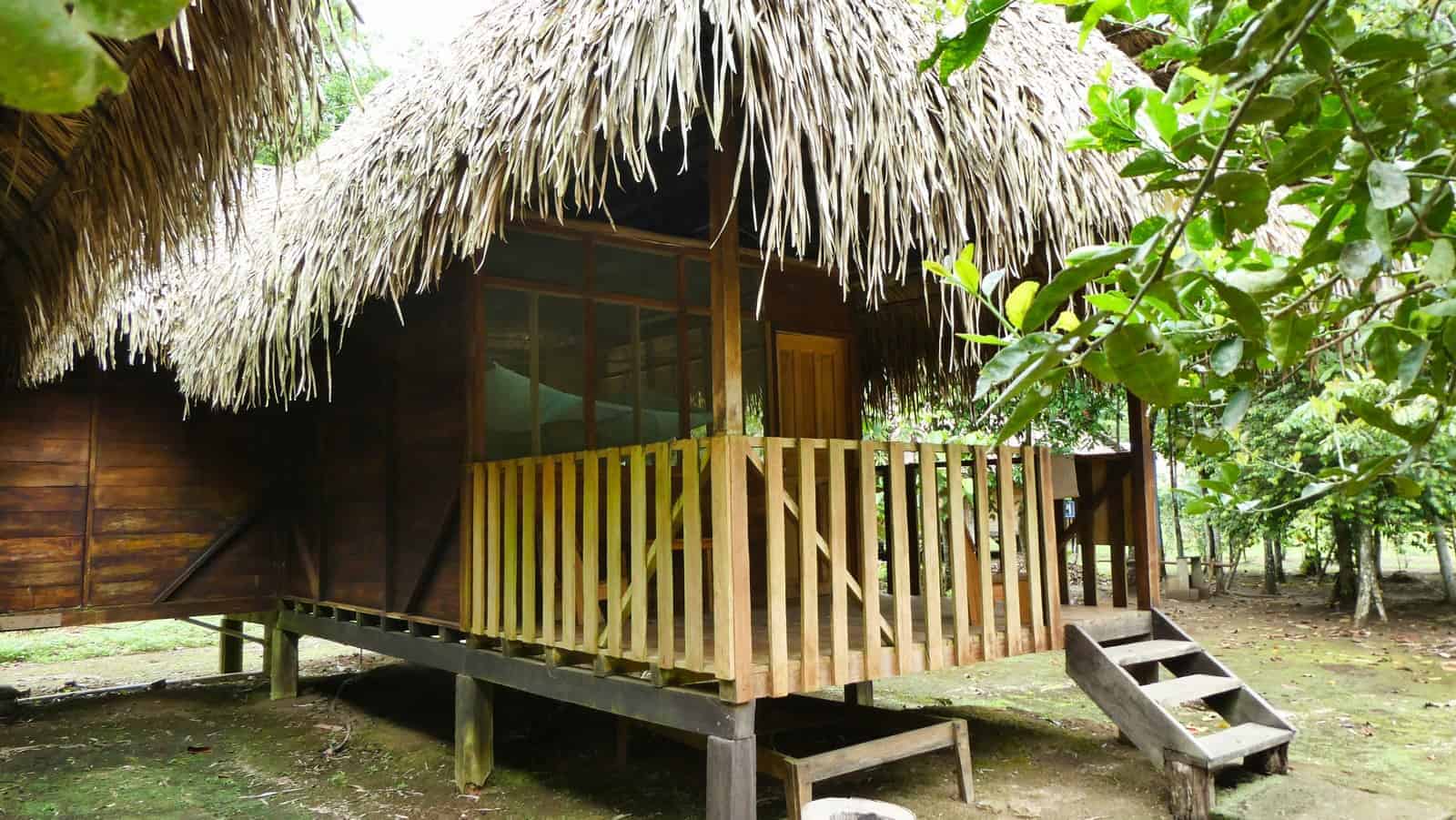
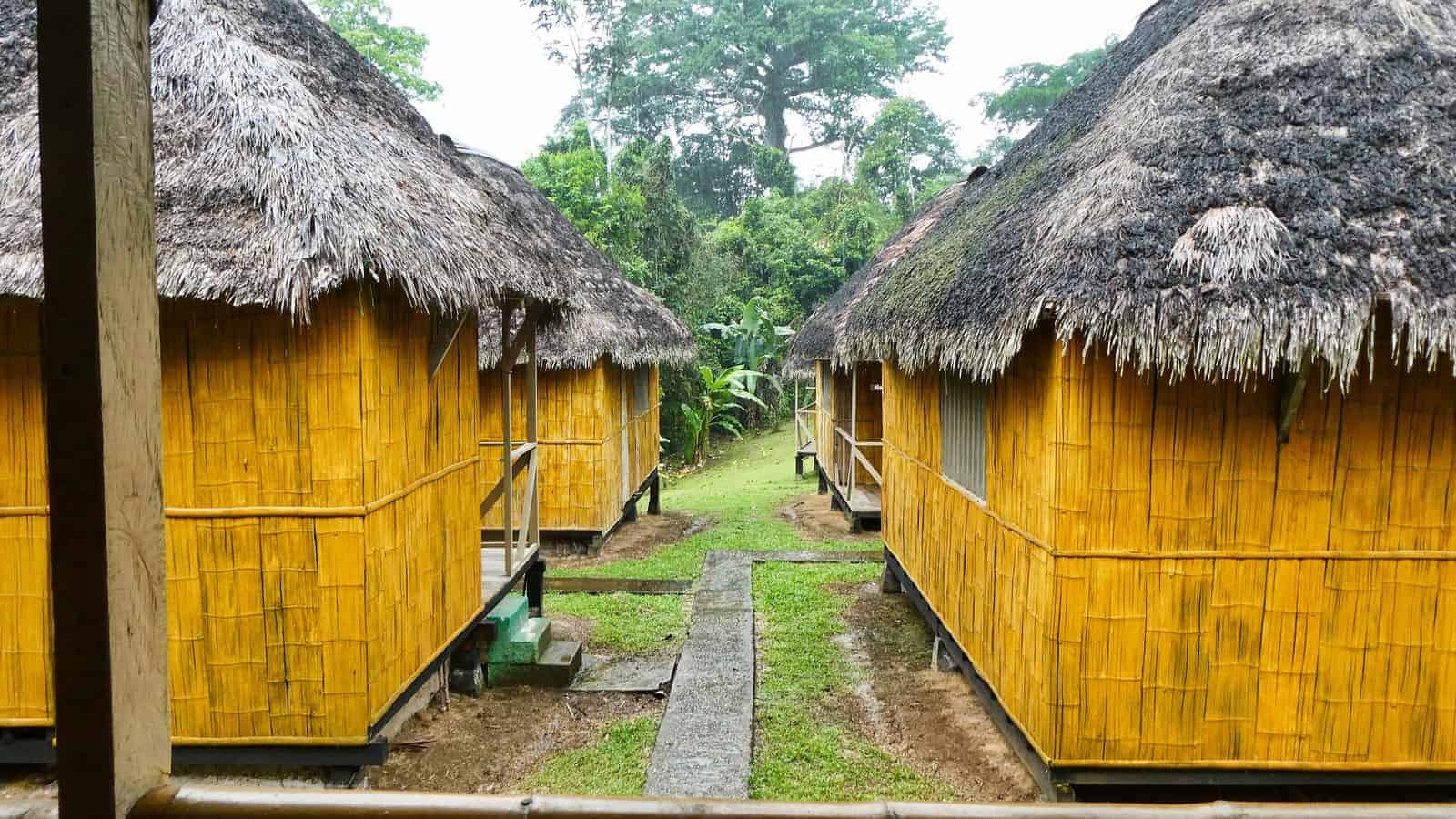

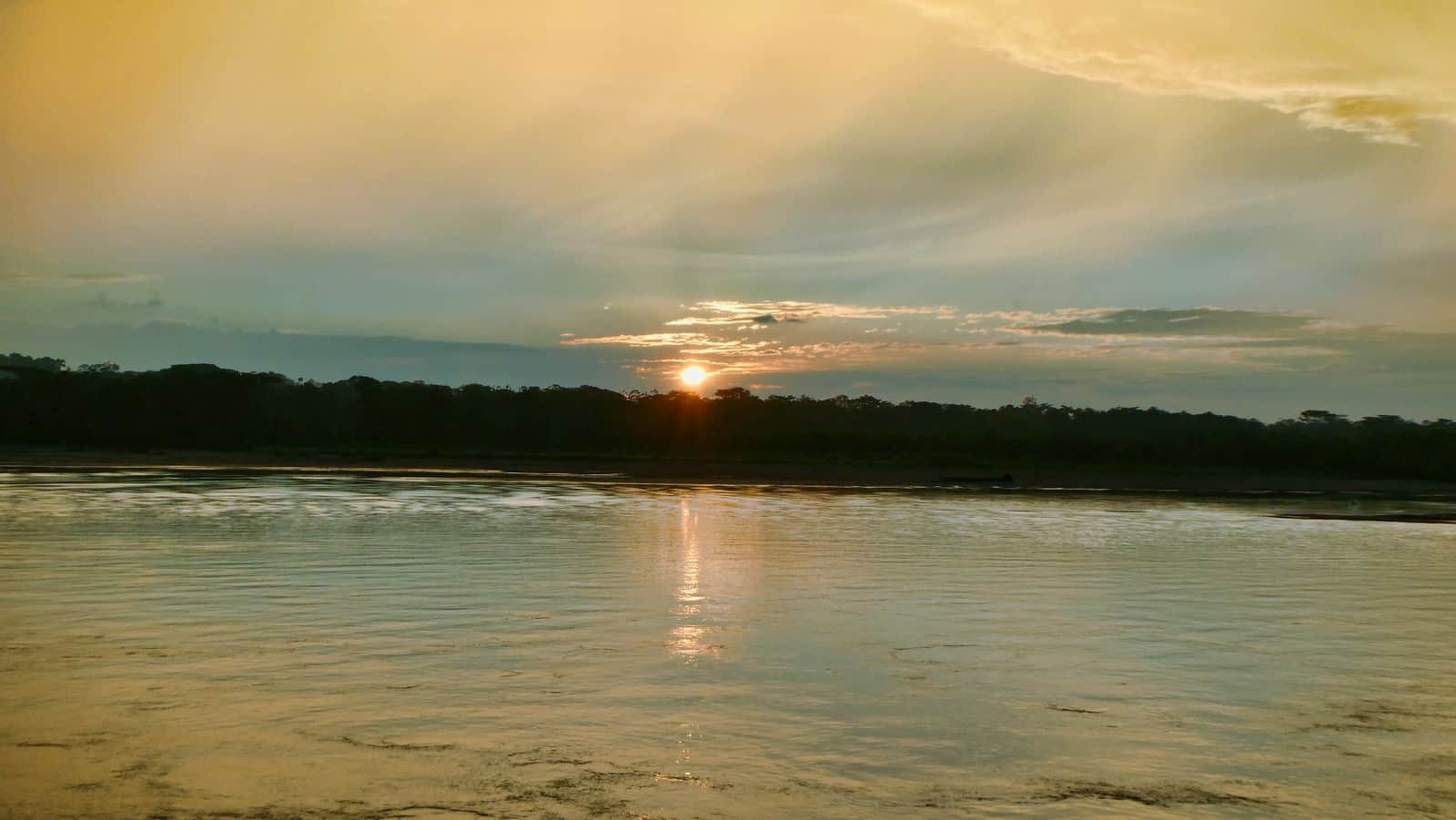
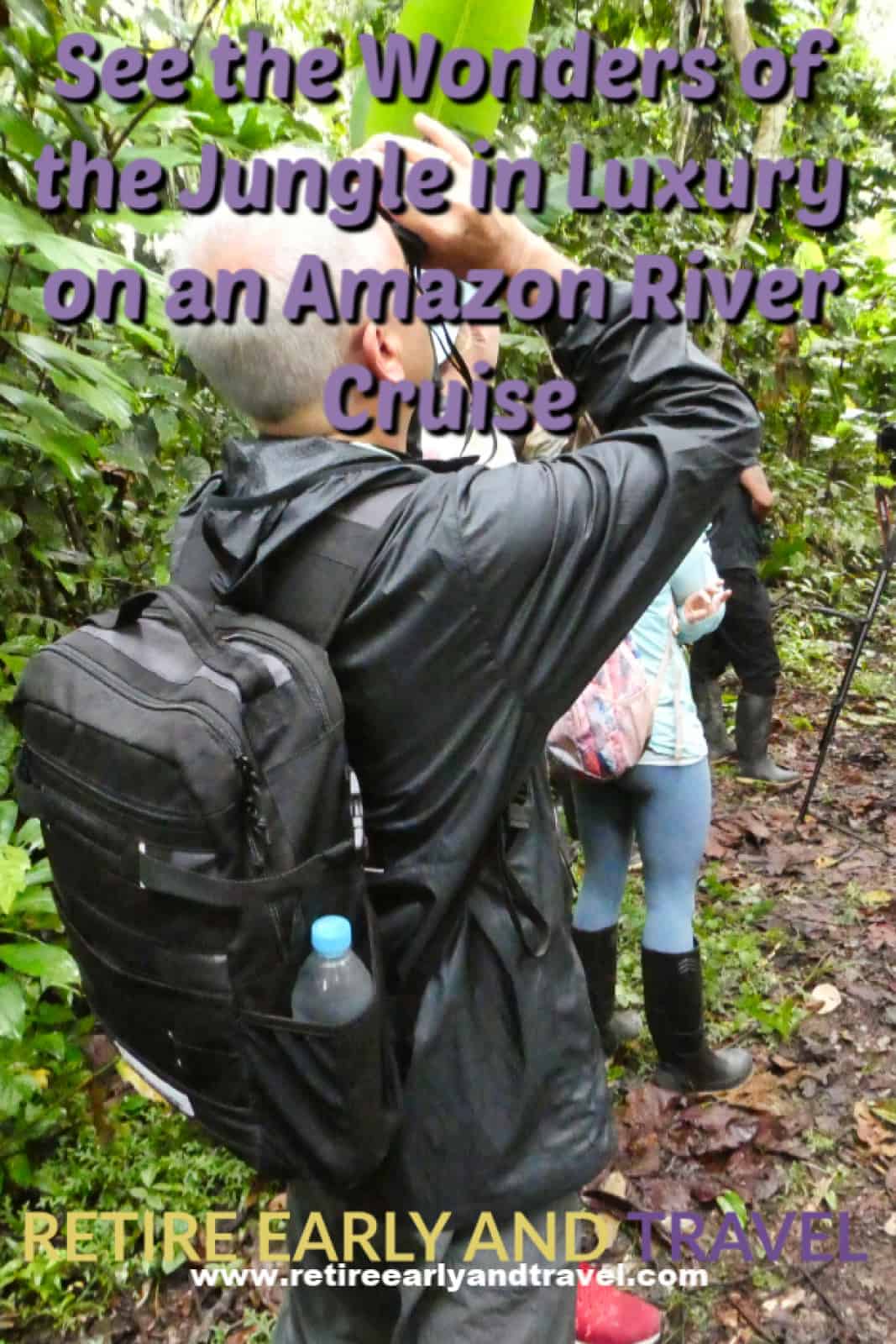
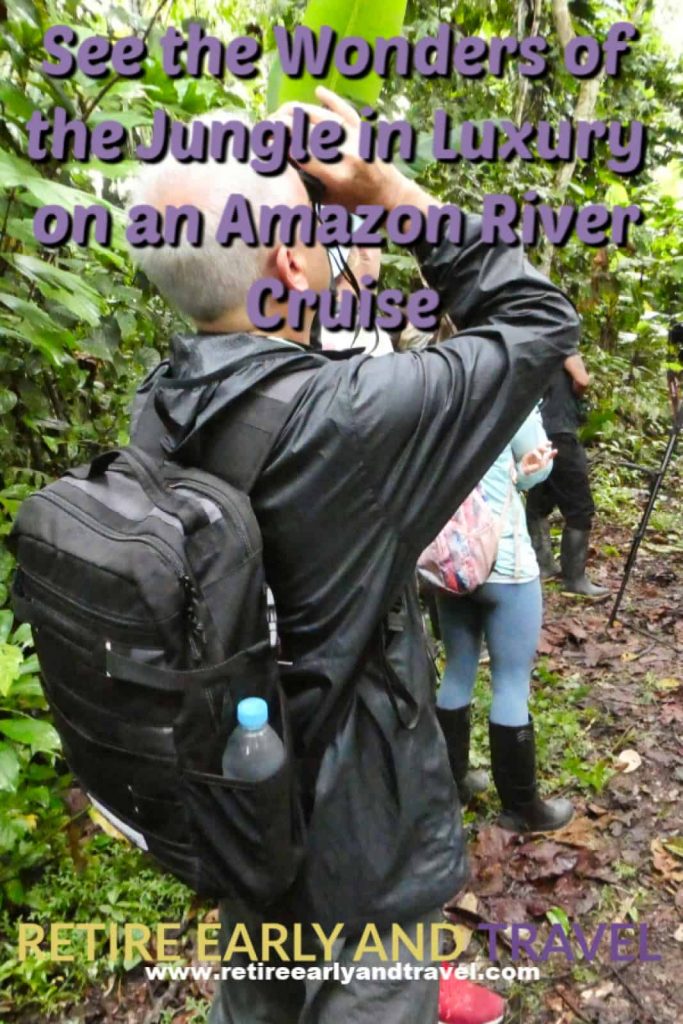
Great post and advice. Very useful information, it clarified things a lot for us. Thanks for the wonderful blog.
The Real Person!
The Real Person!
Thanks Shirdi. We are glad you found it useful
Awesome Blog! It’s a great spot to find new information. Thank you so much for this wonderful article.
The Real Person!
The Real Person!
Thanks Sandy and you’re welcome.
It is an informative article. I Got some good idea by reading this topic. Great information thanks for sharing this post.
The Real Person!
The Real Person!
Thanks Shirdi.
Great post. Articles that have meaningful and insightful comments are more enjoyable, at least to me. It’s interesting to read what other people thought and how it relates.
The Real Person!
The Real Person!
Thank you Pat
Thanks to share your wonderful Knowledge here. Thank You.